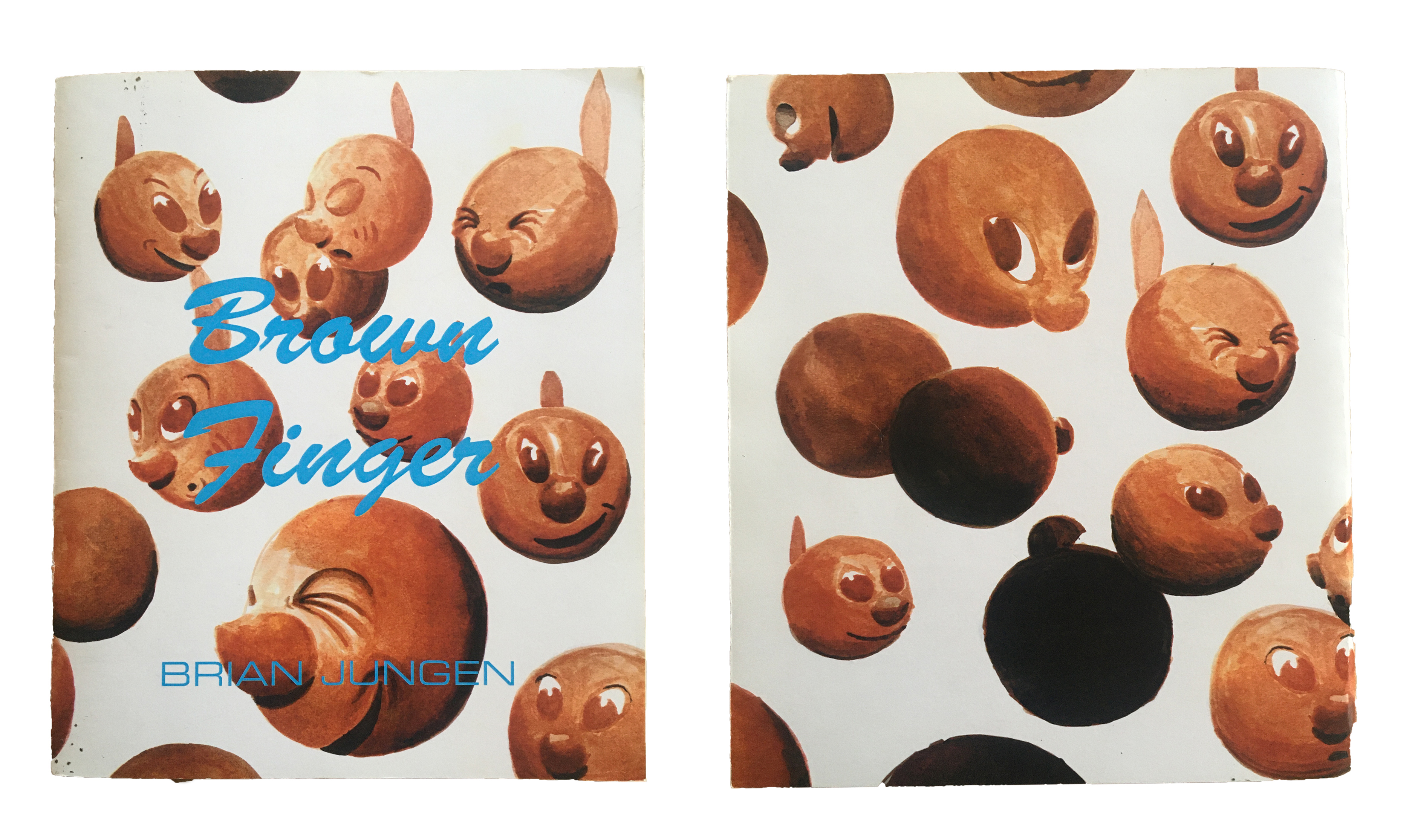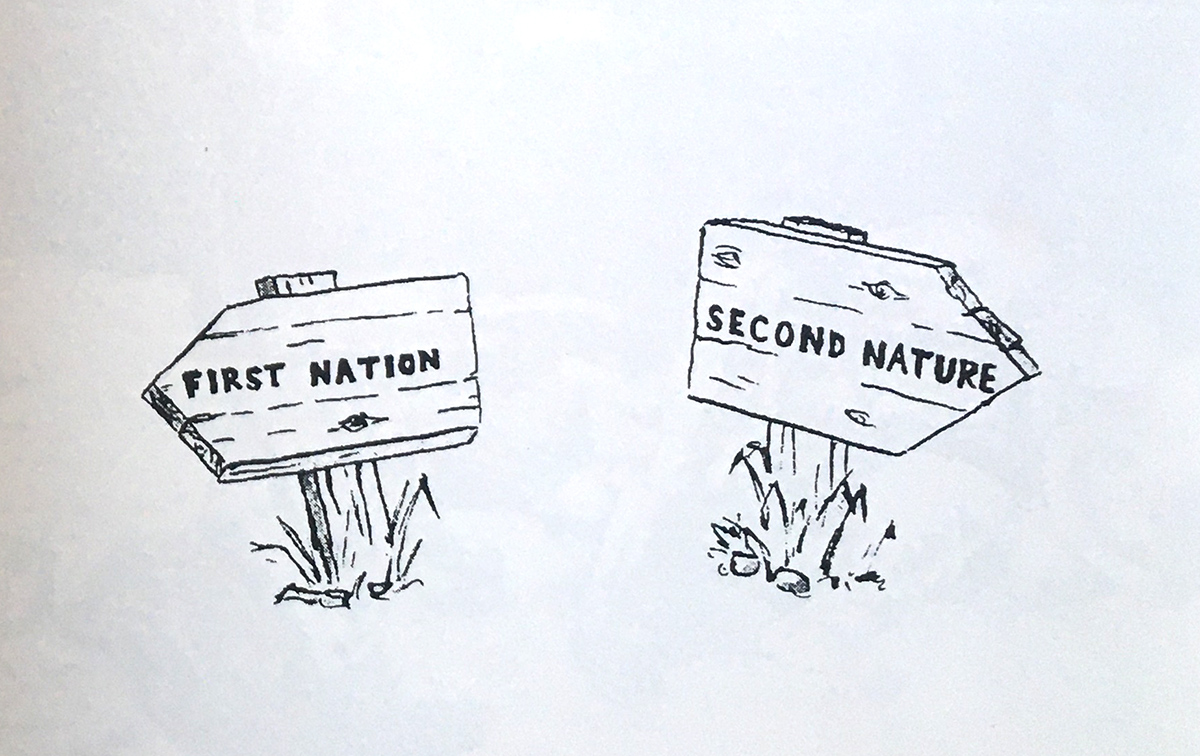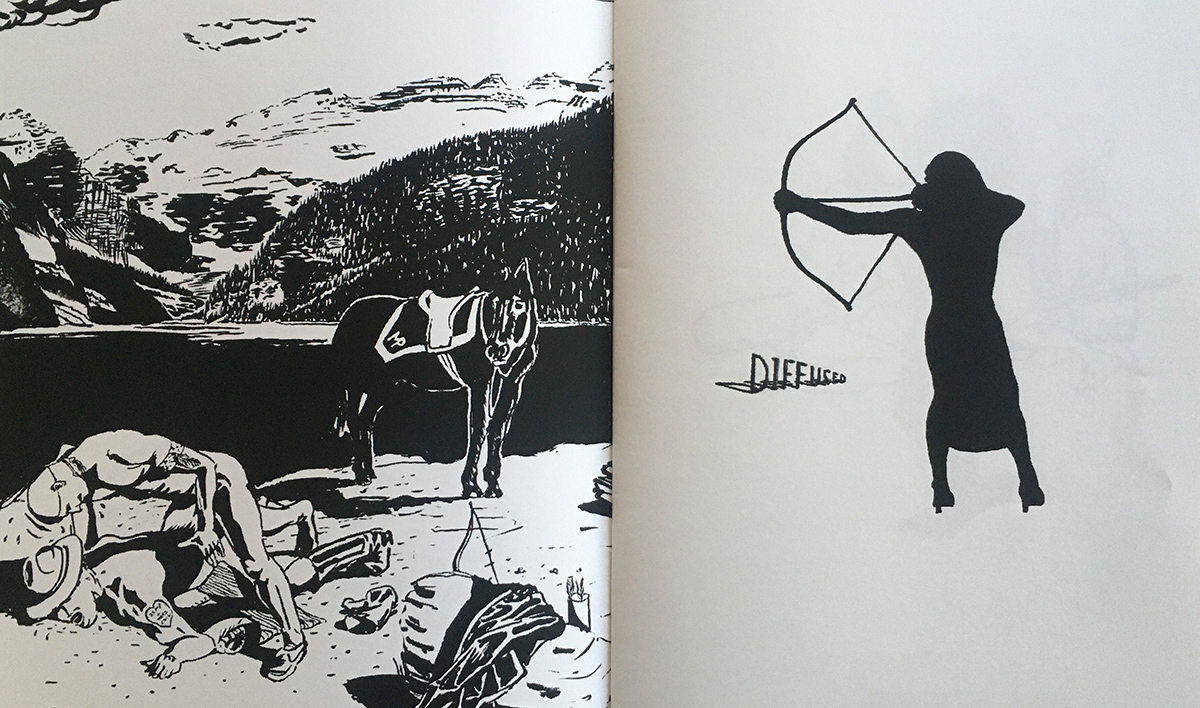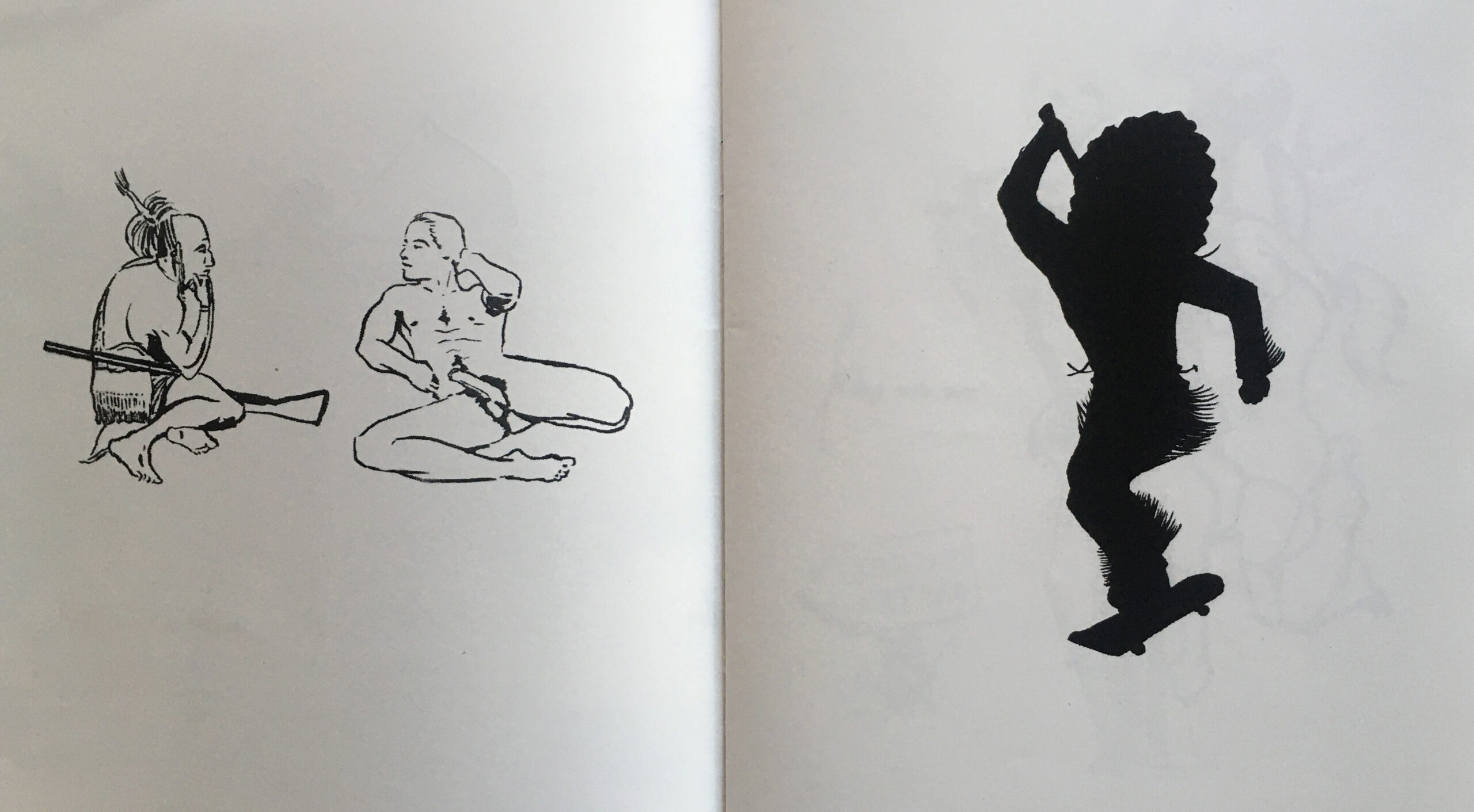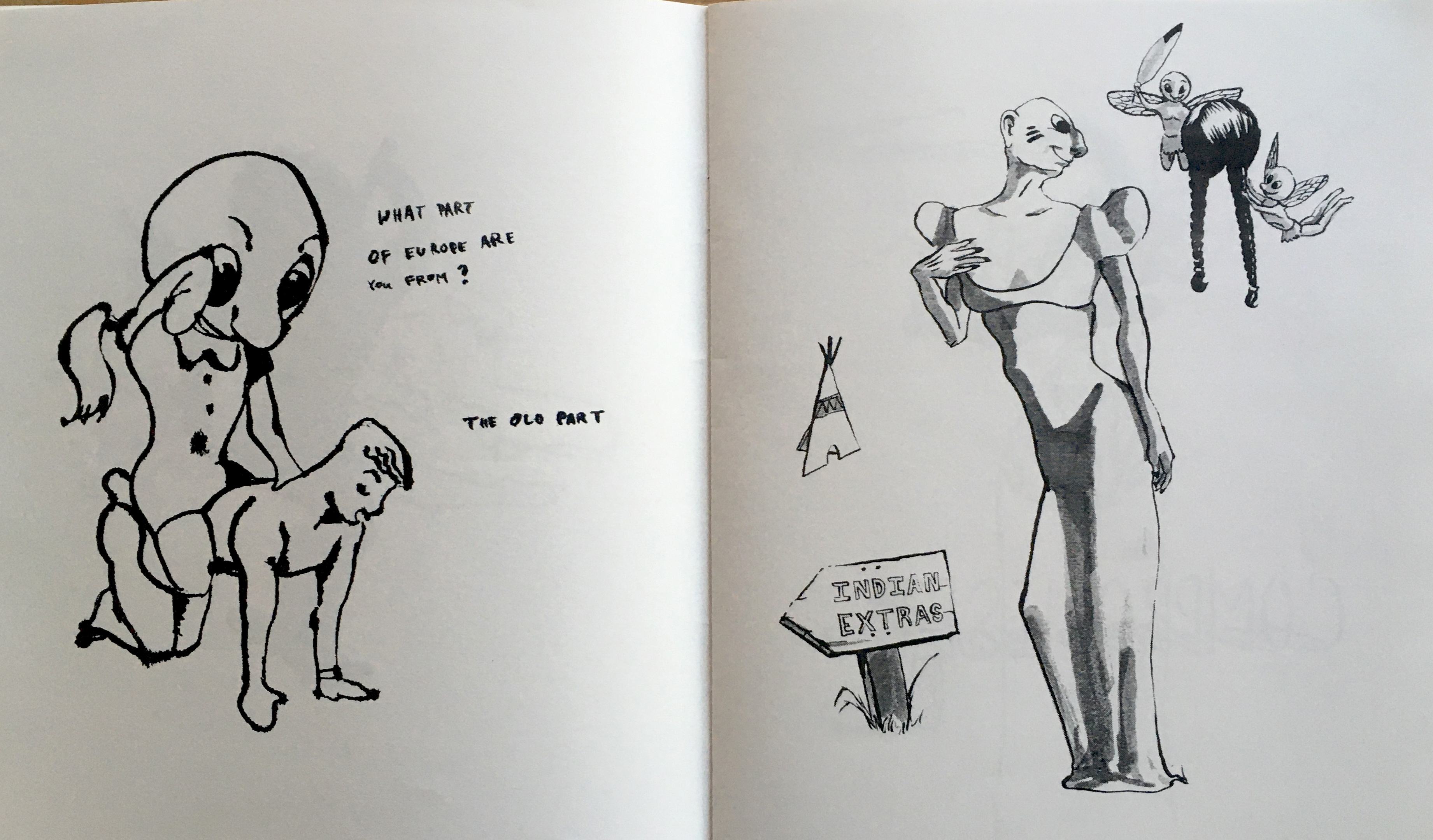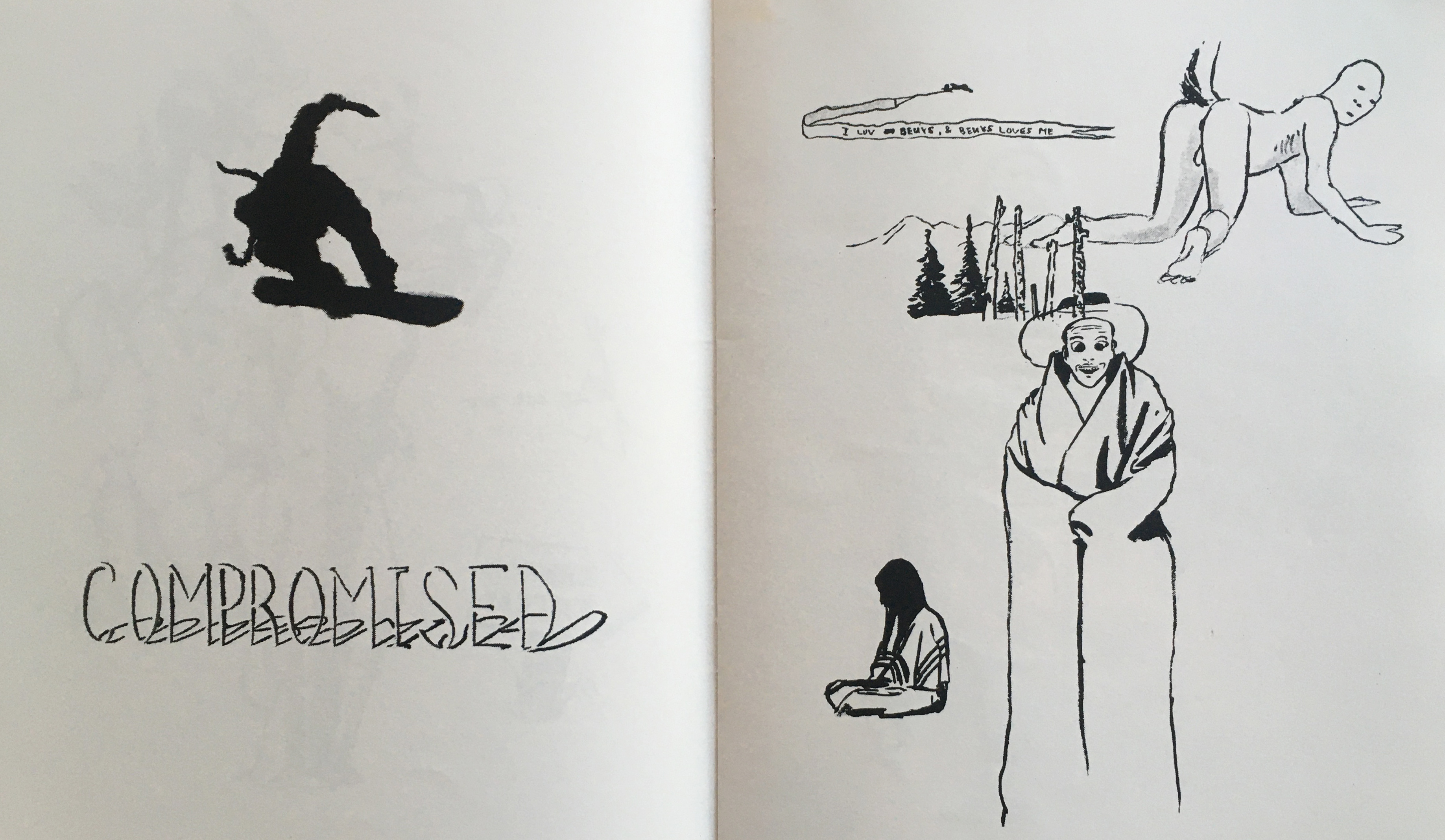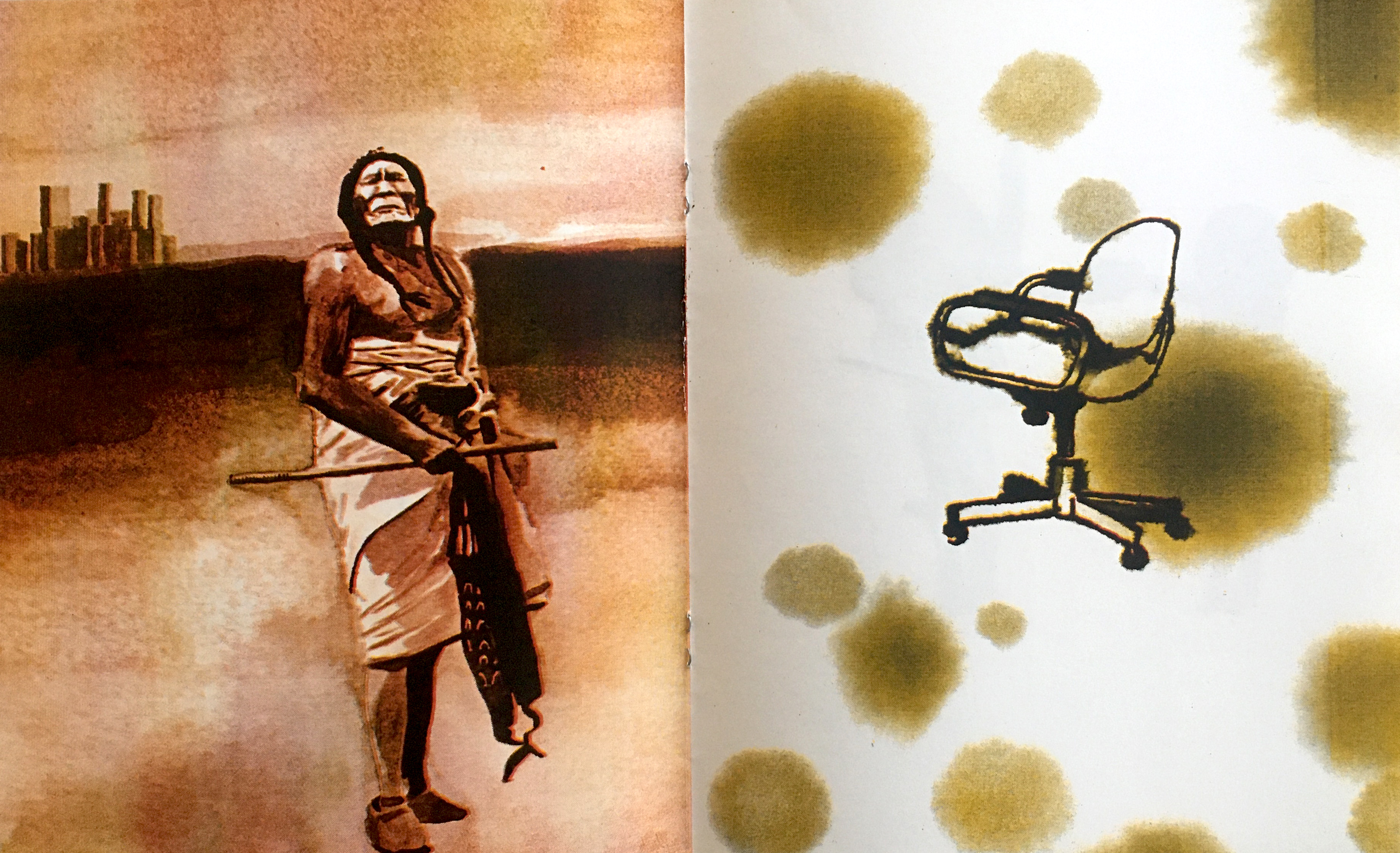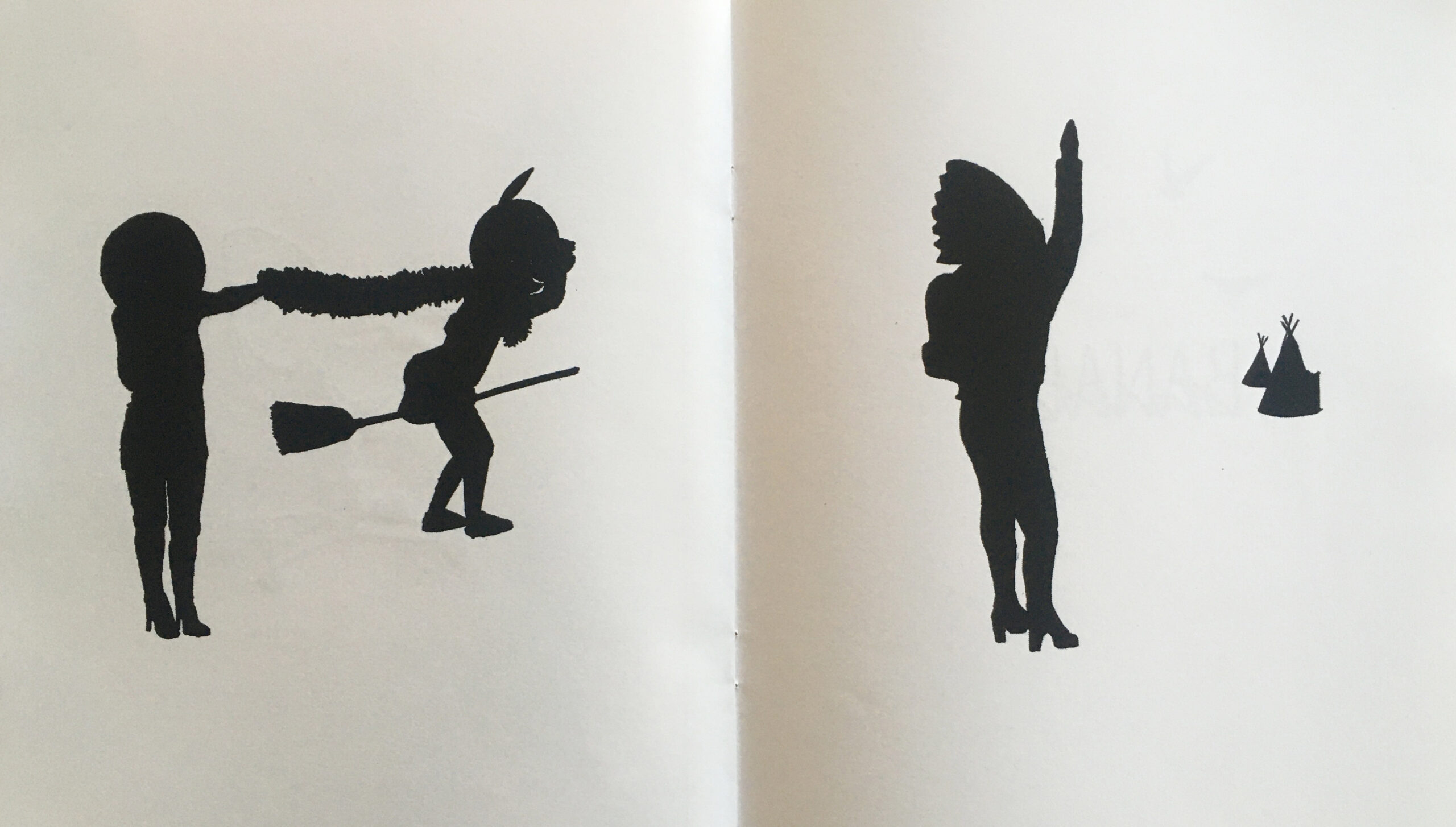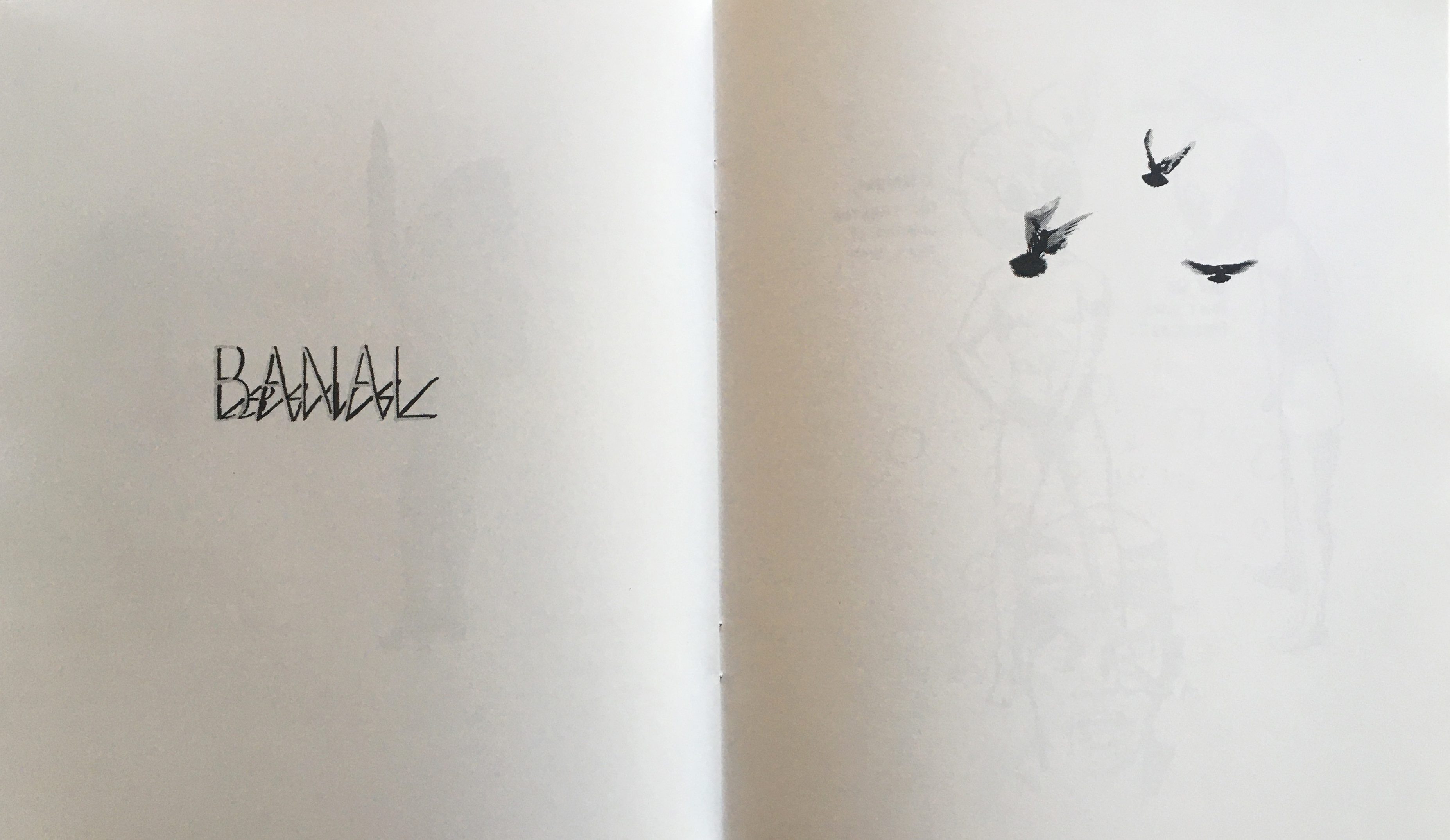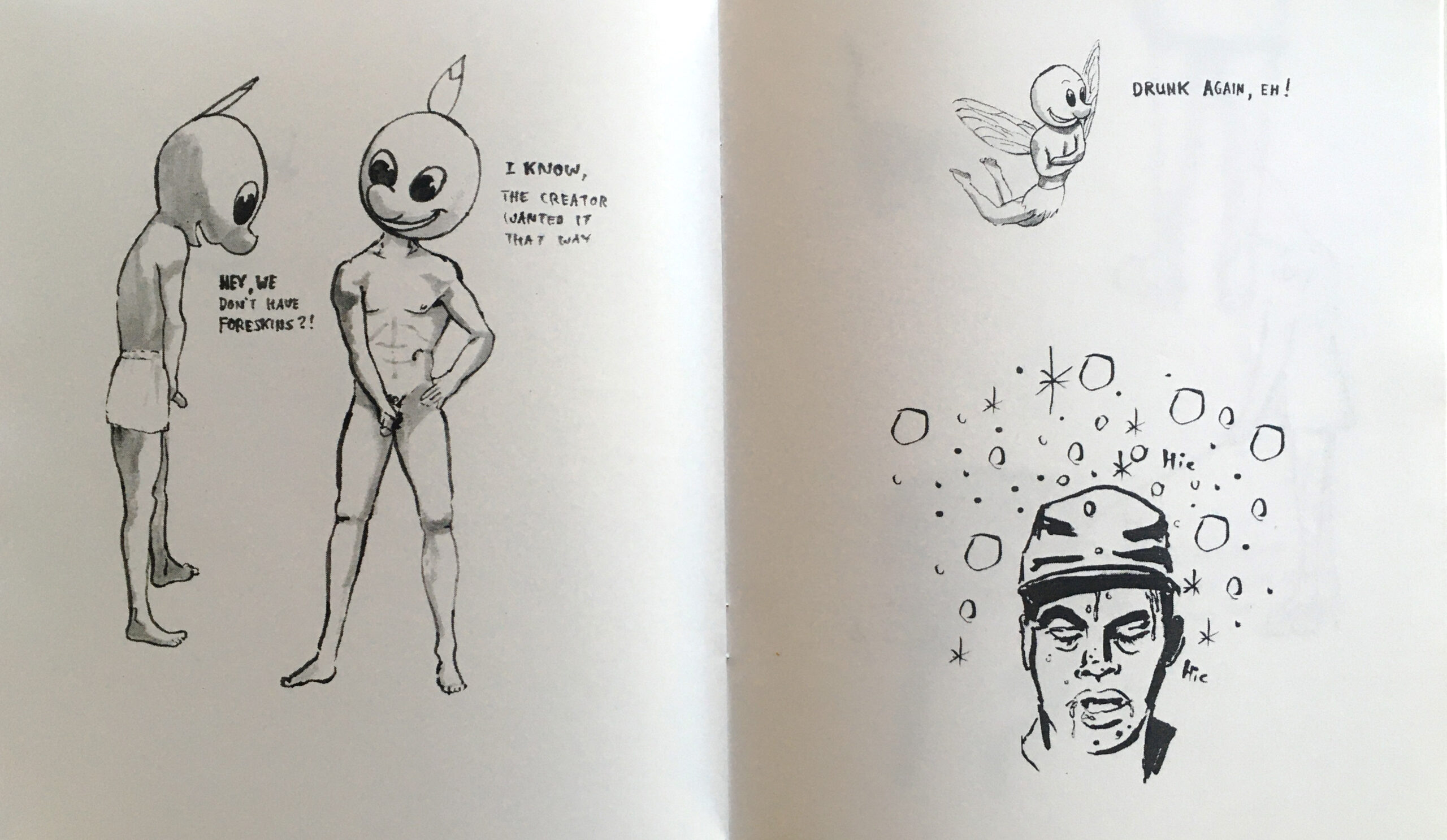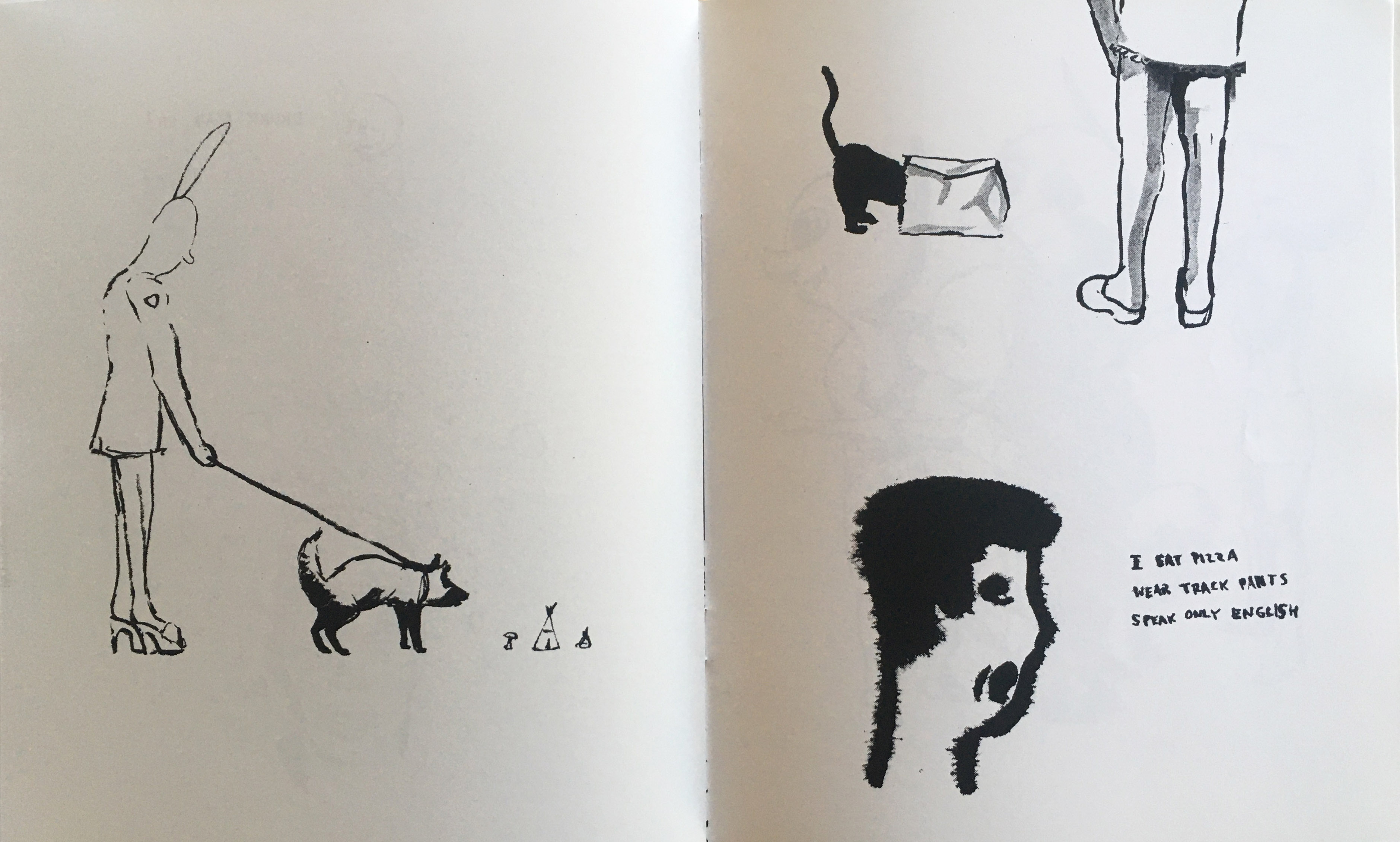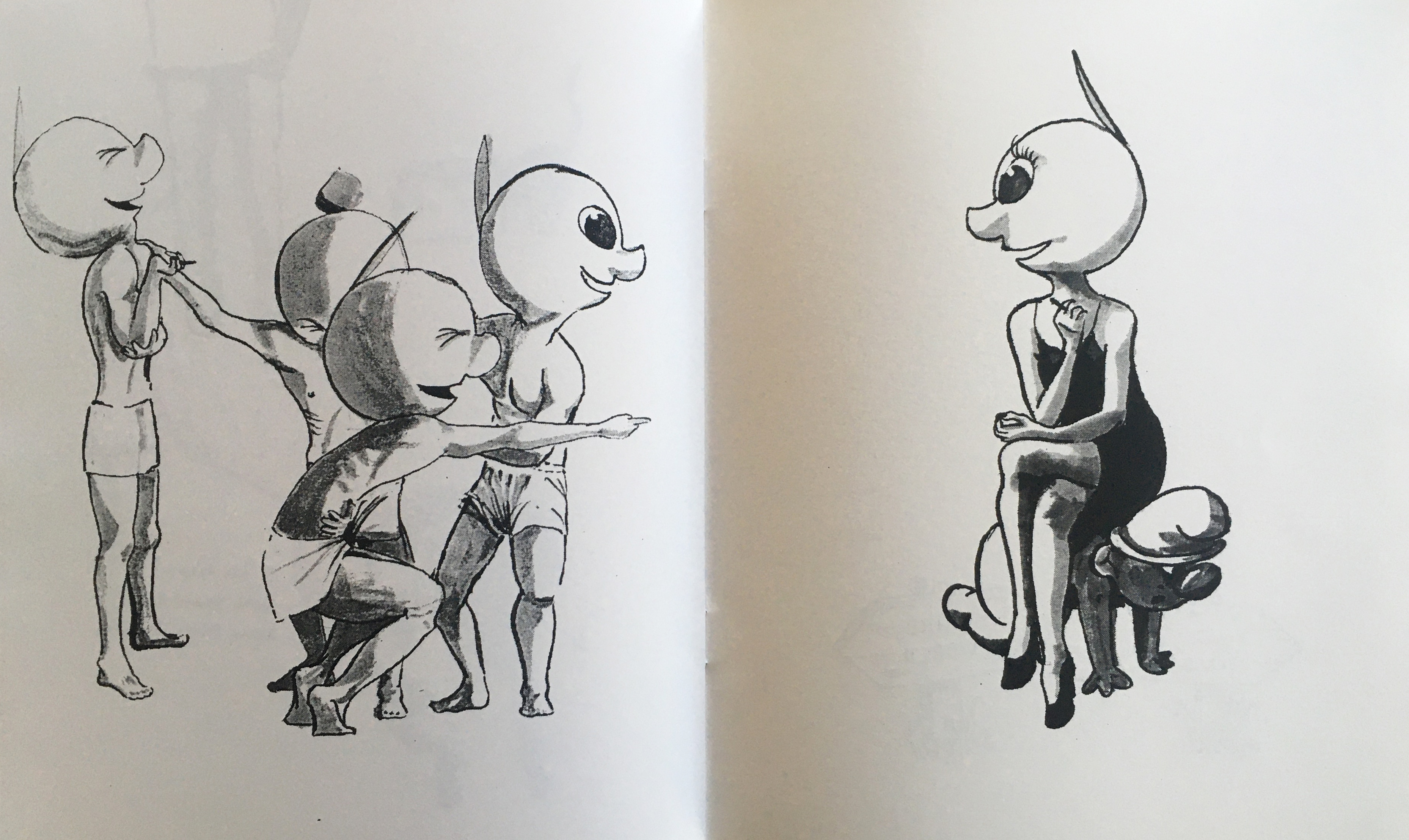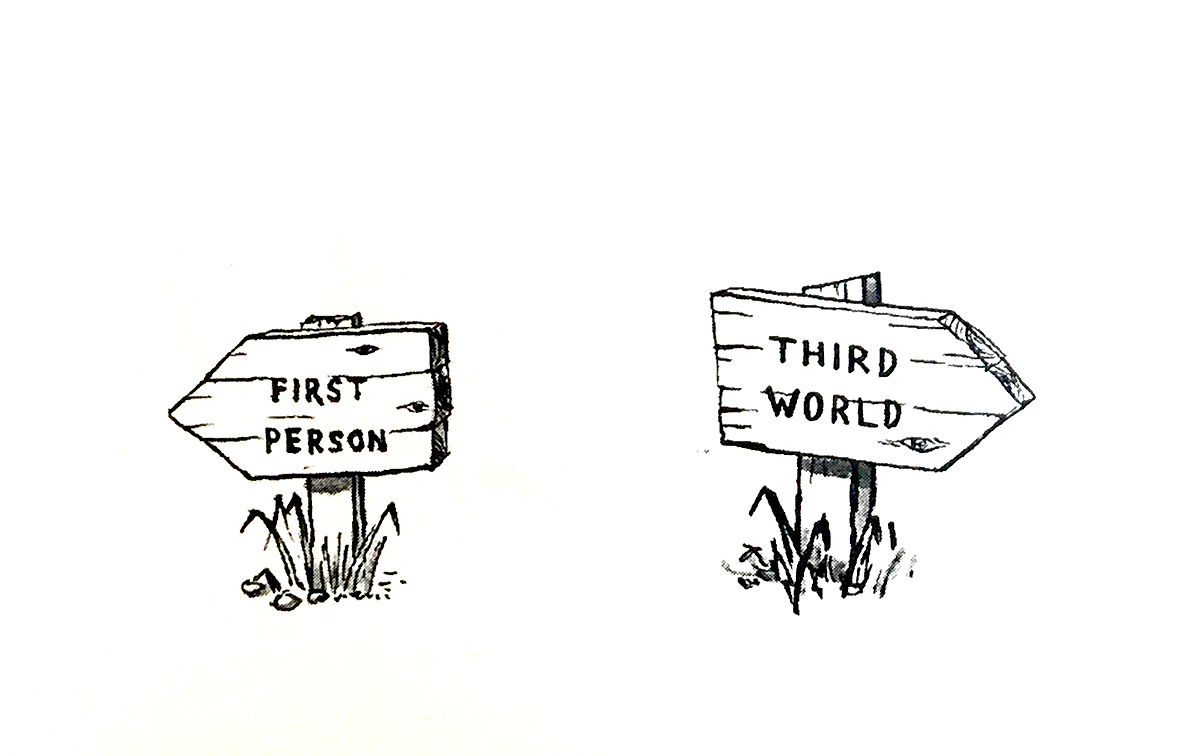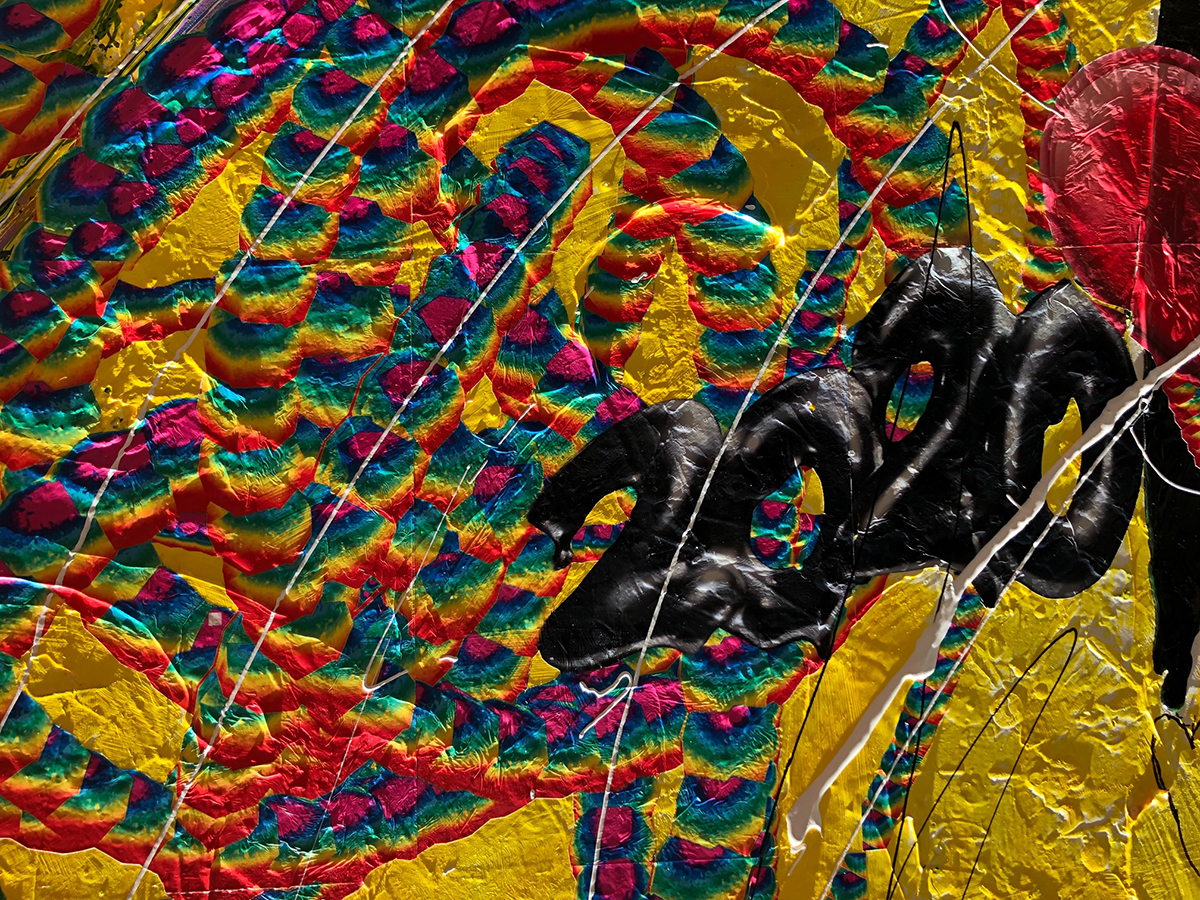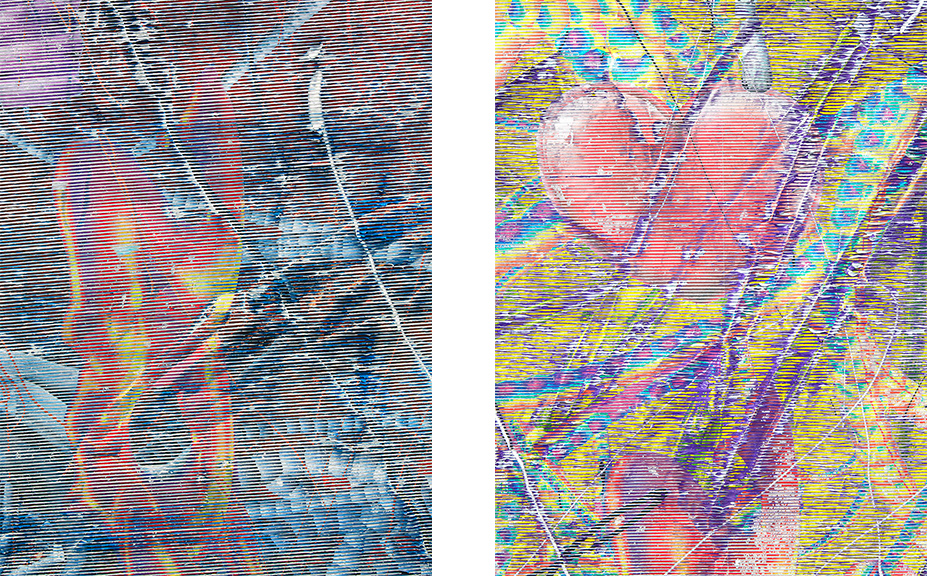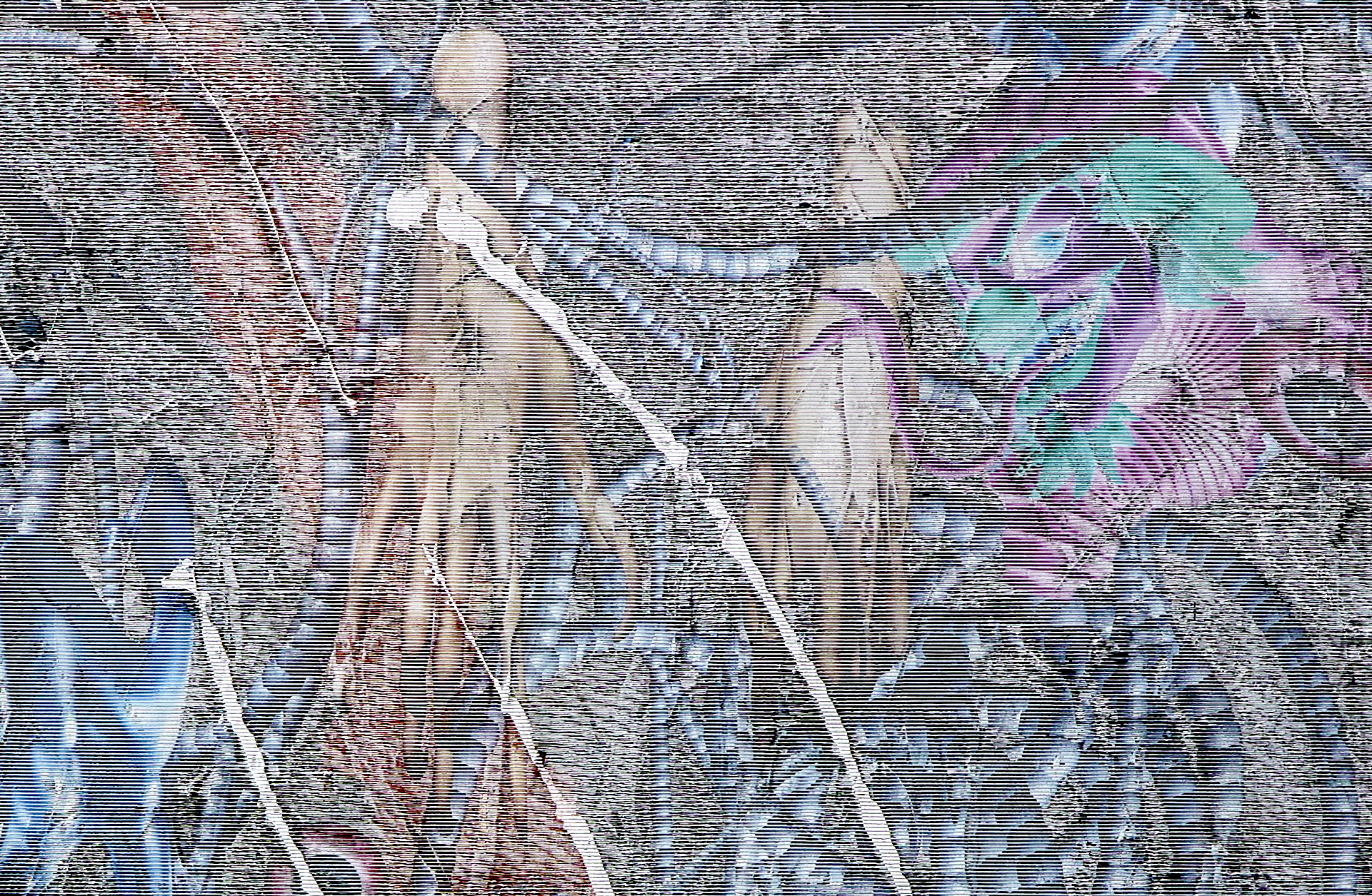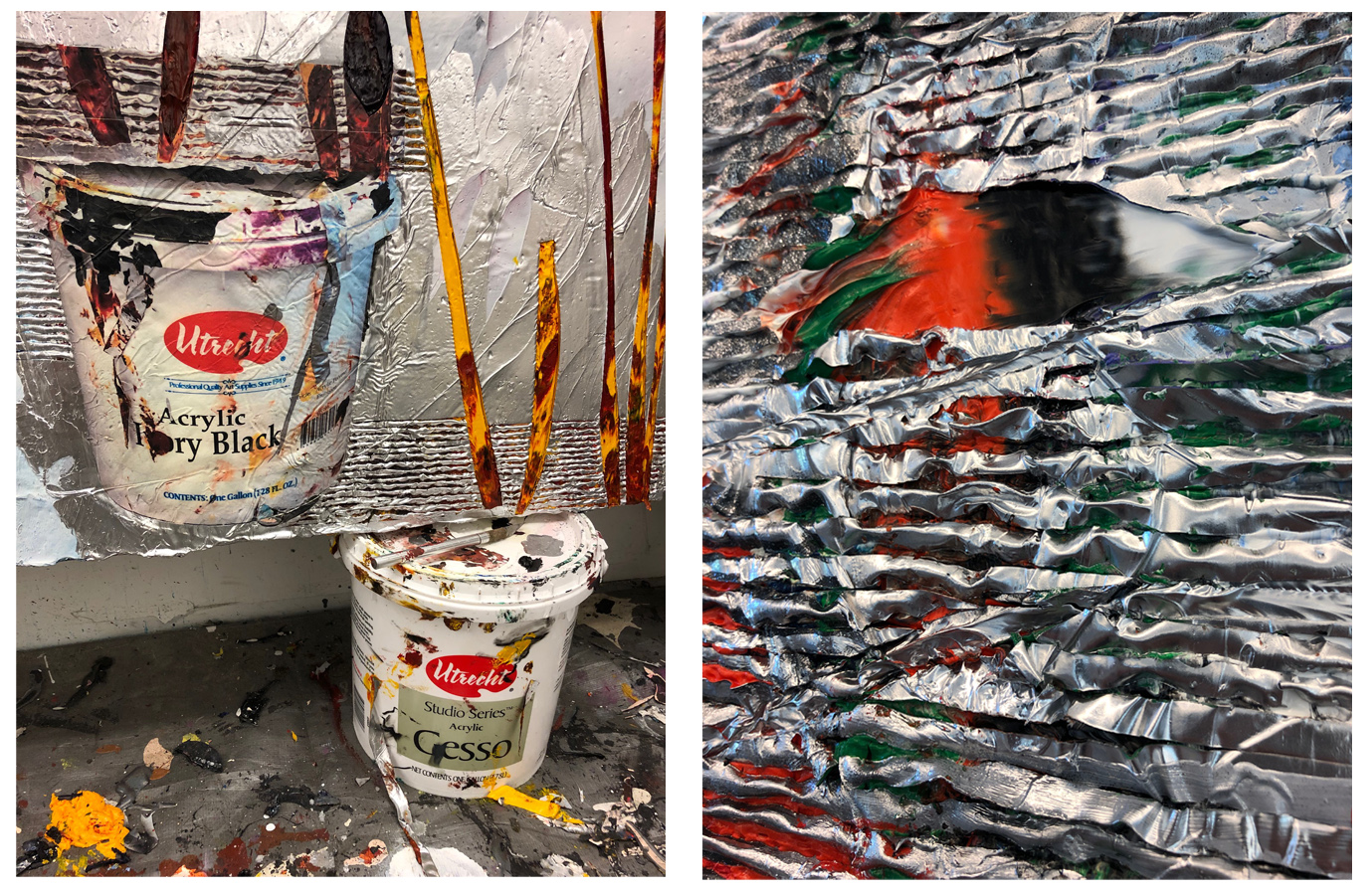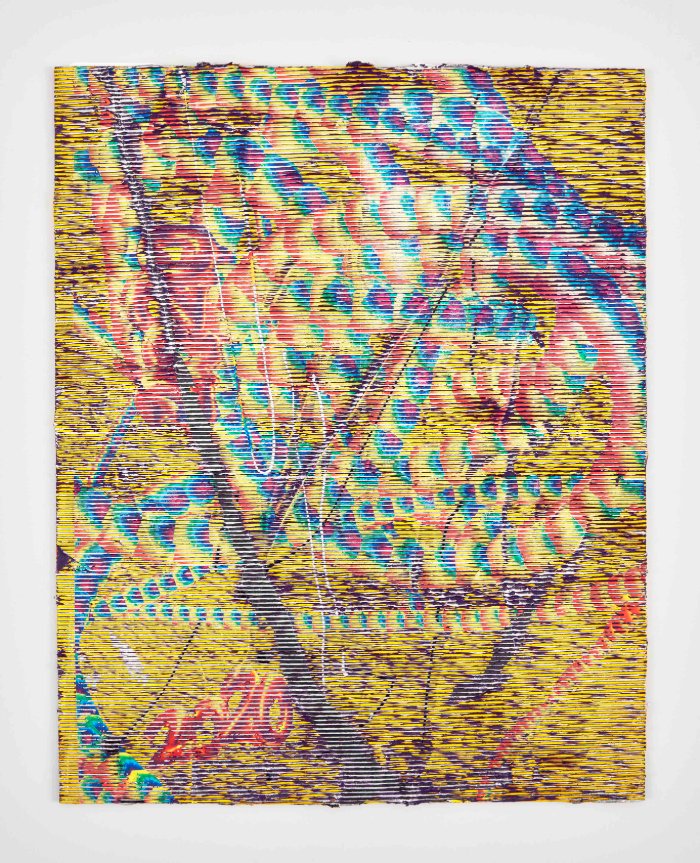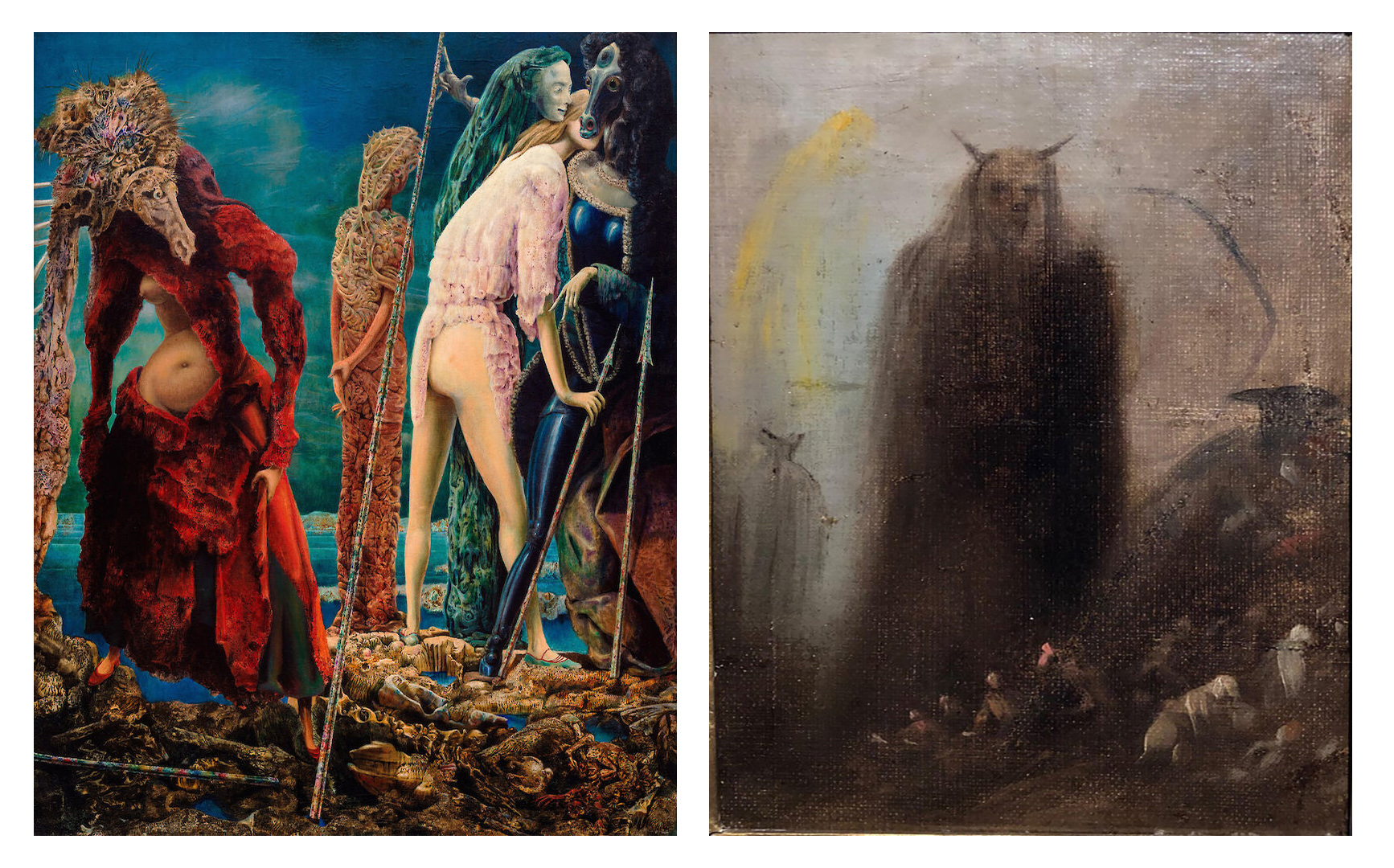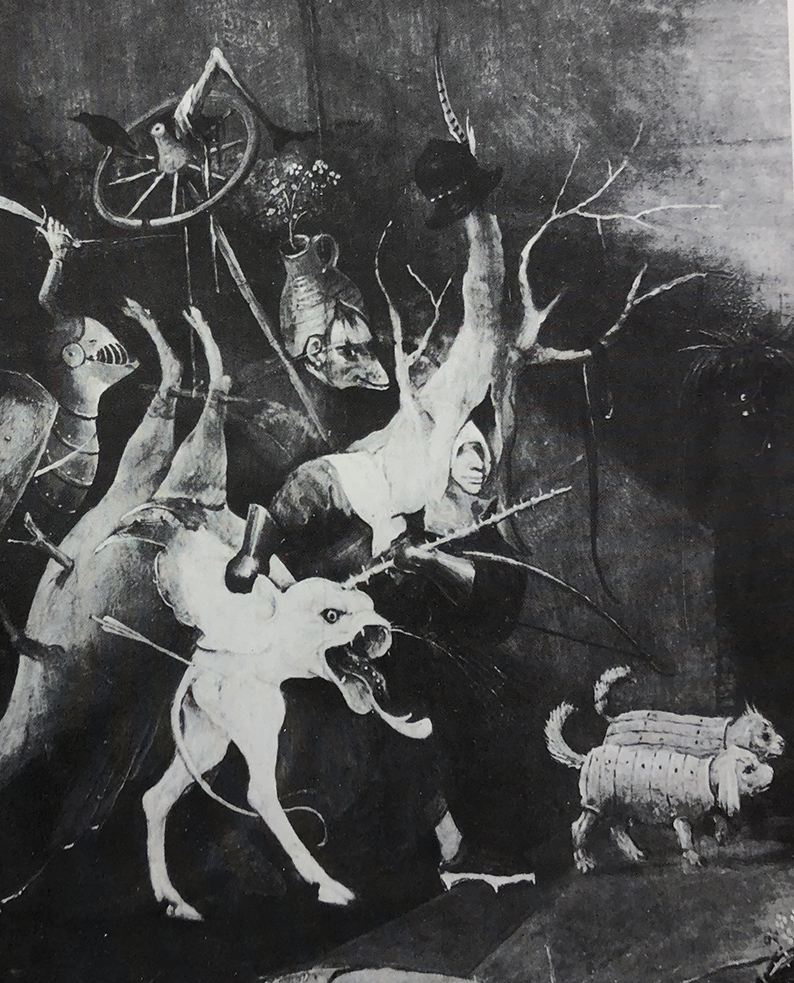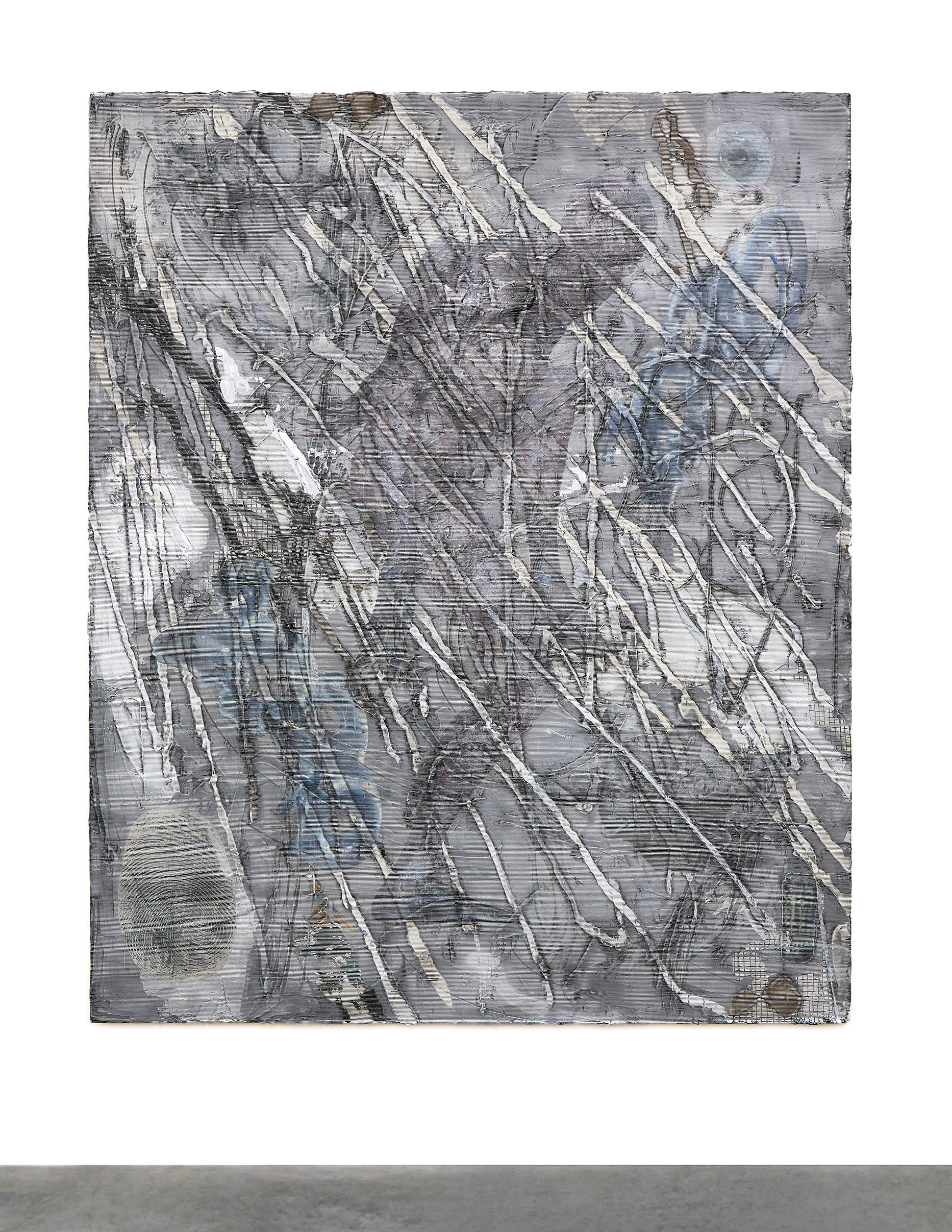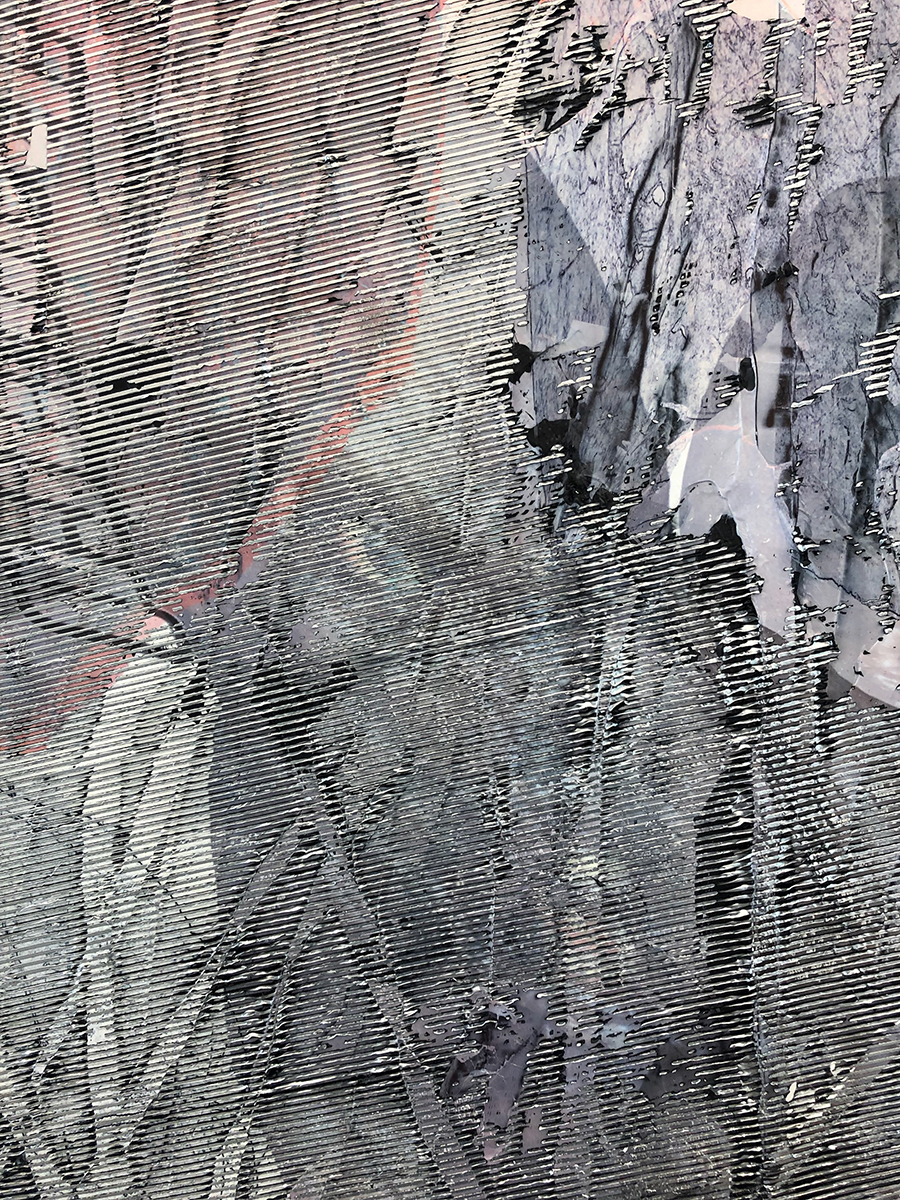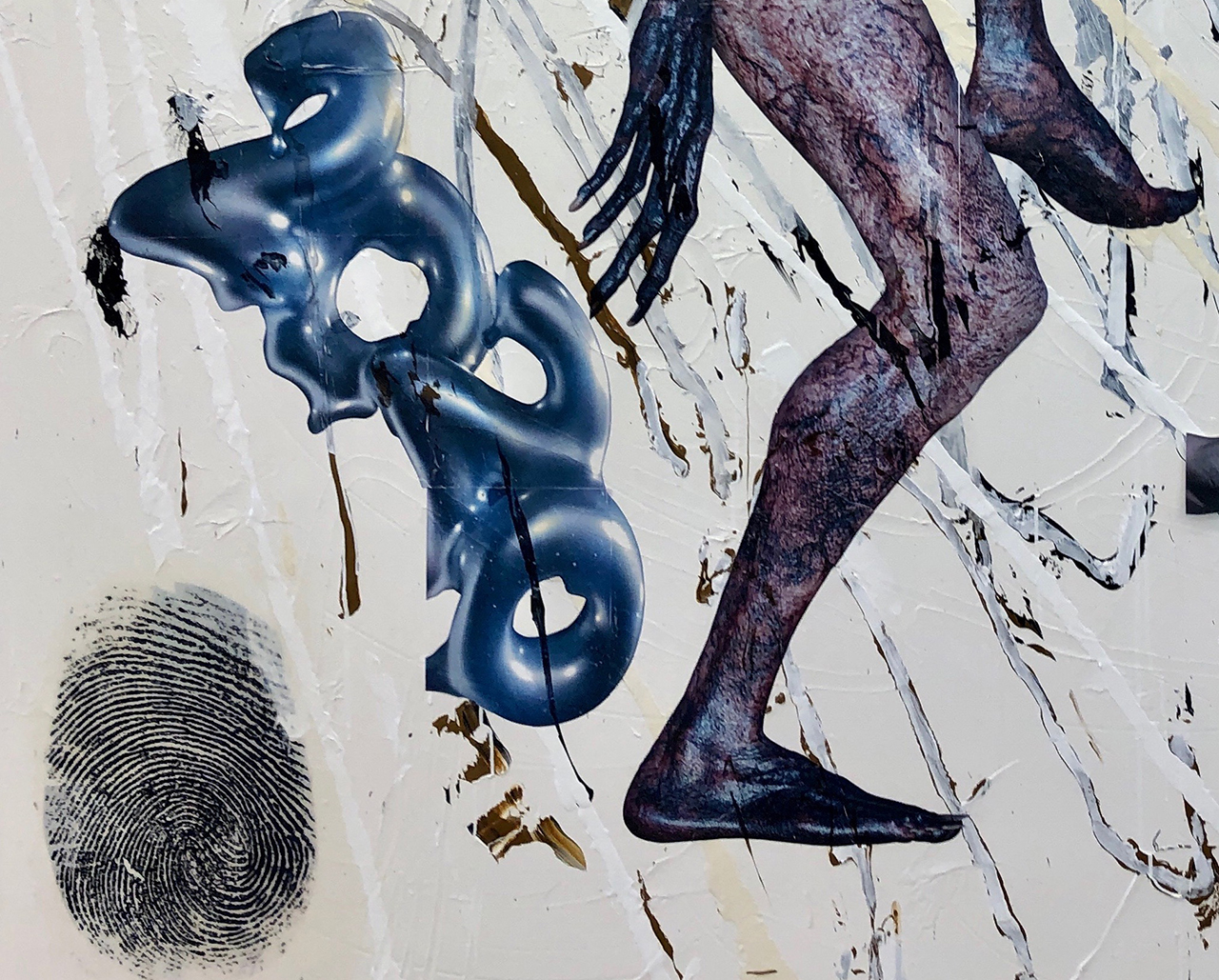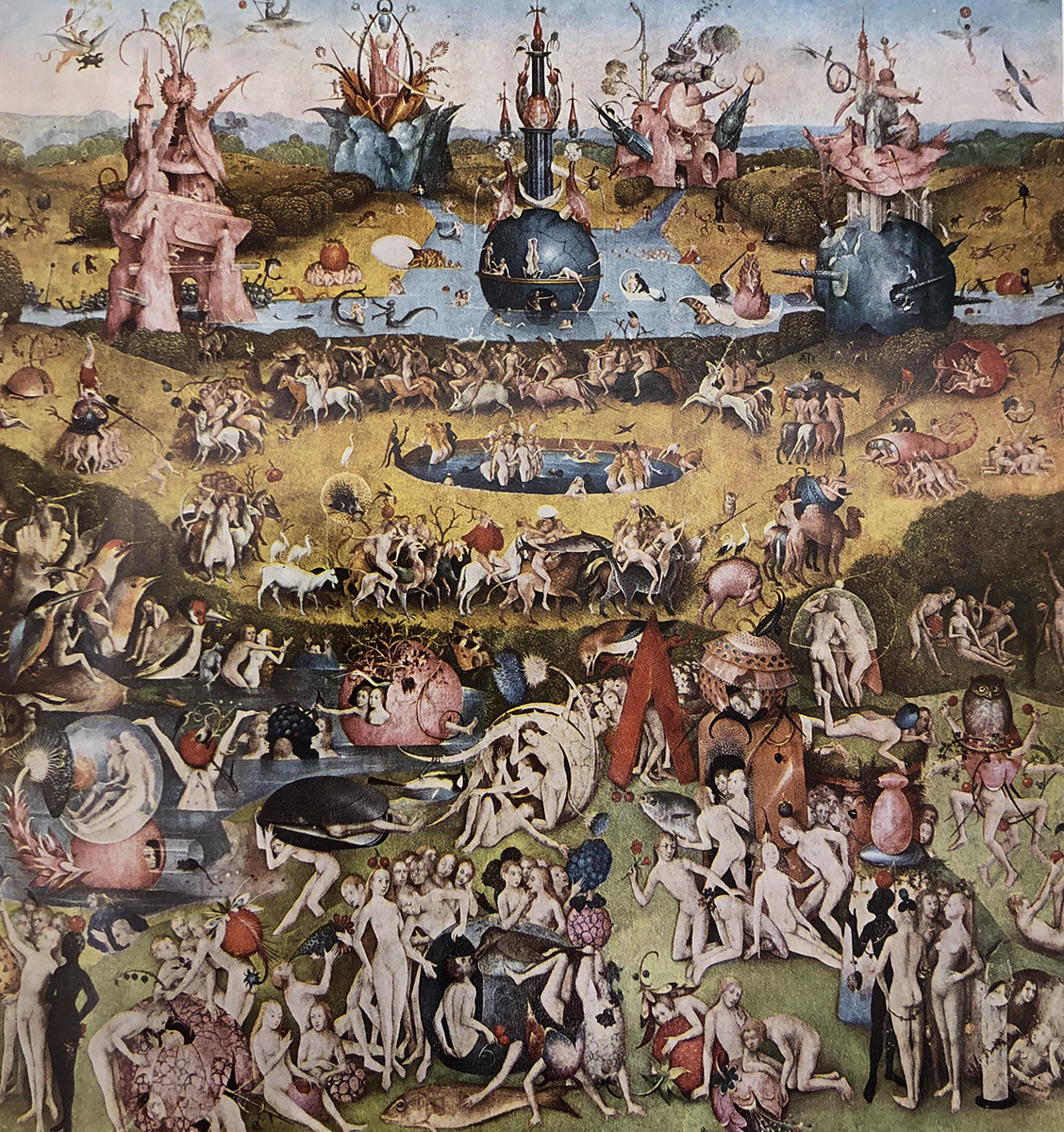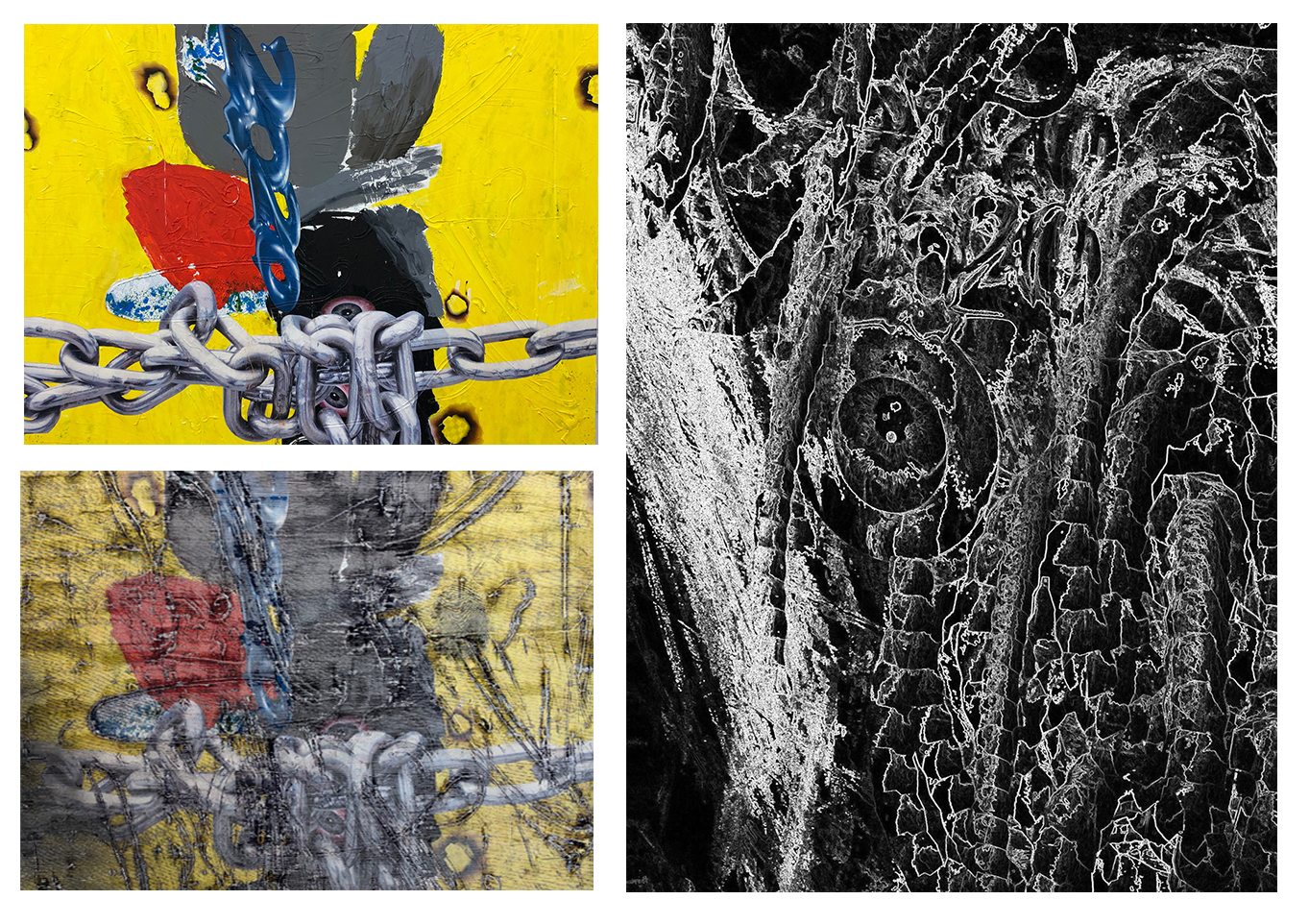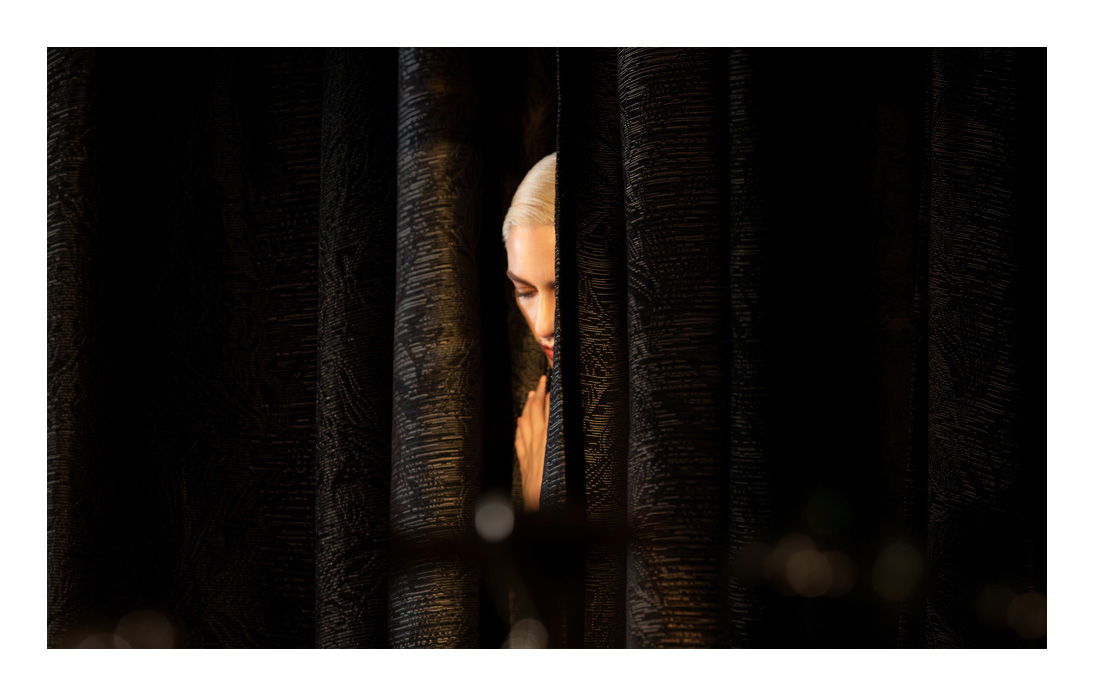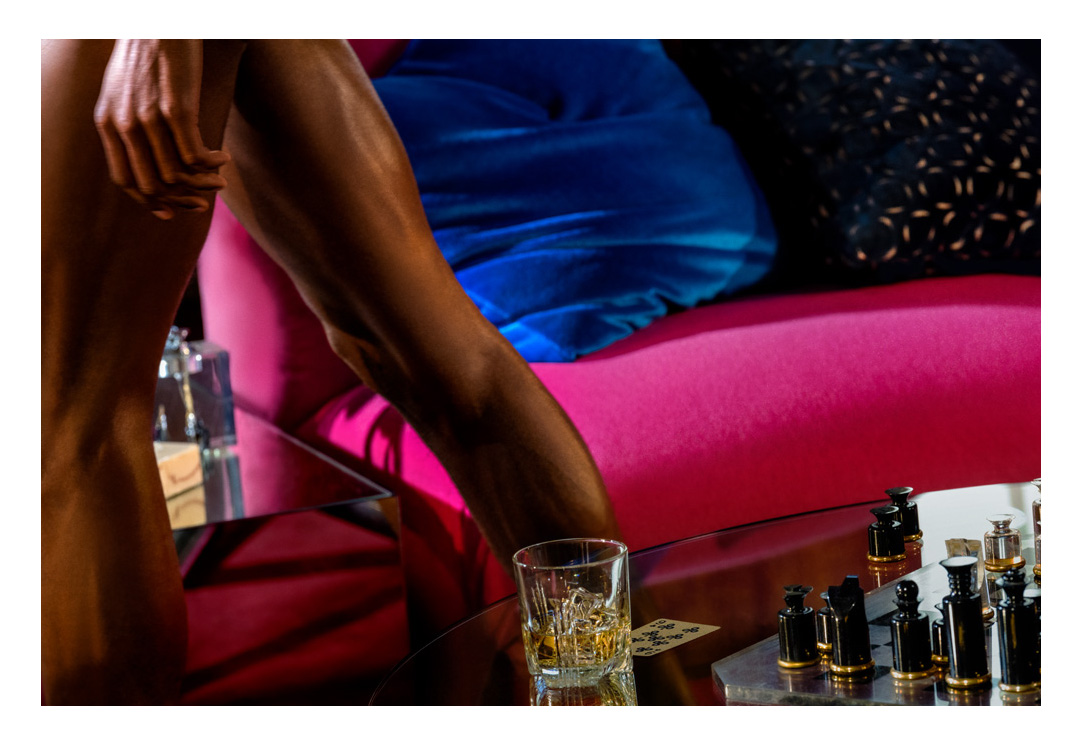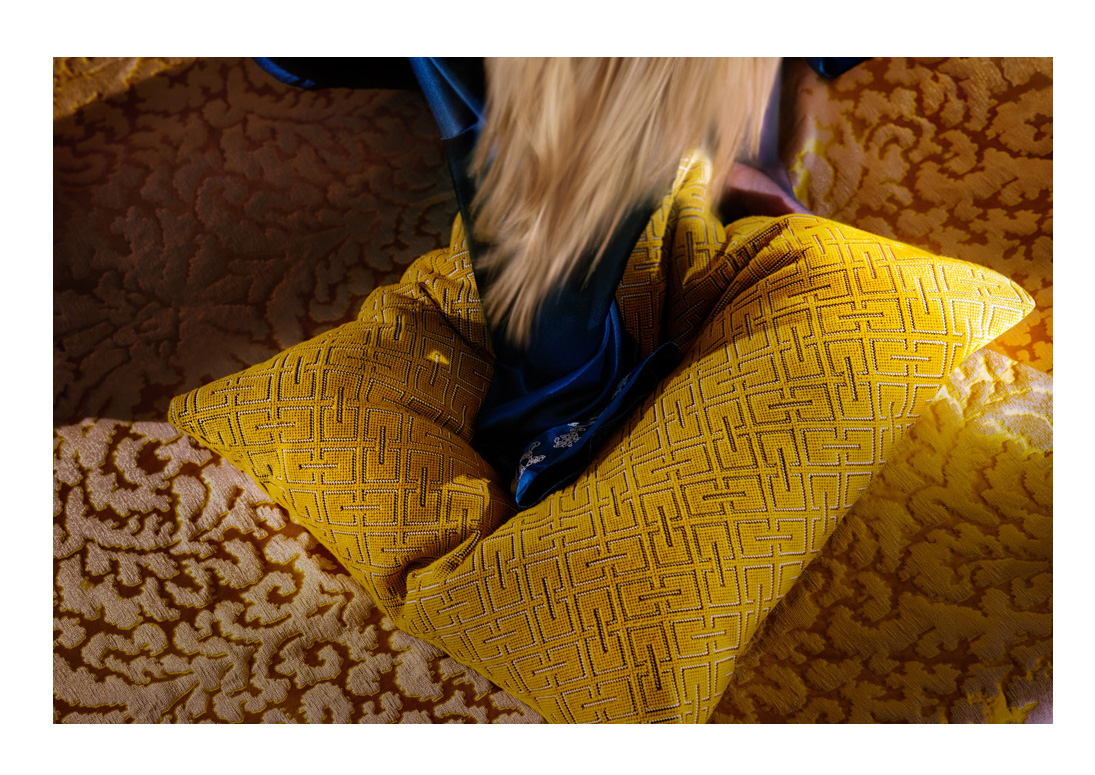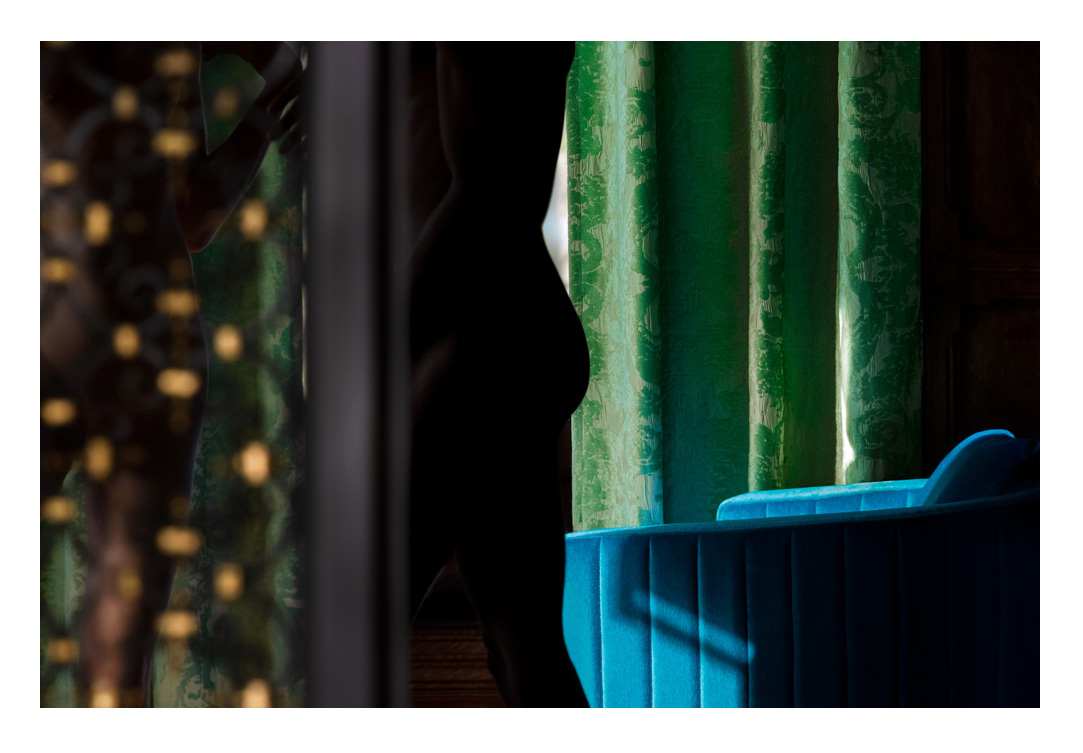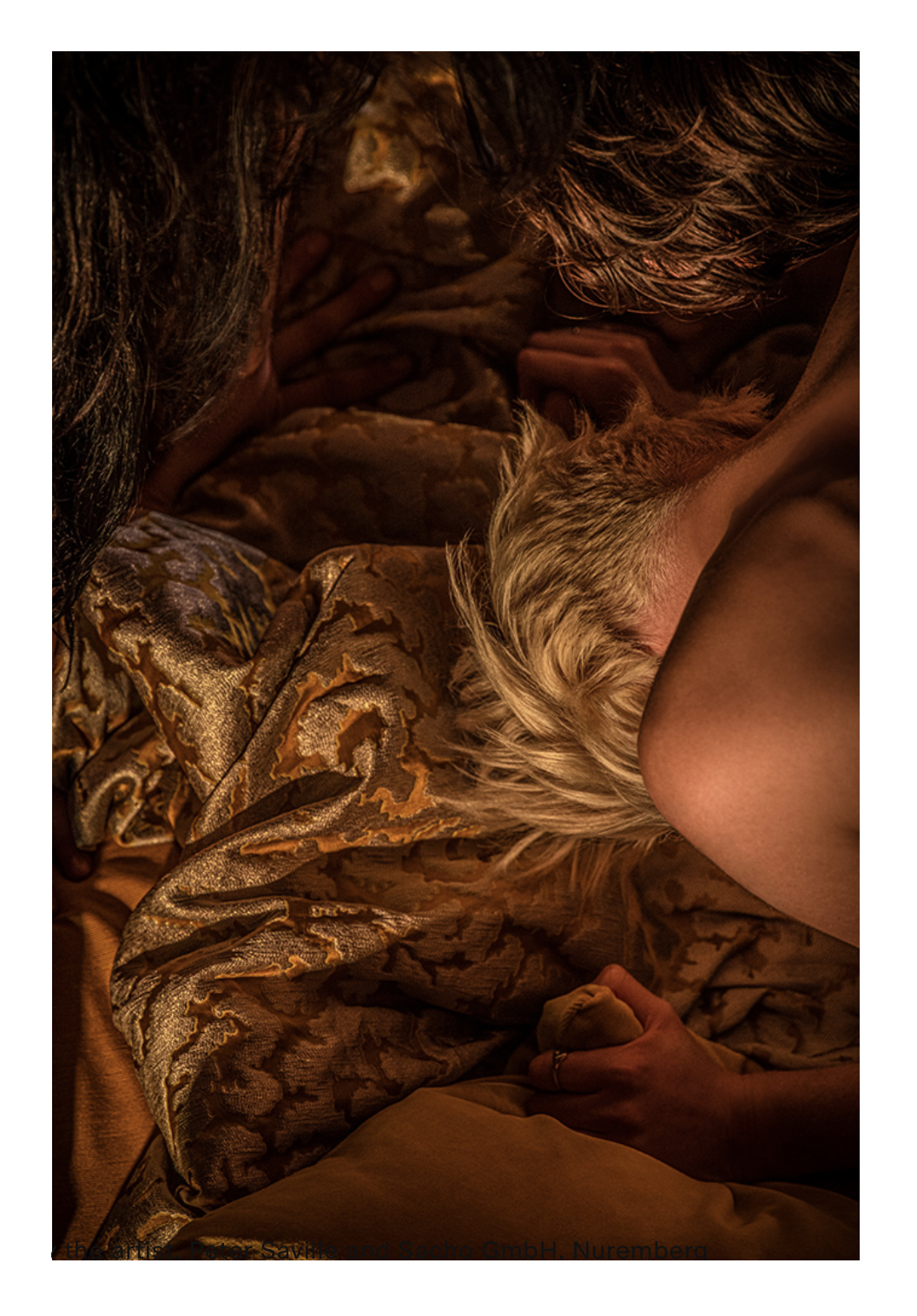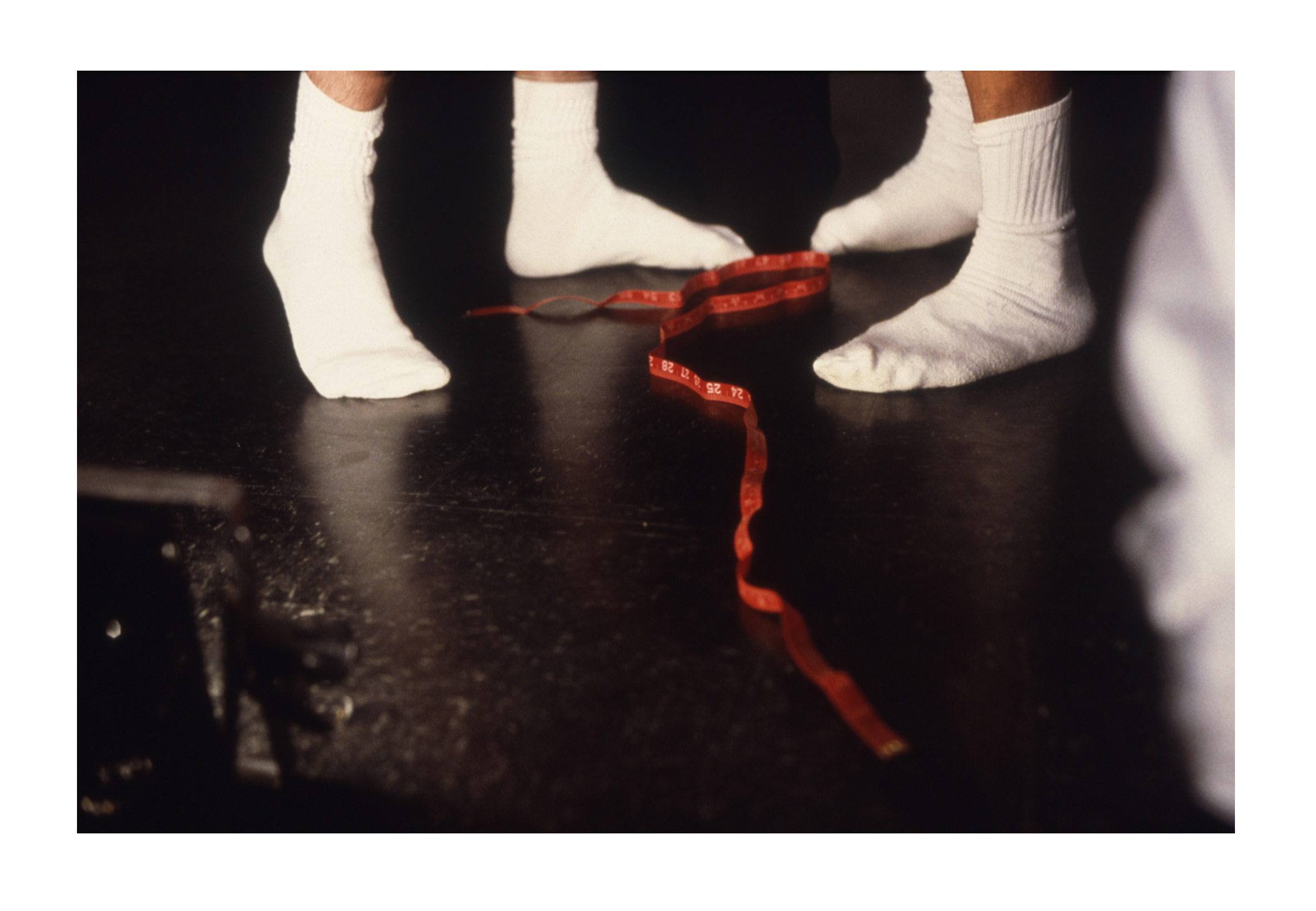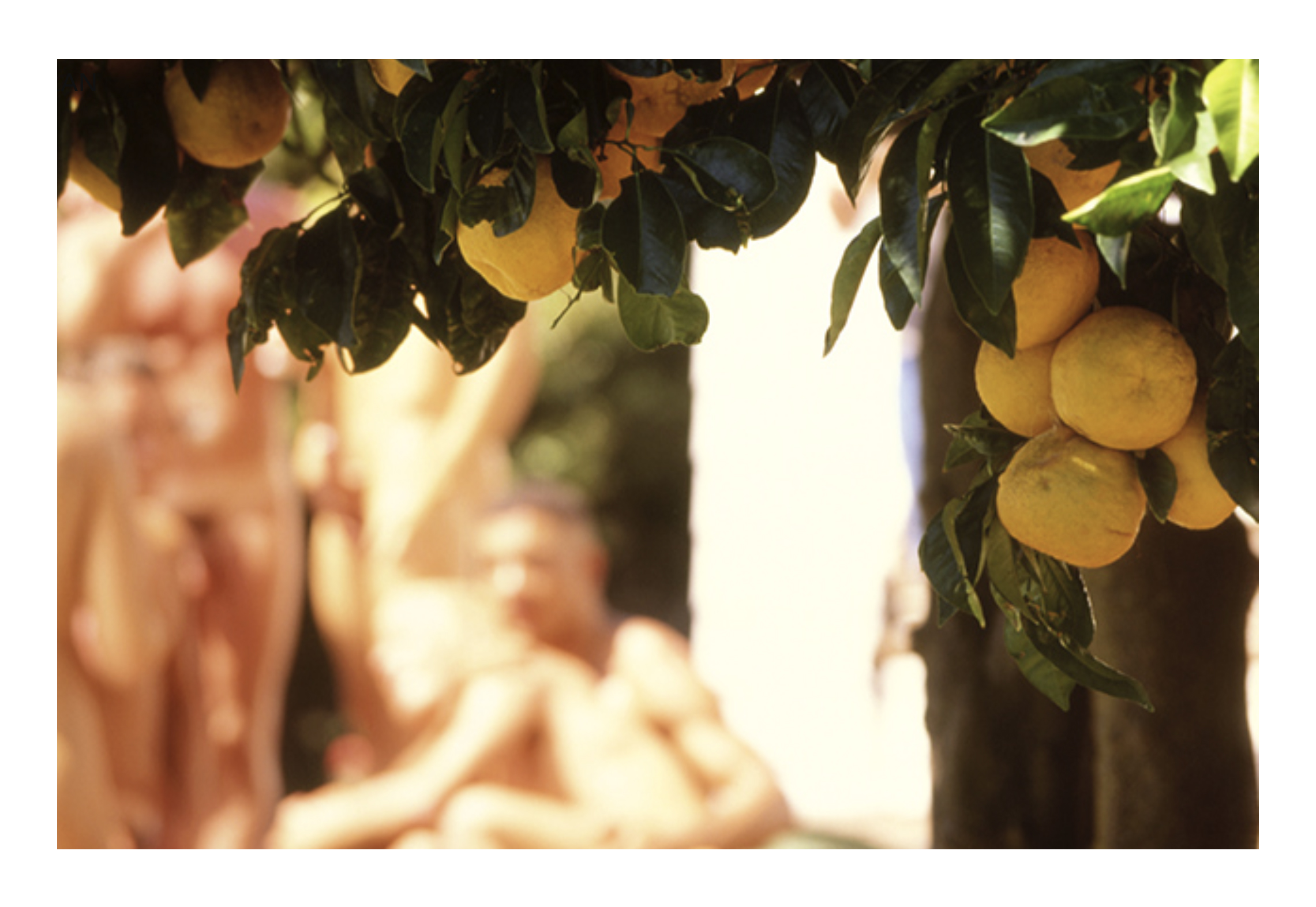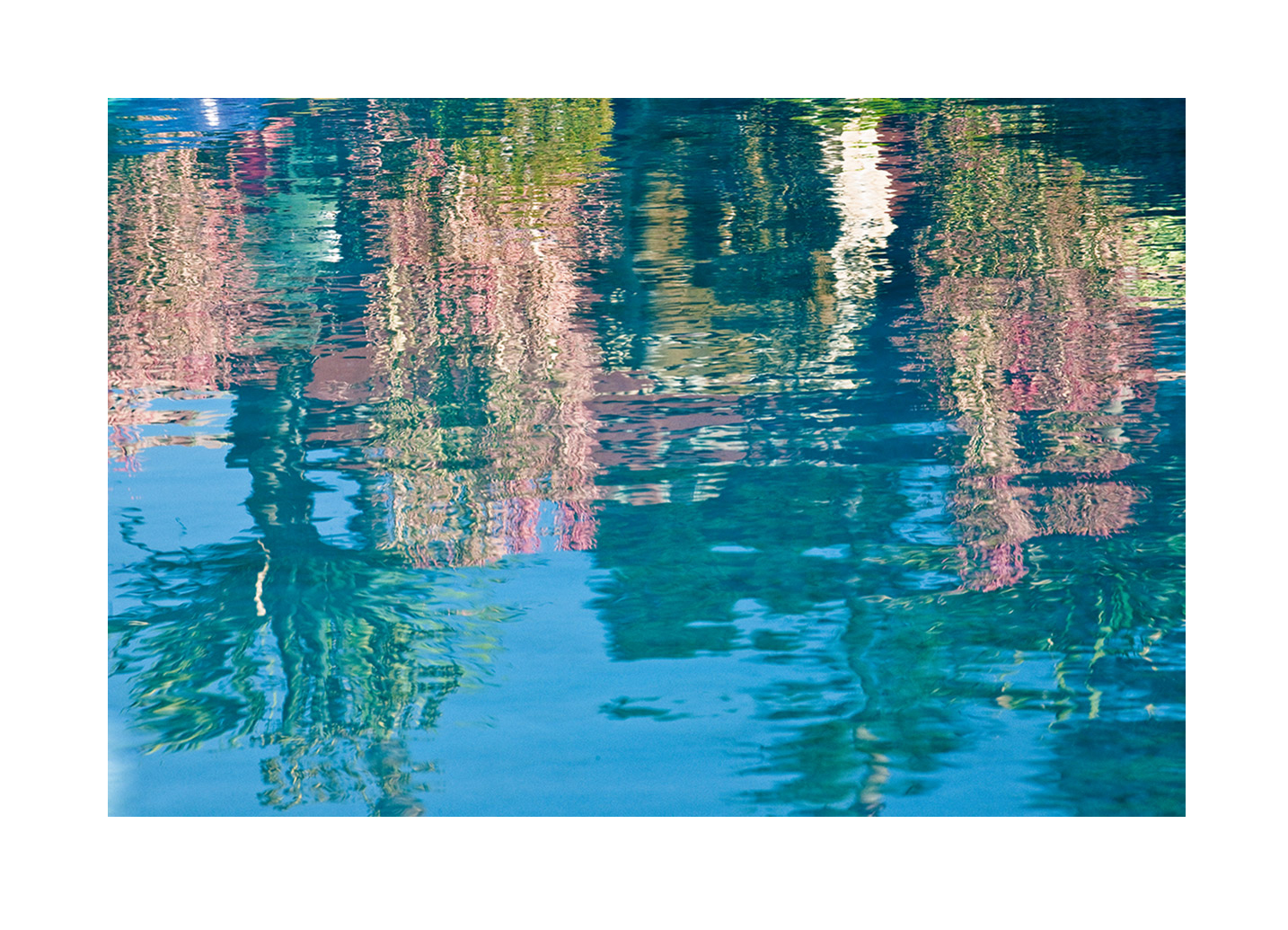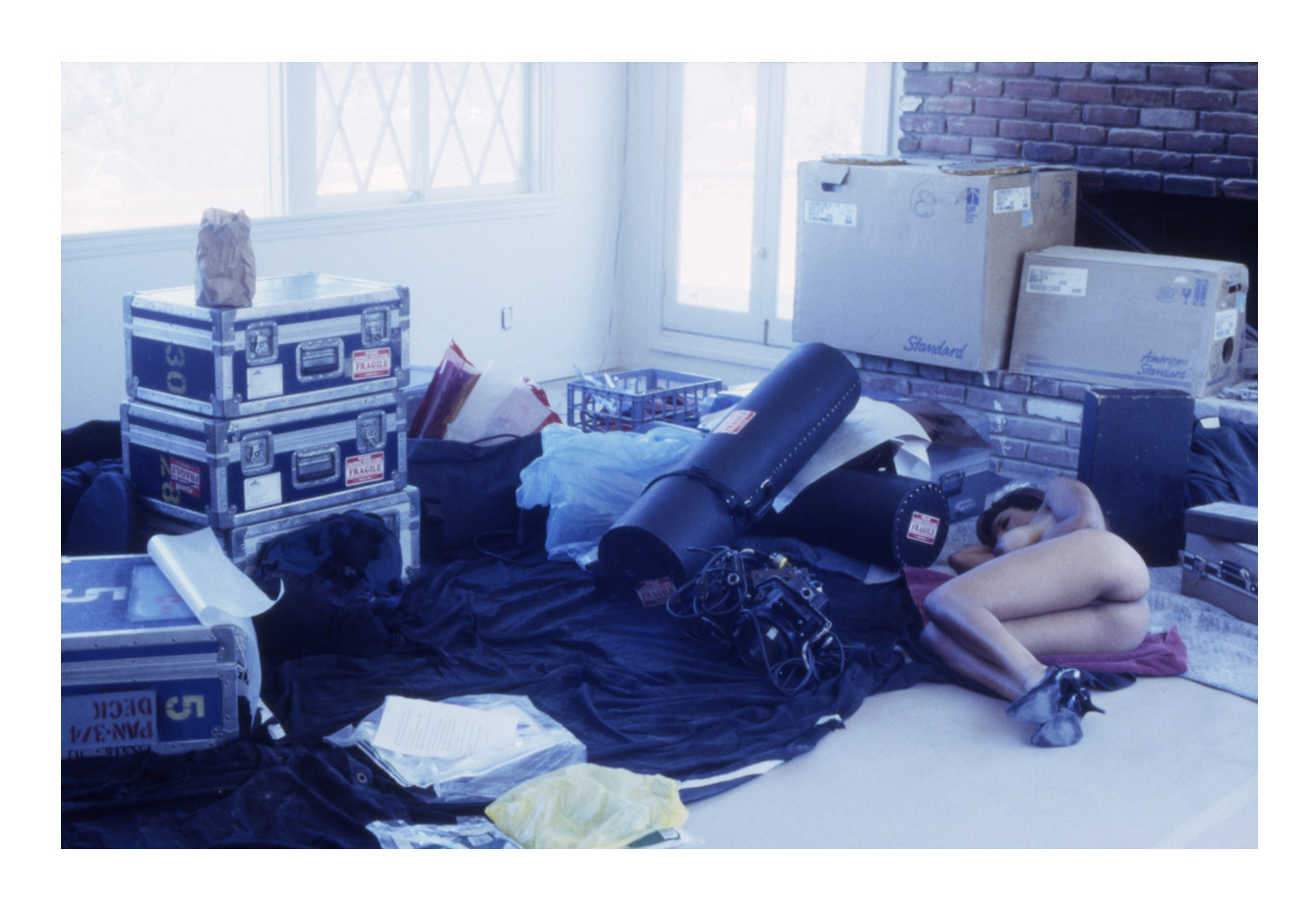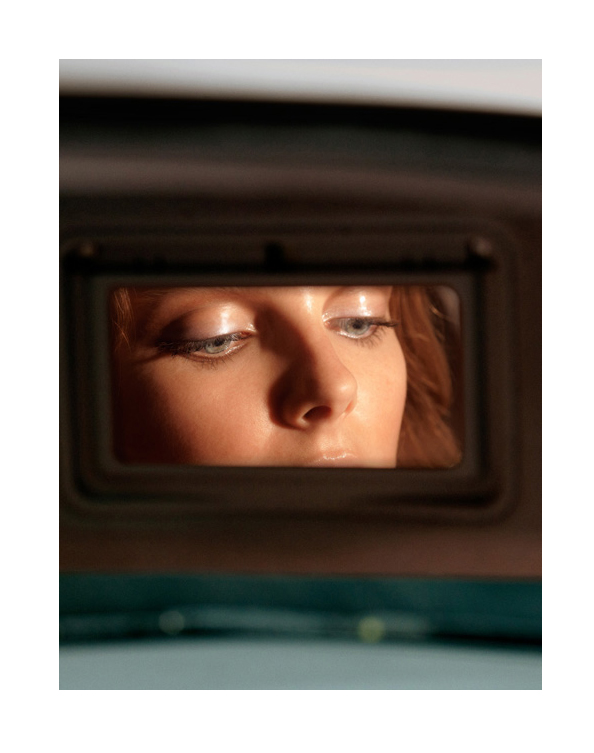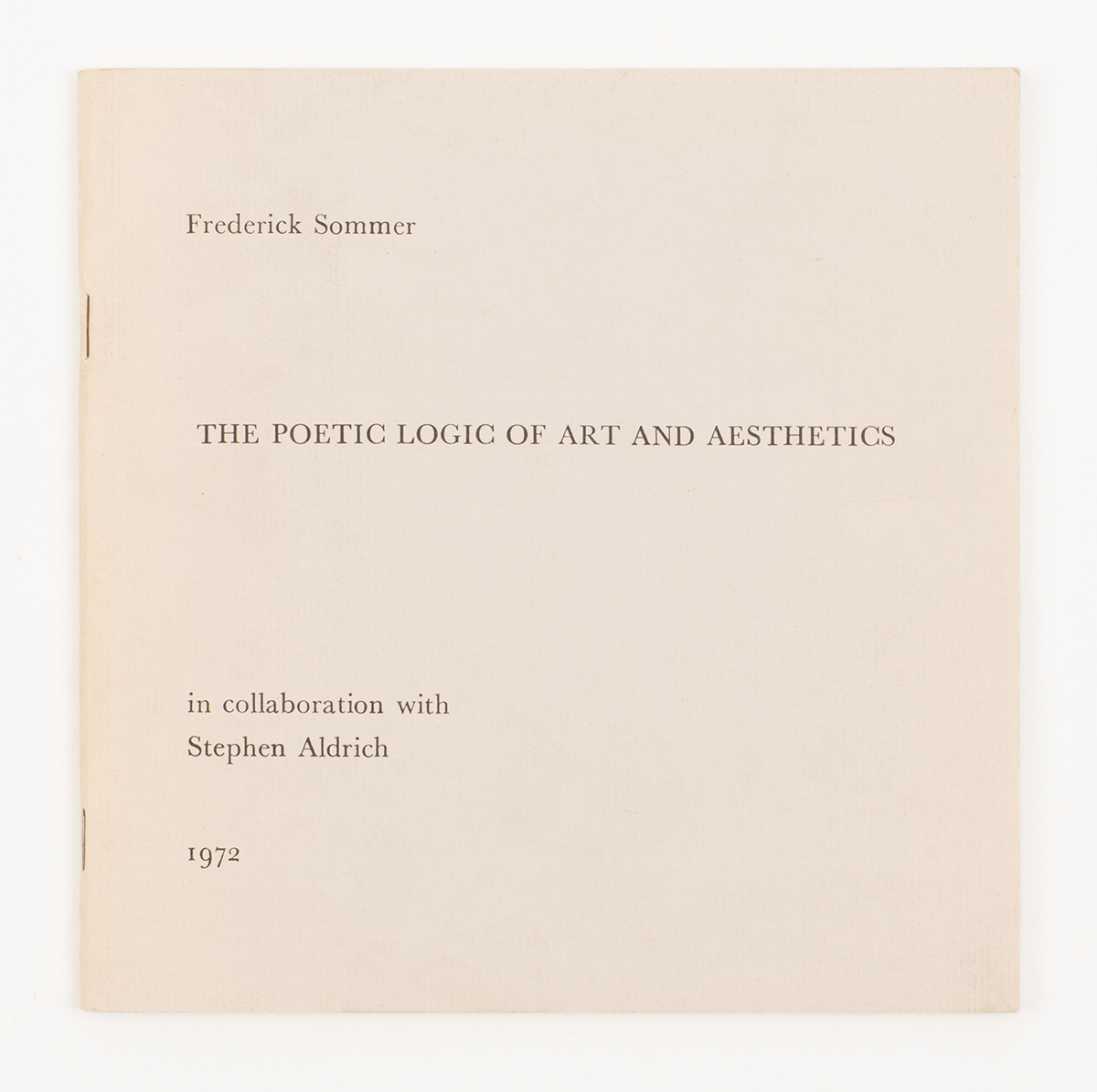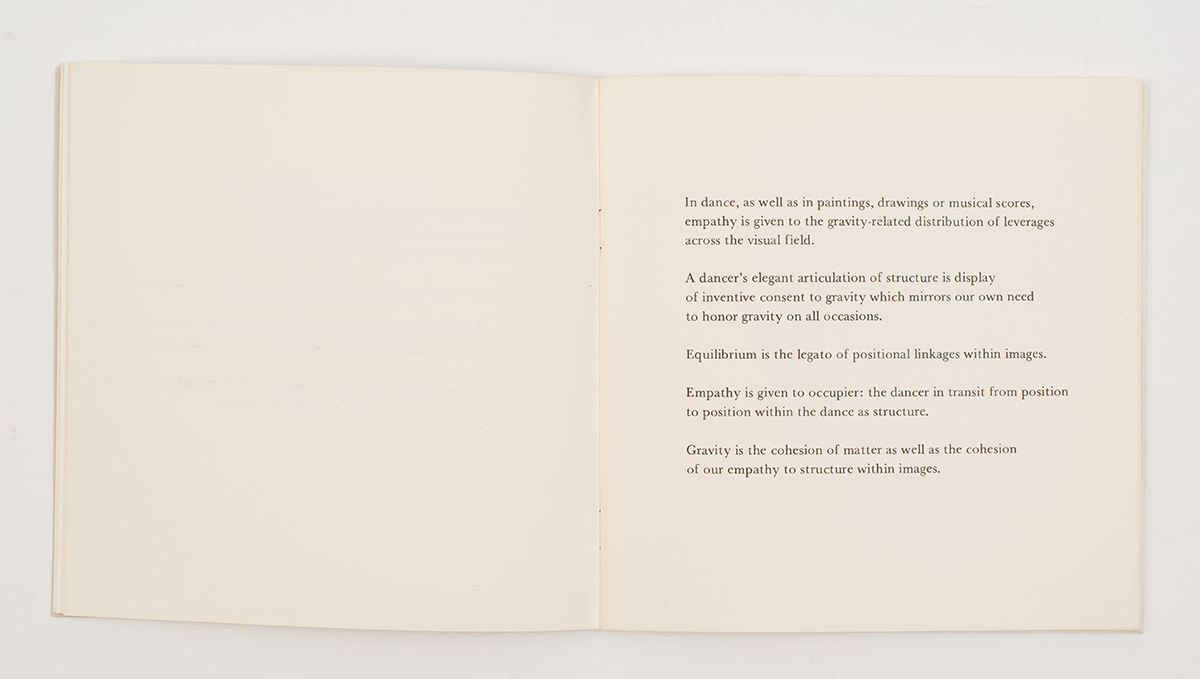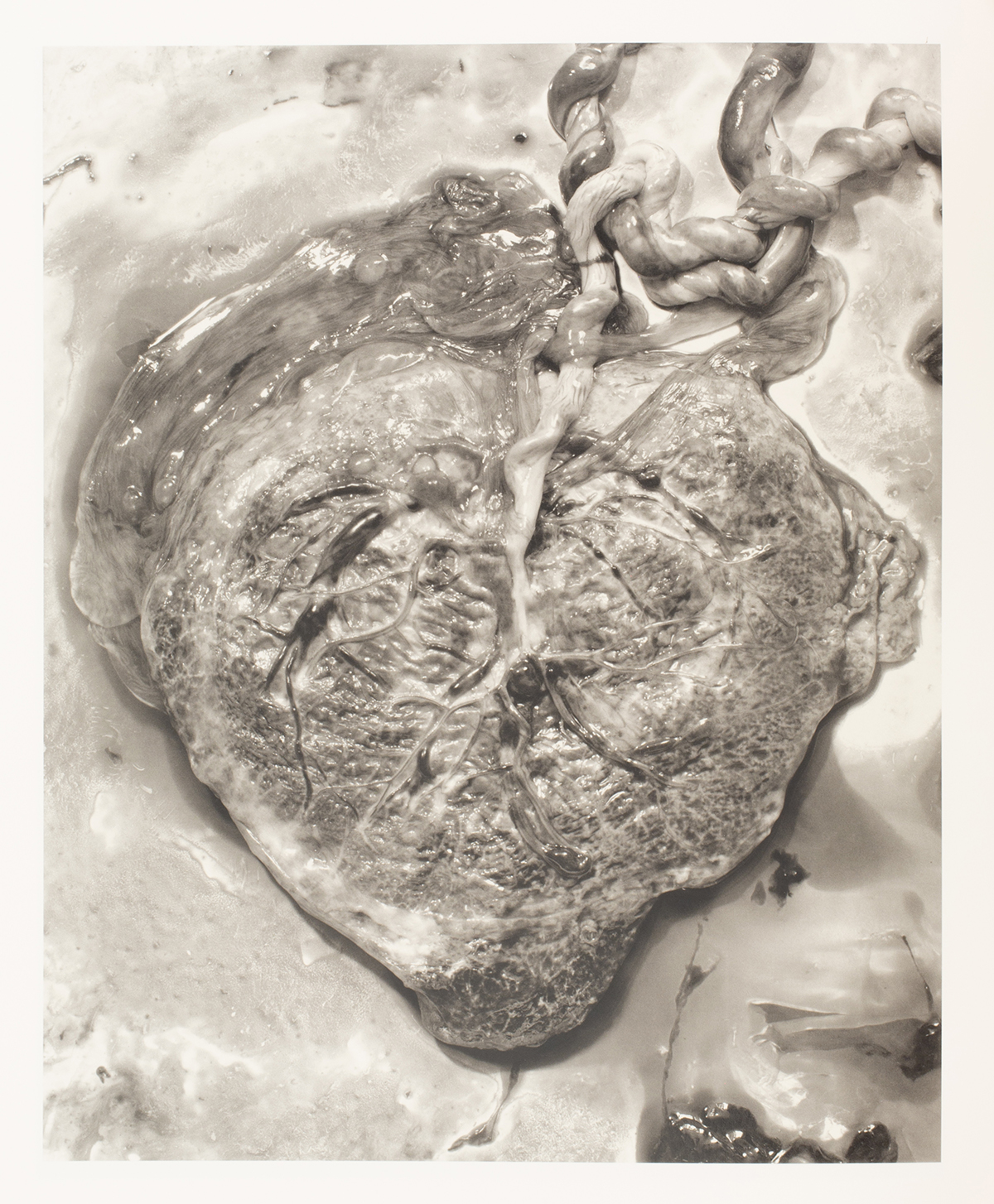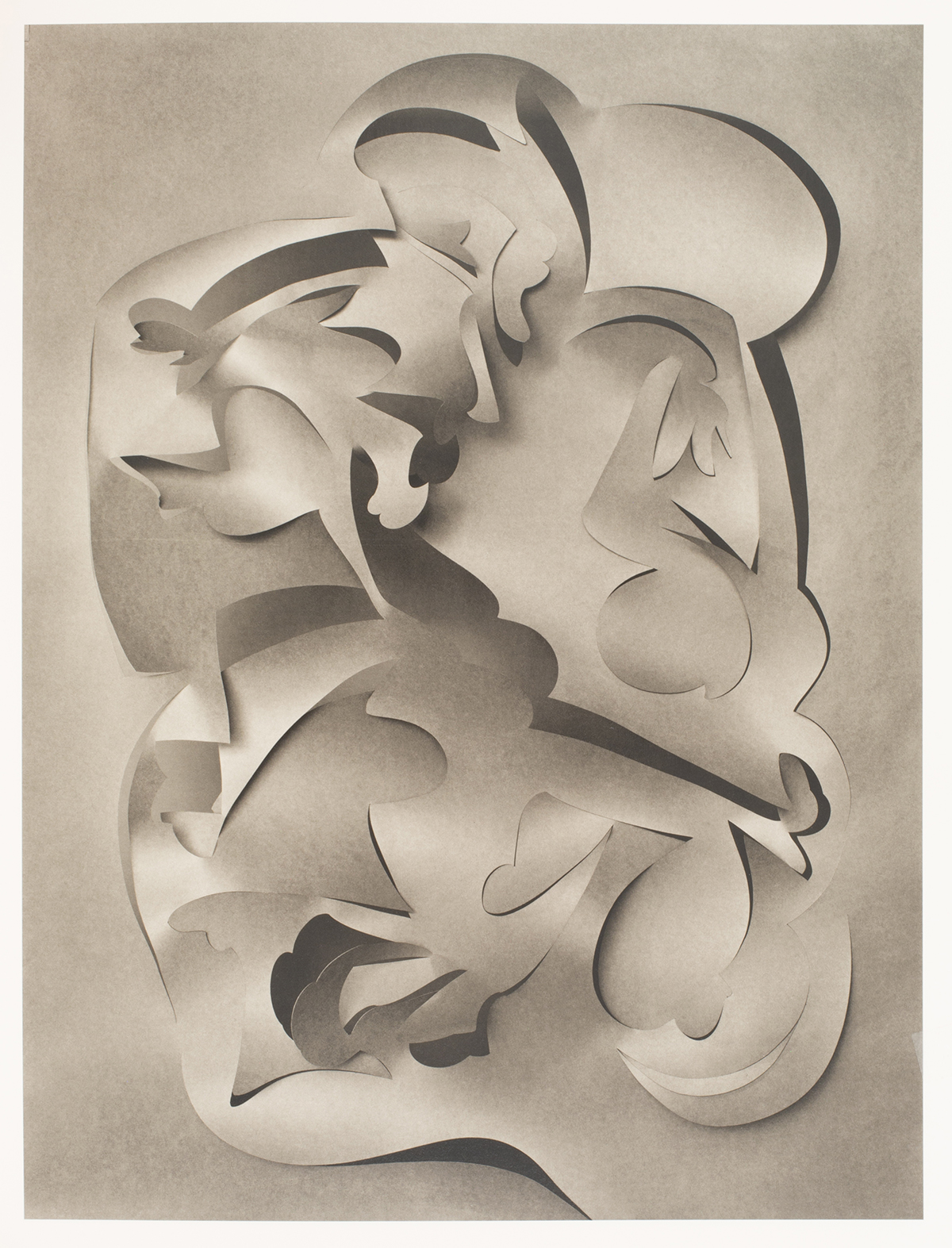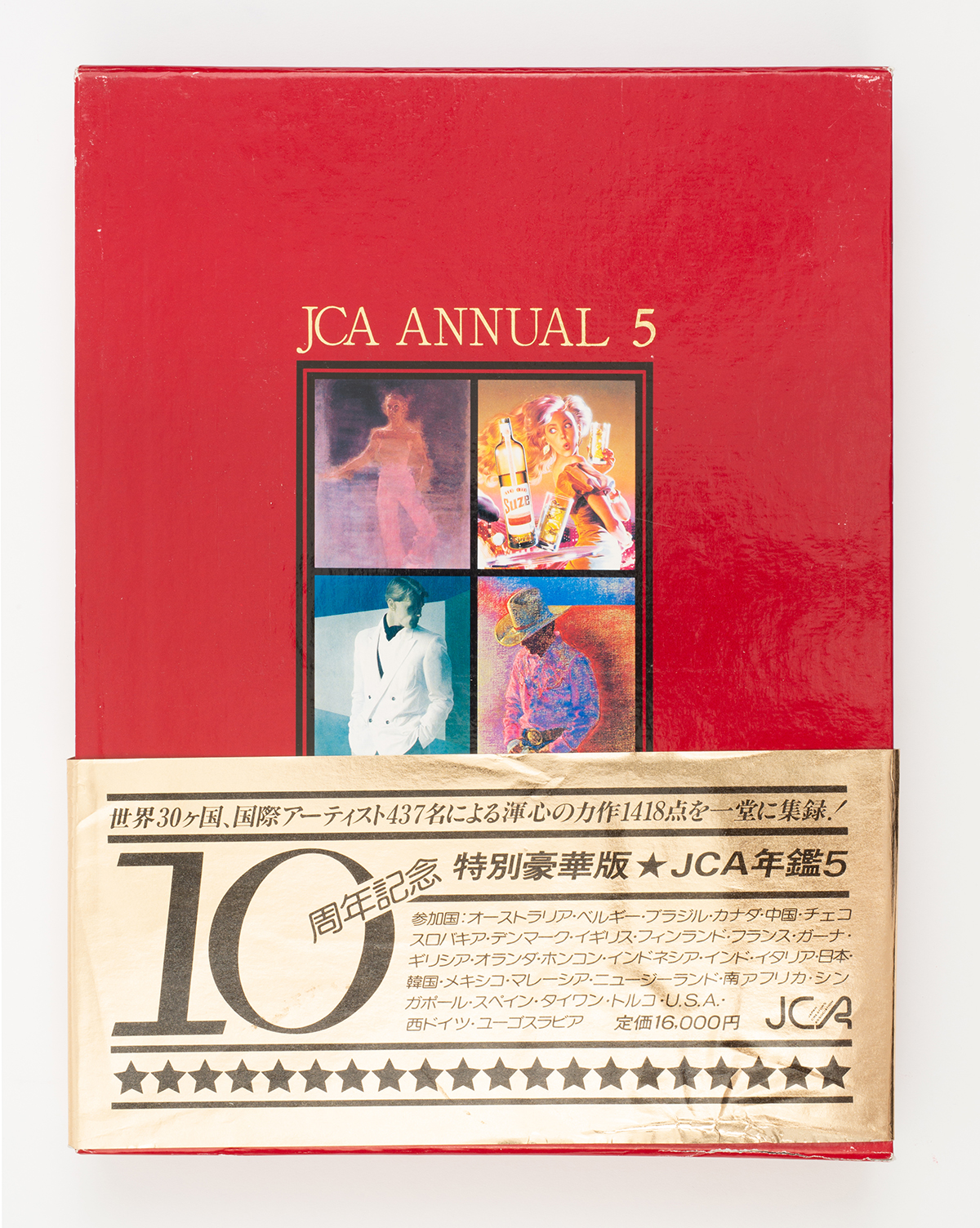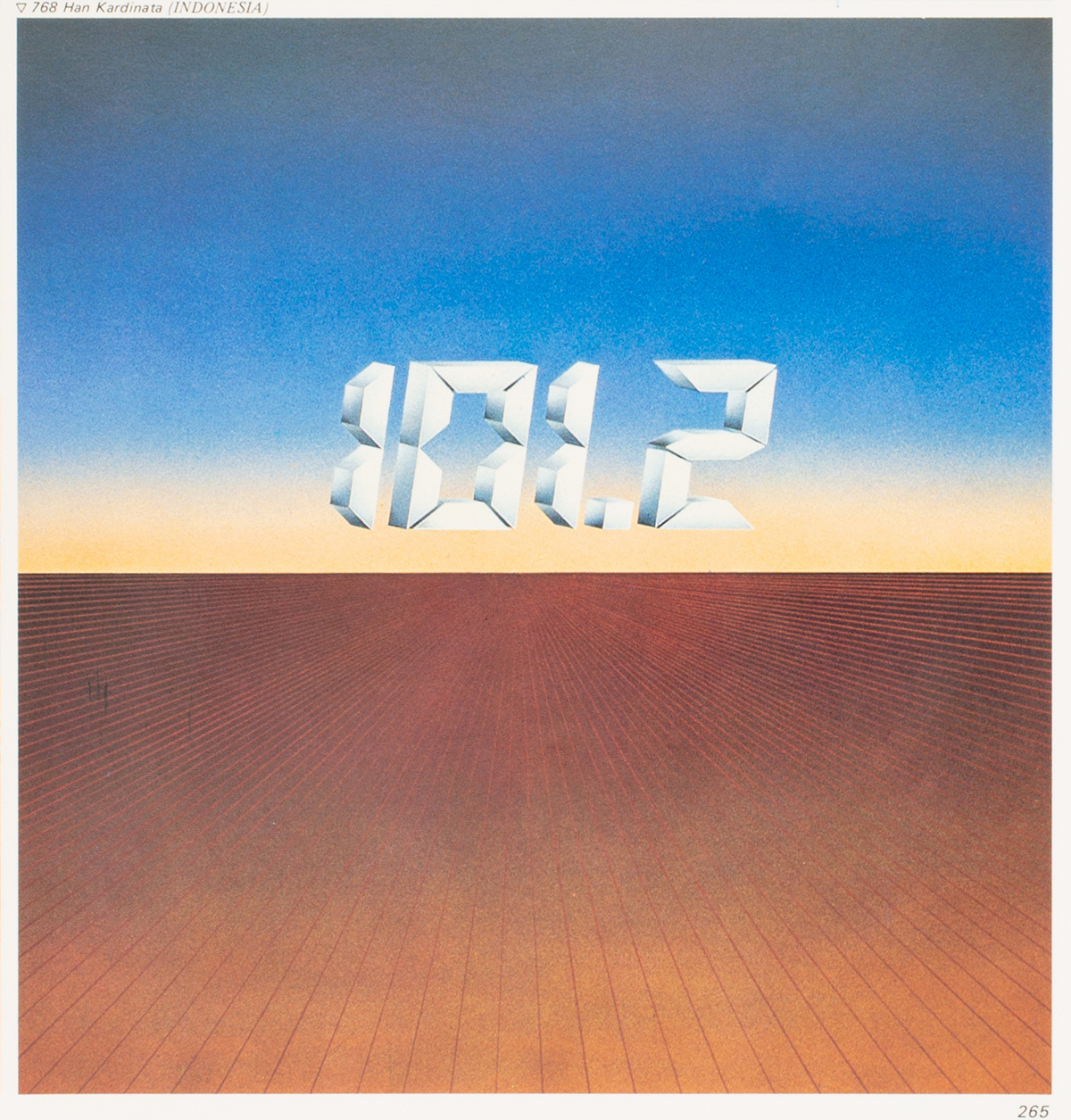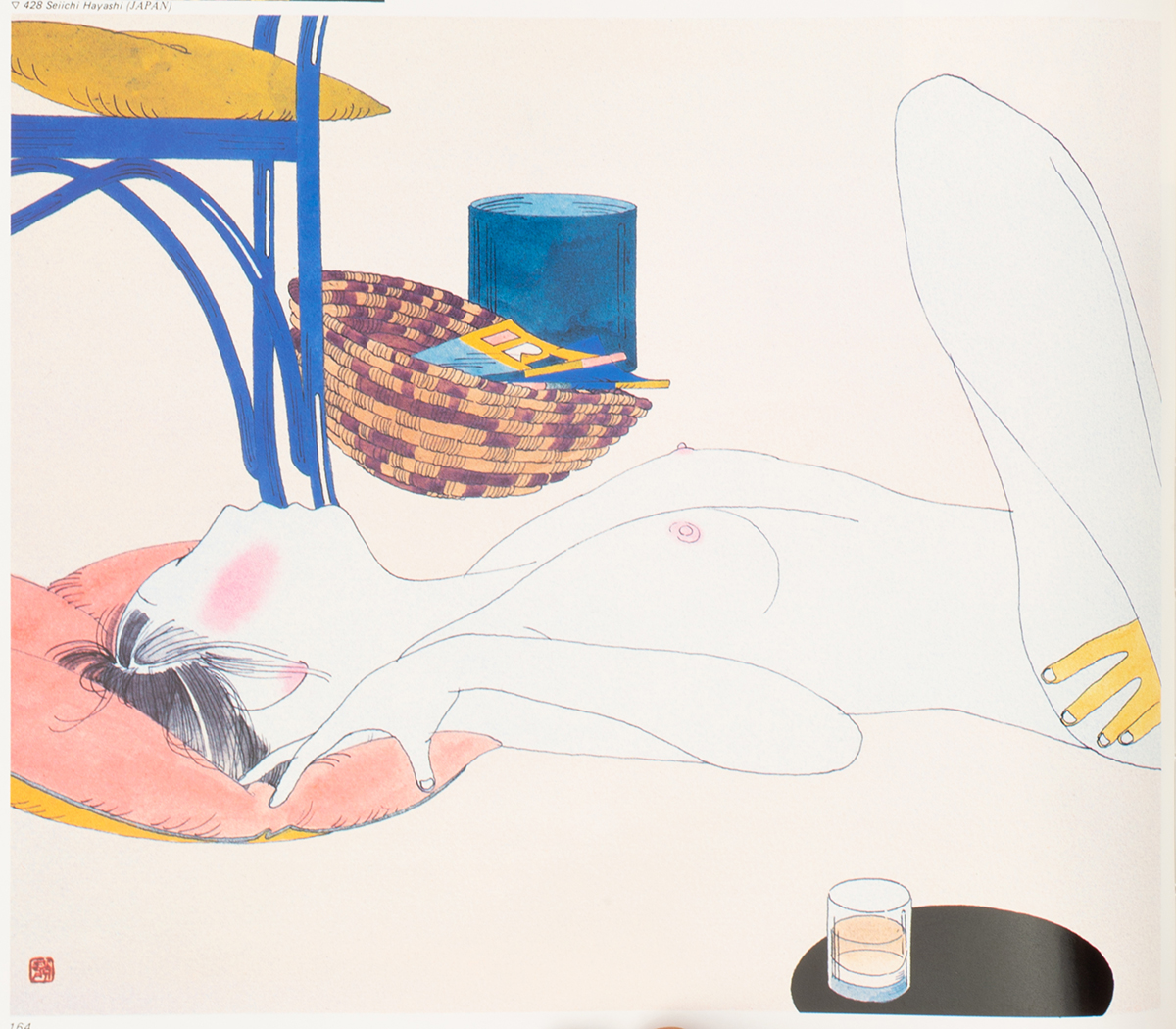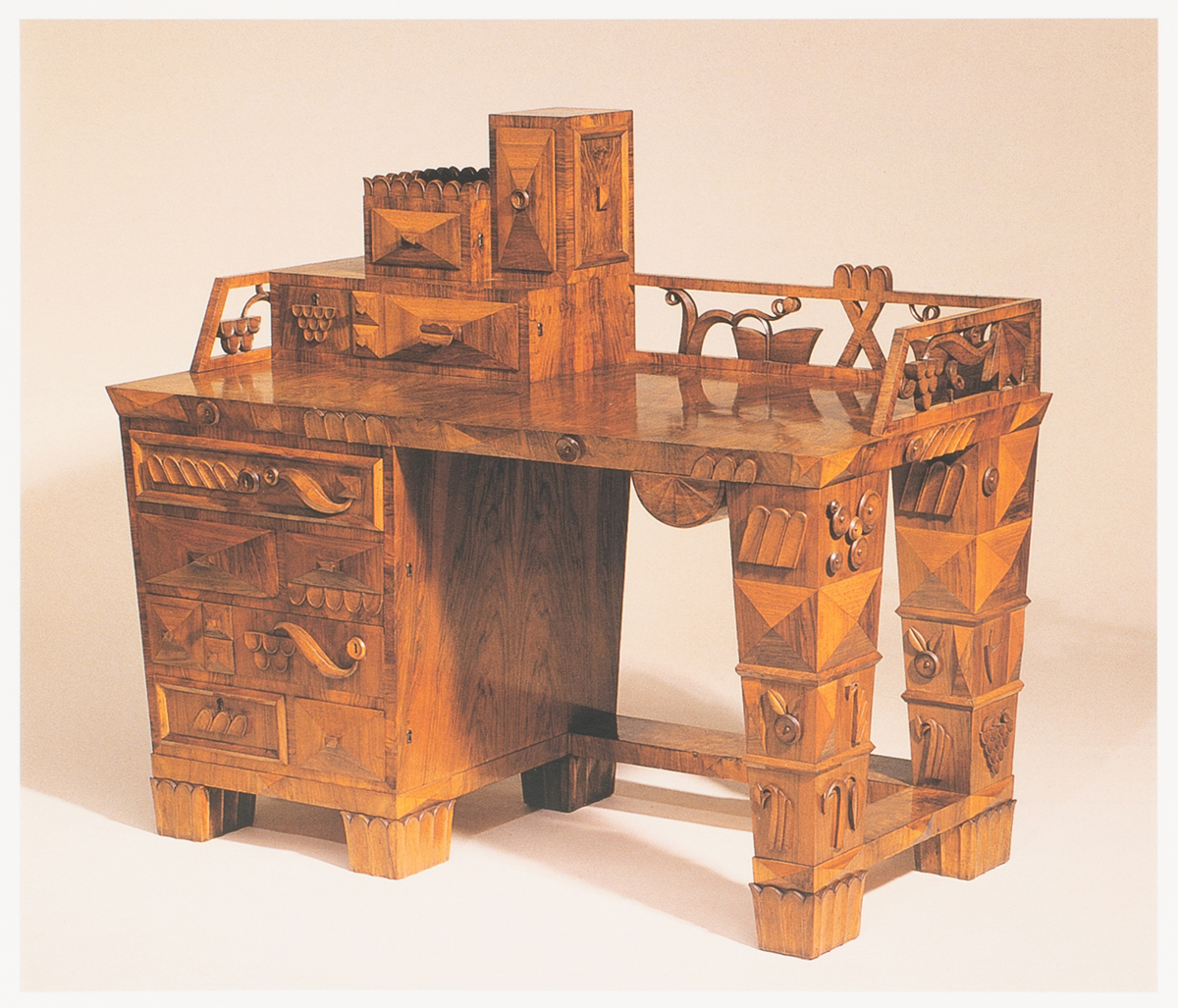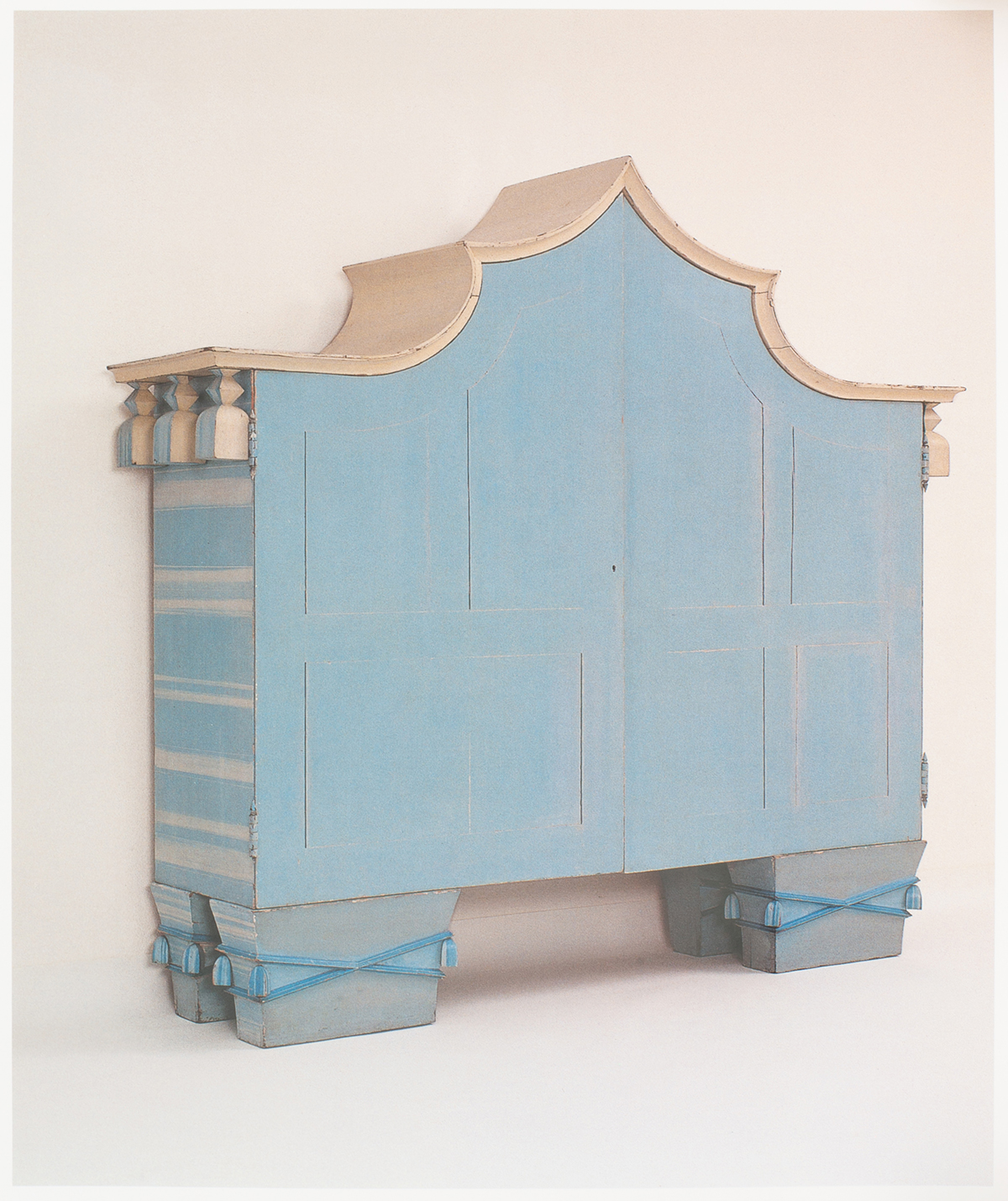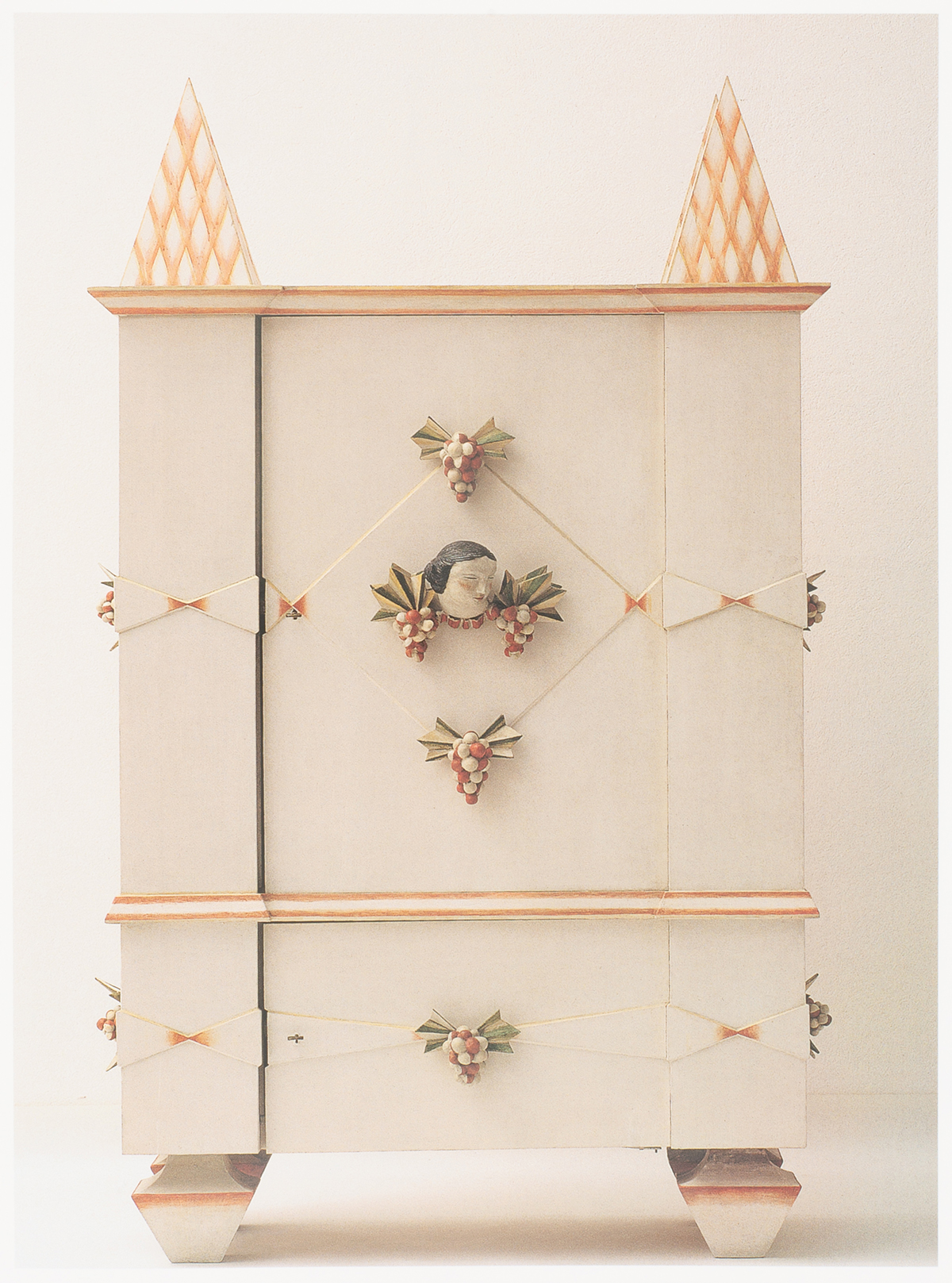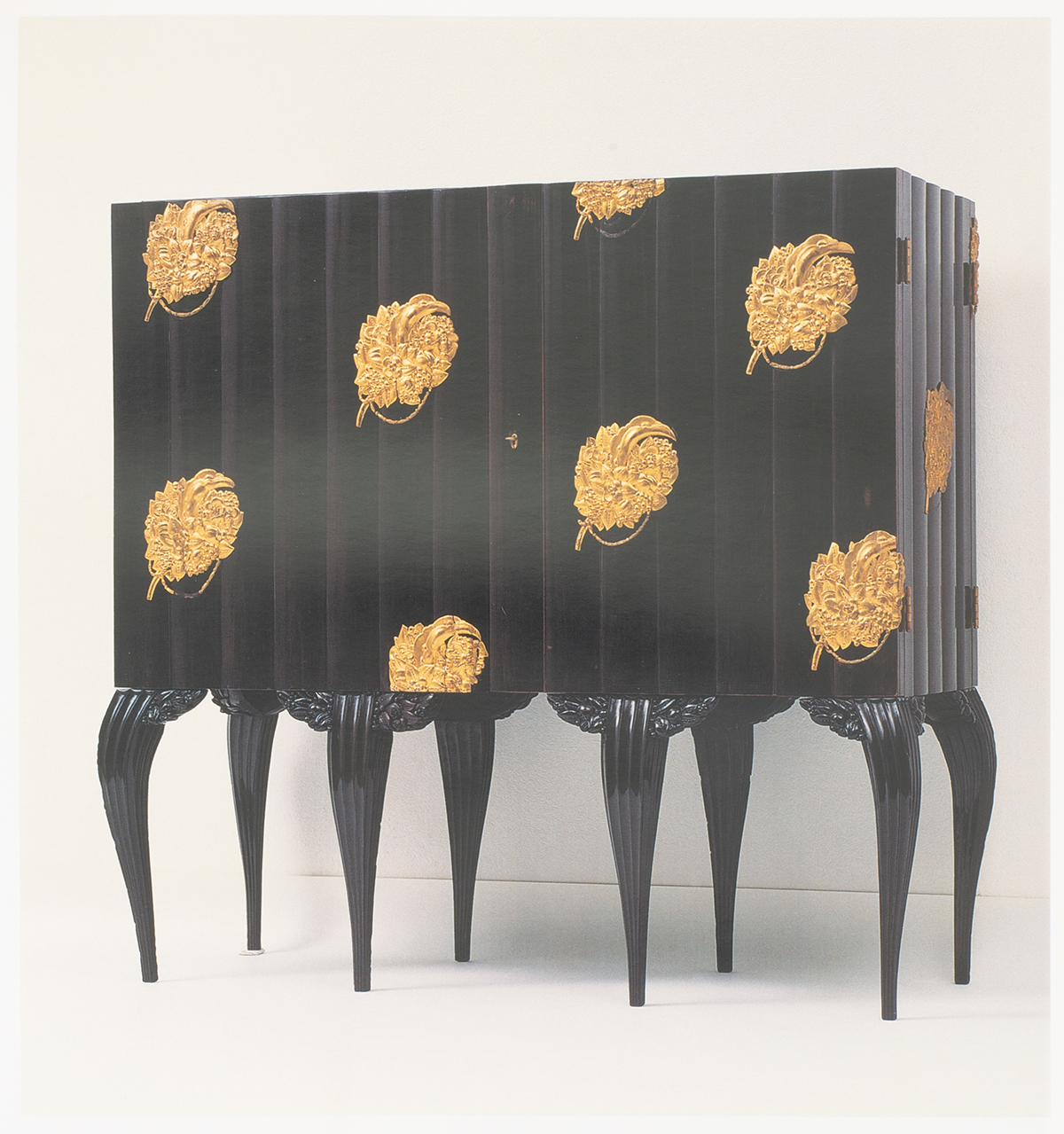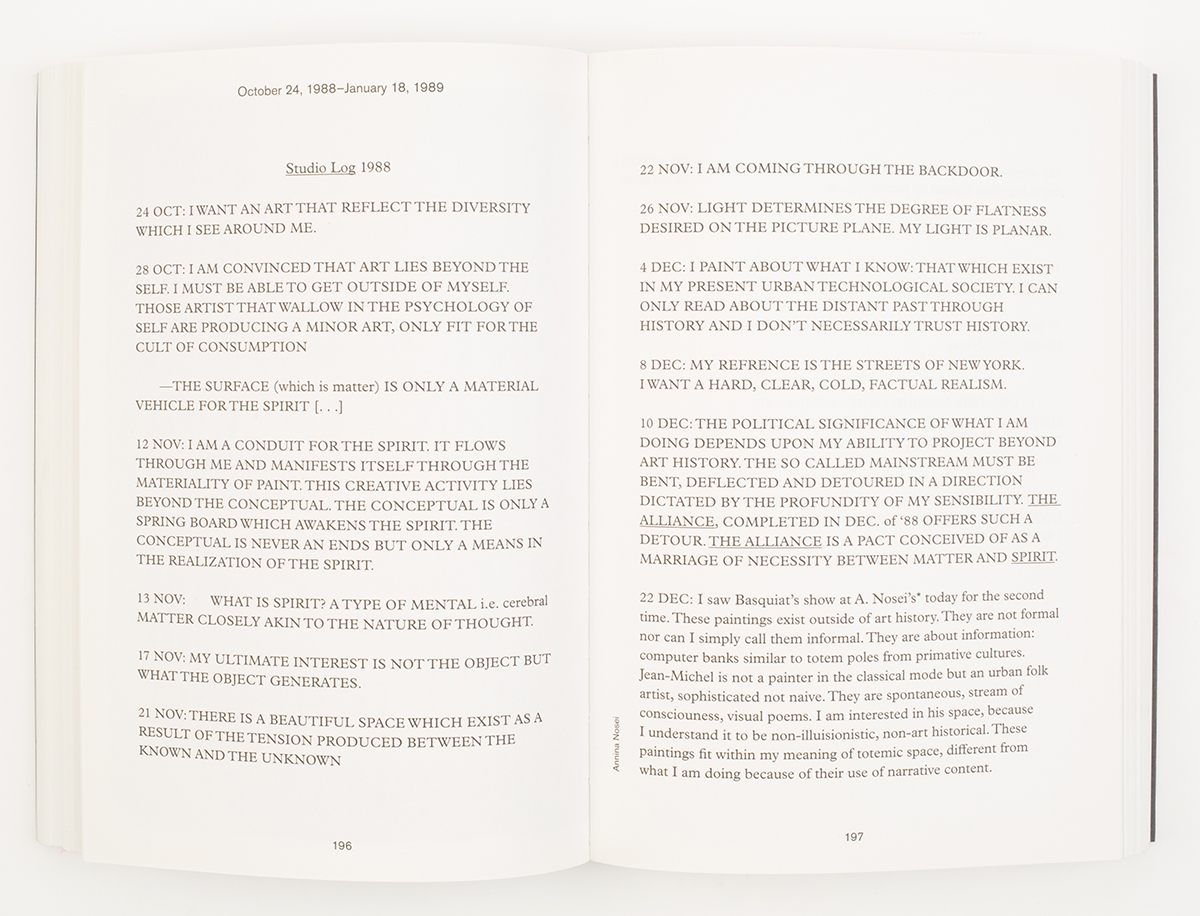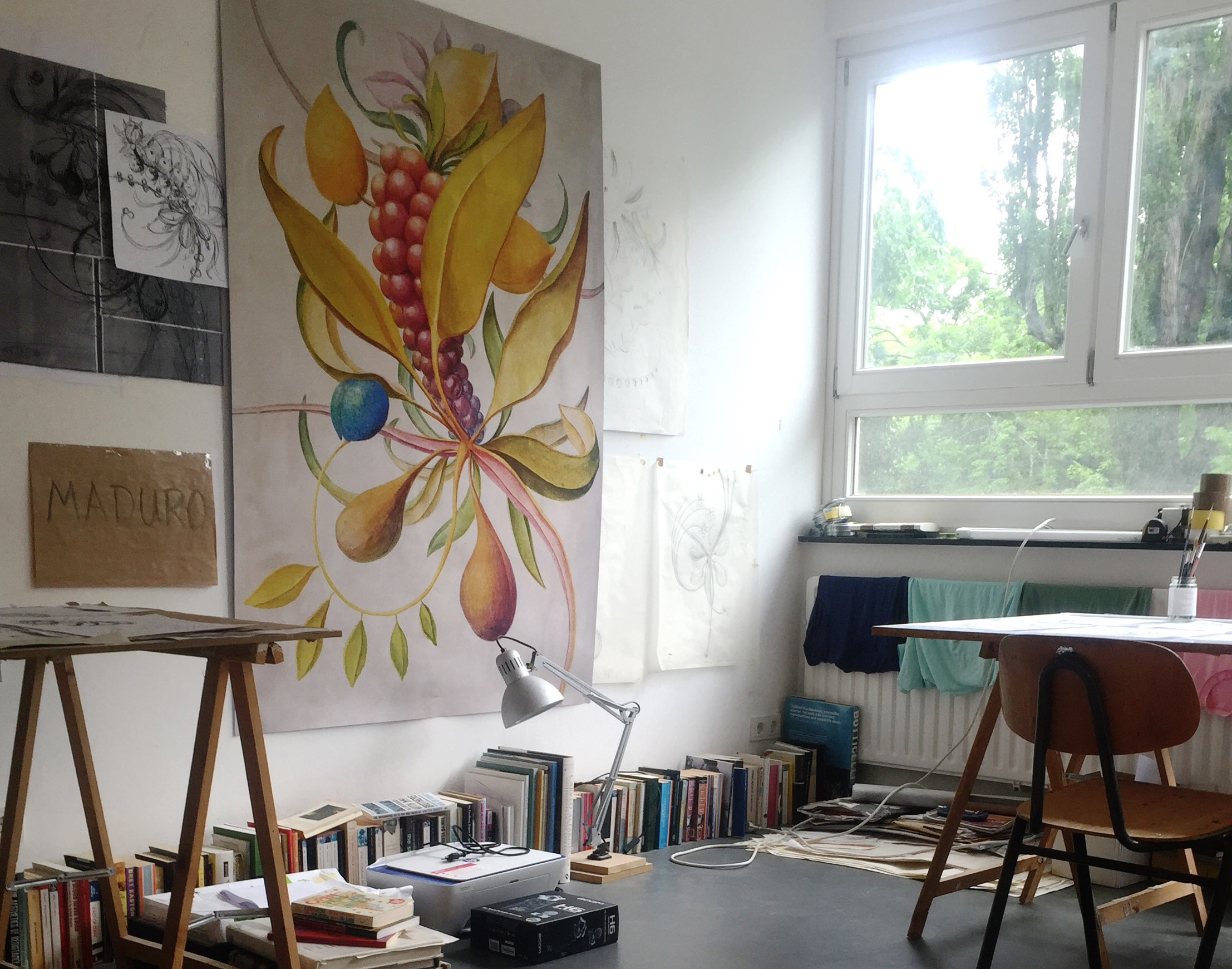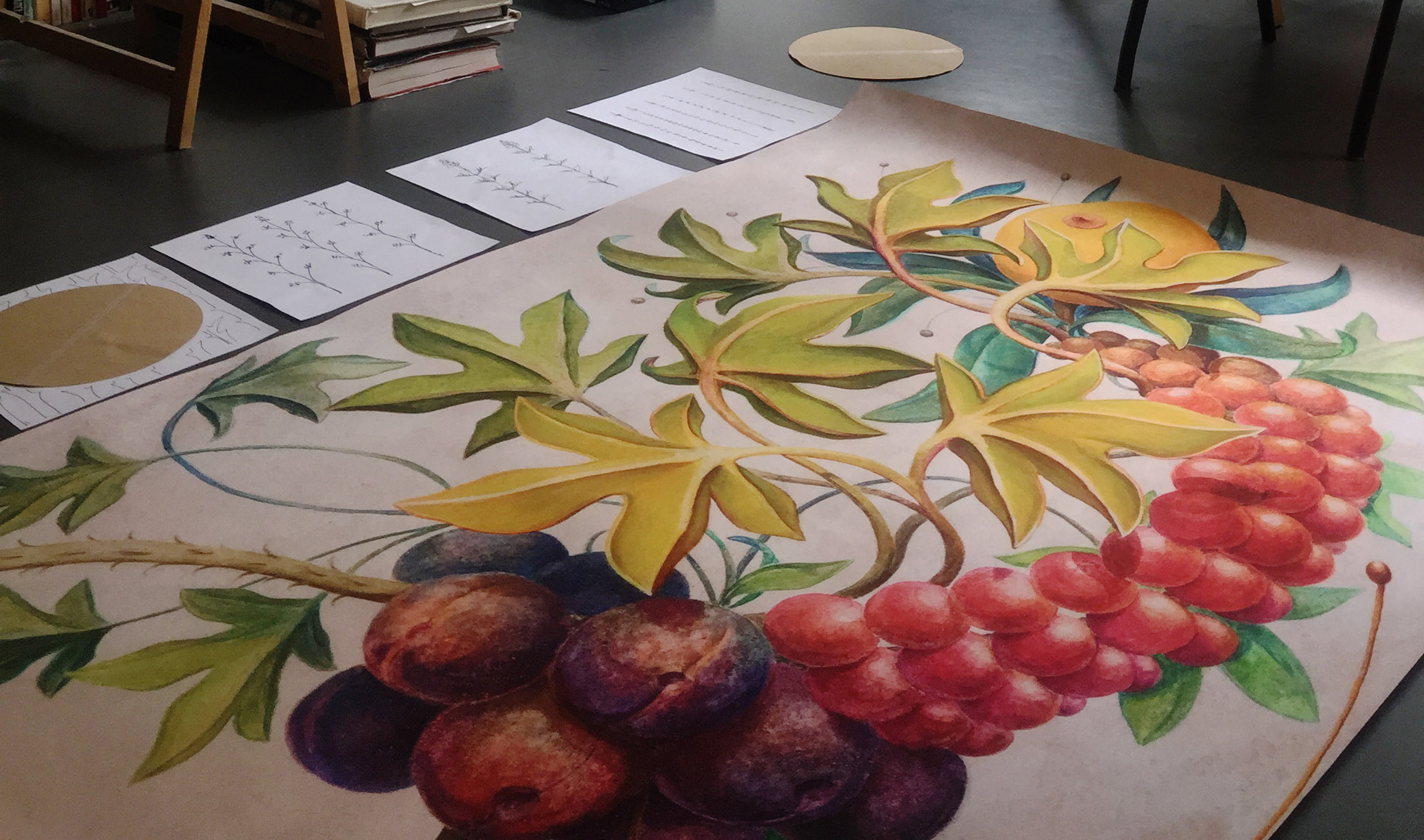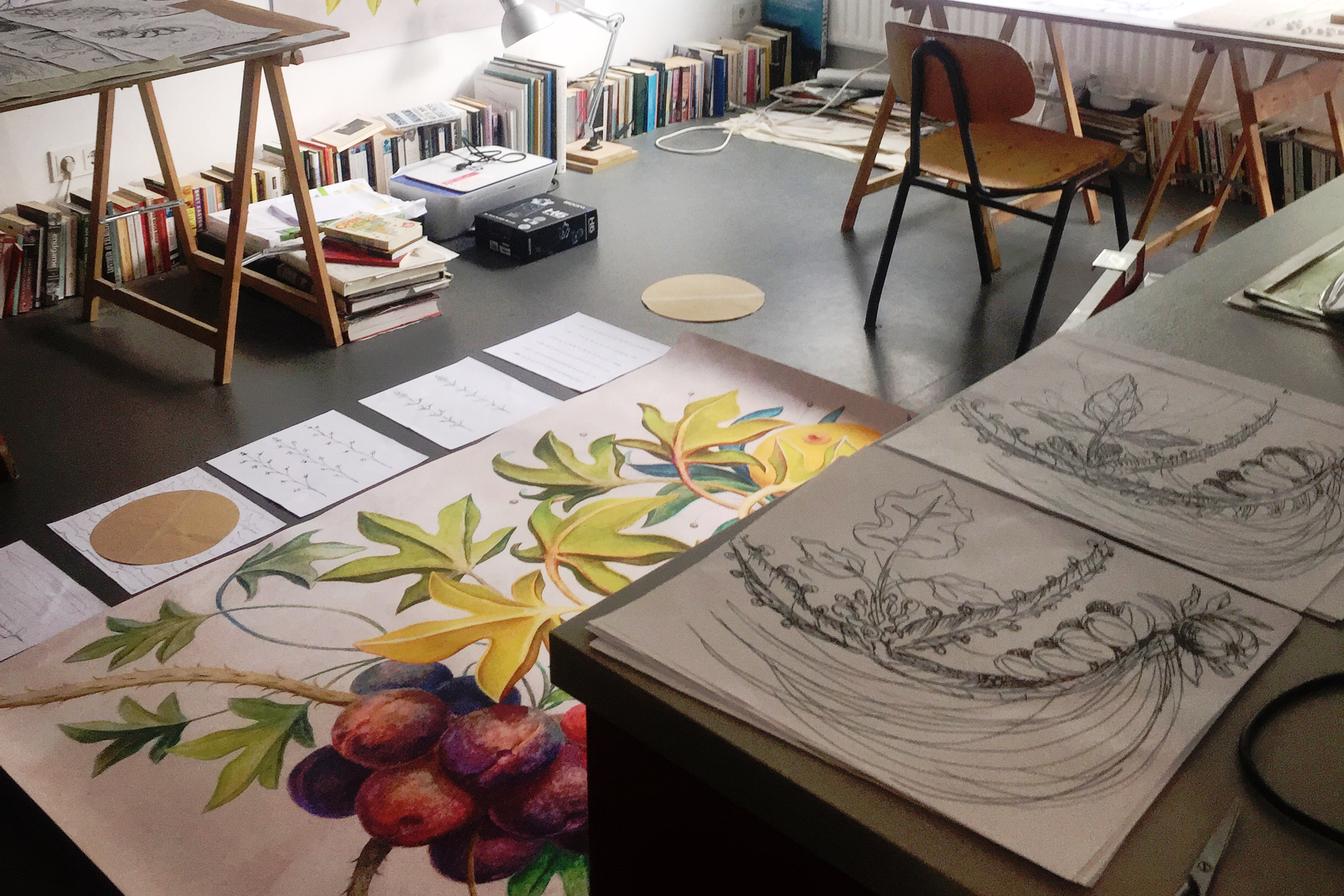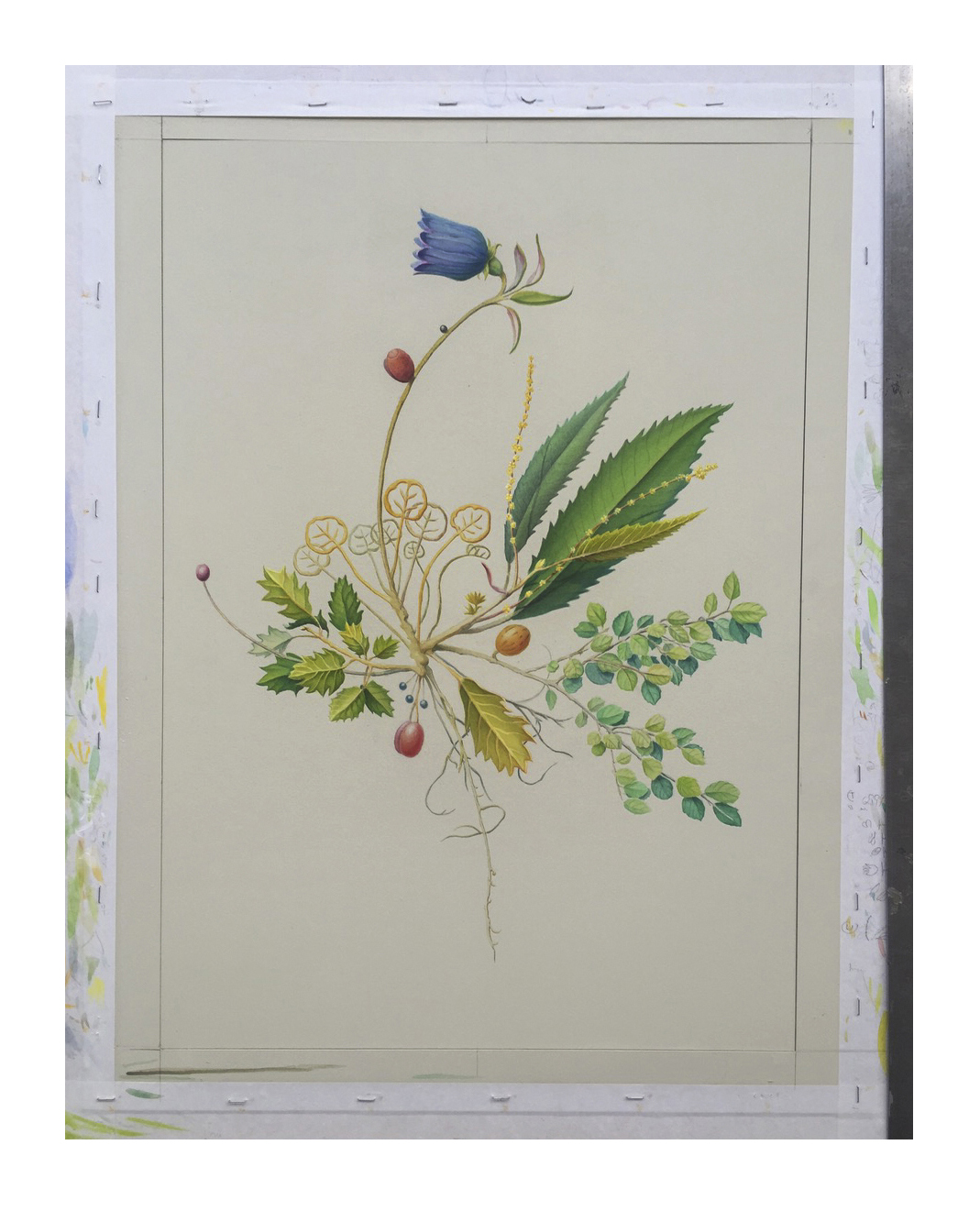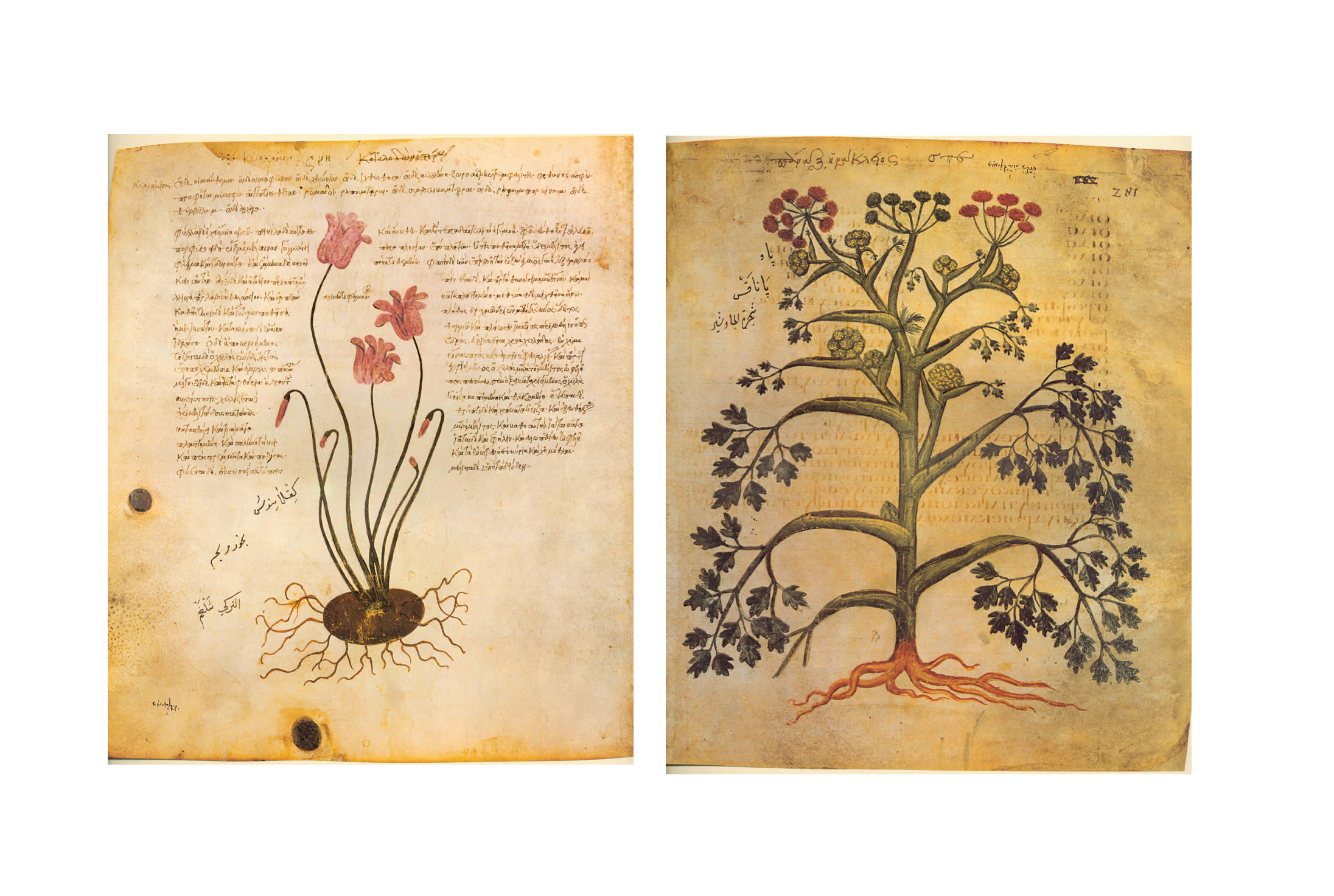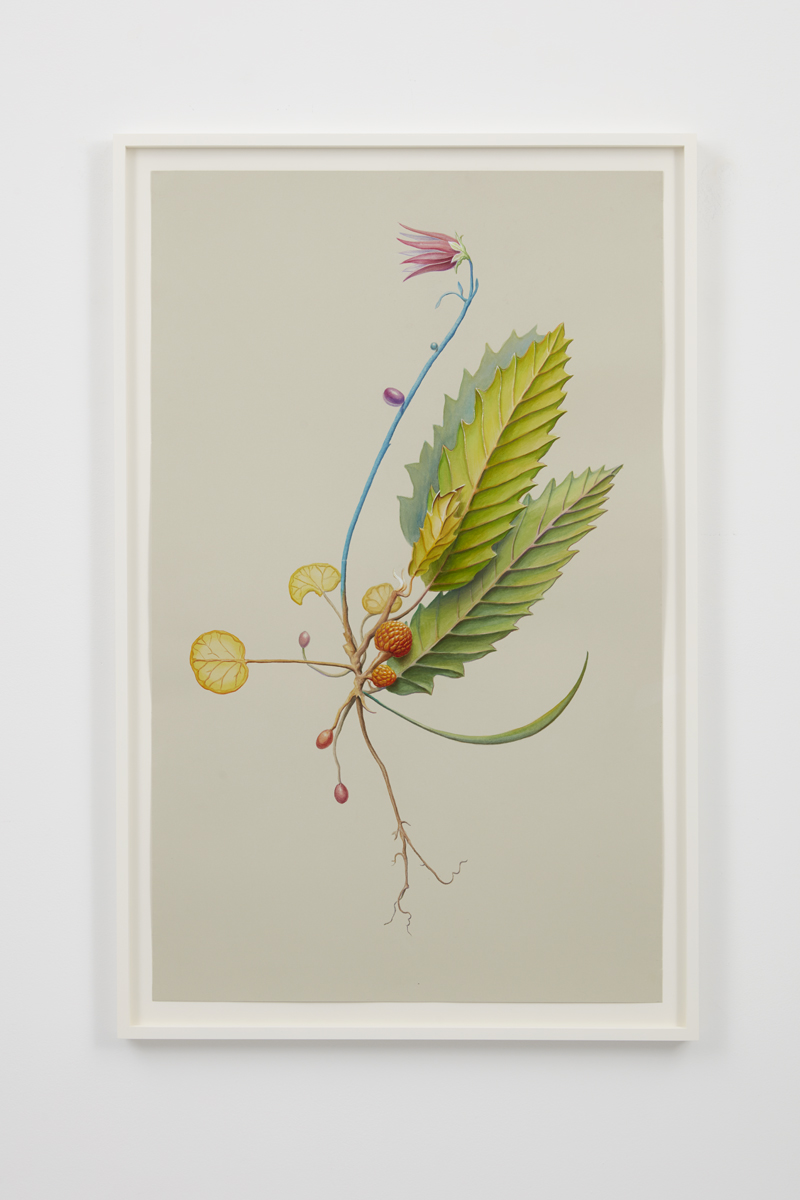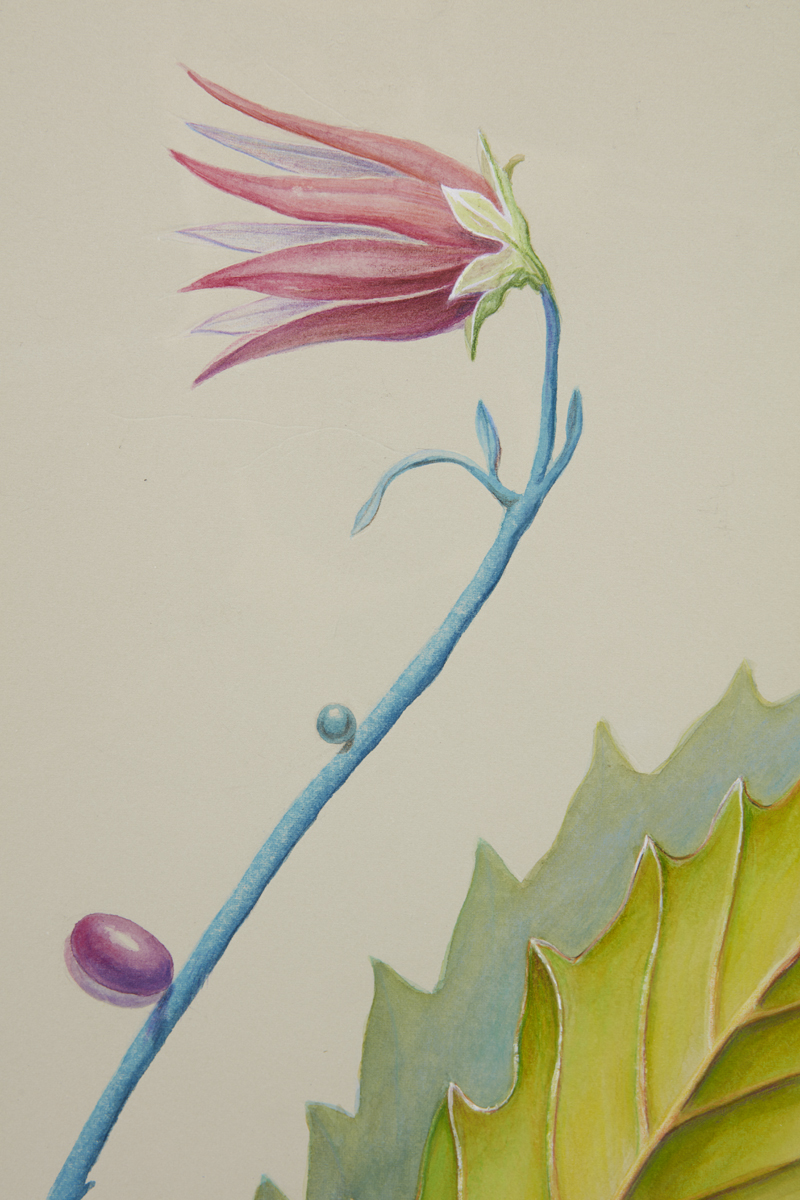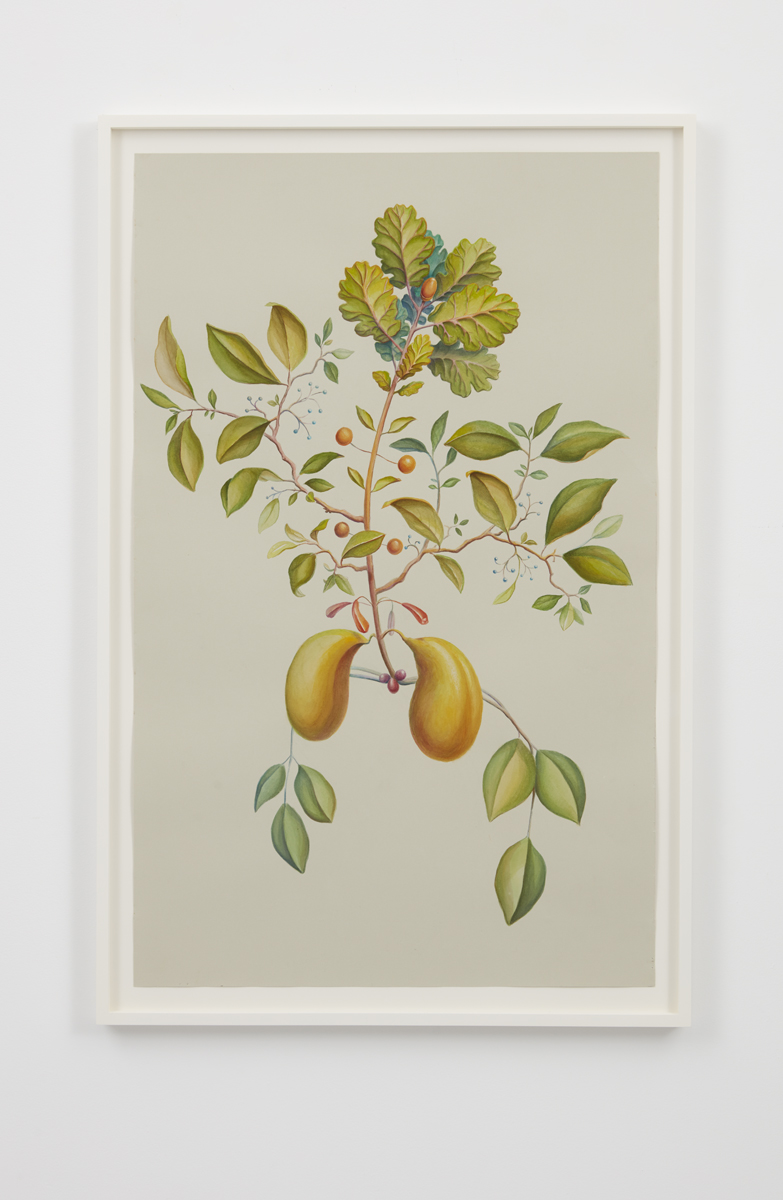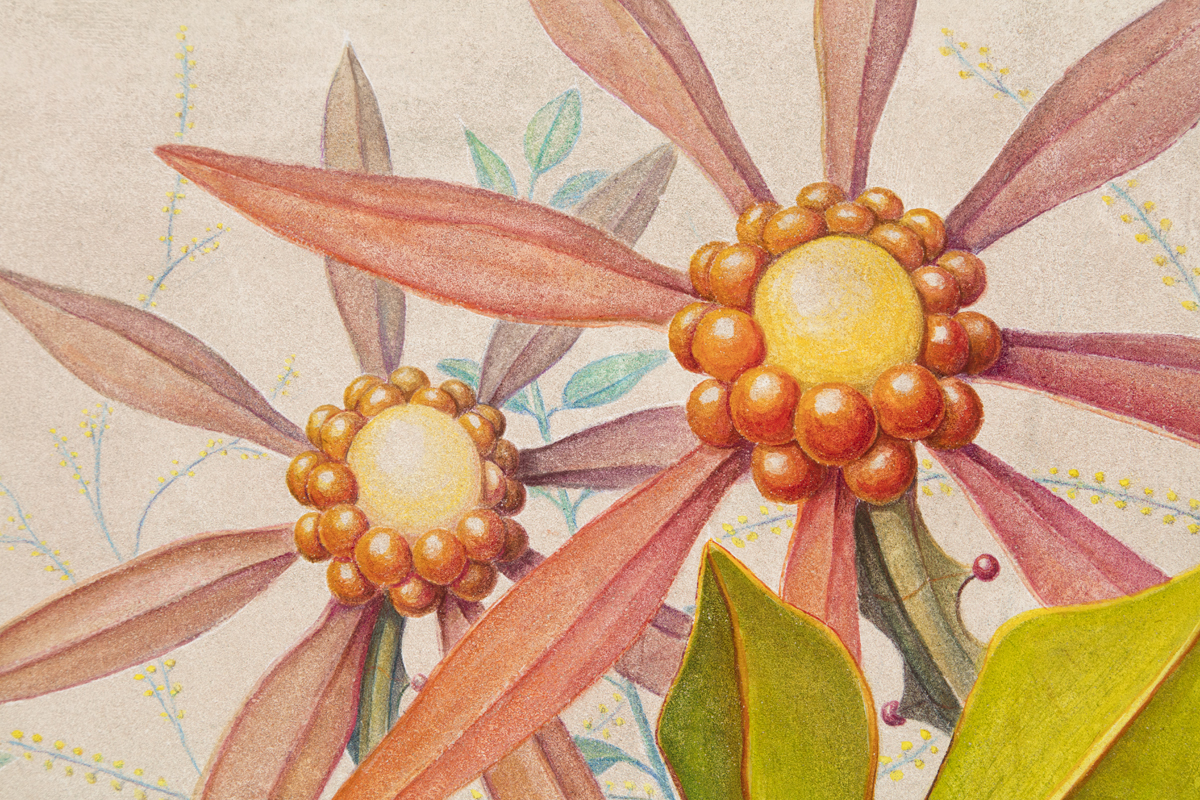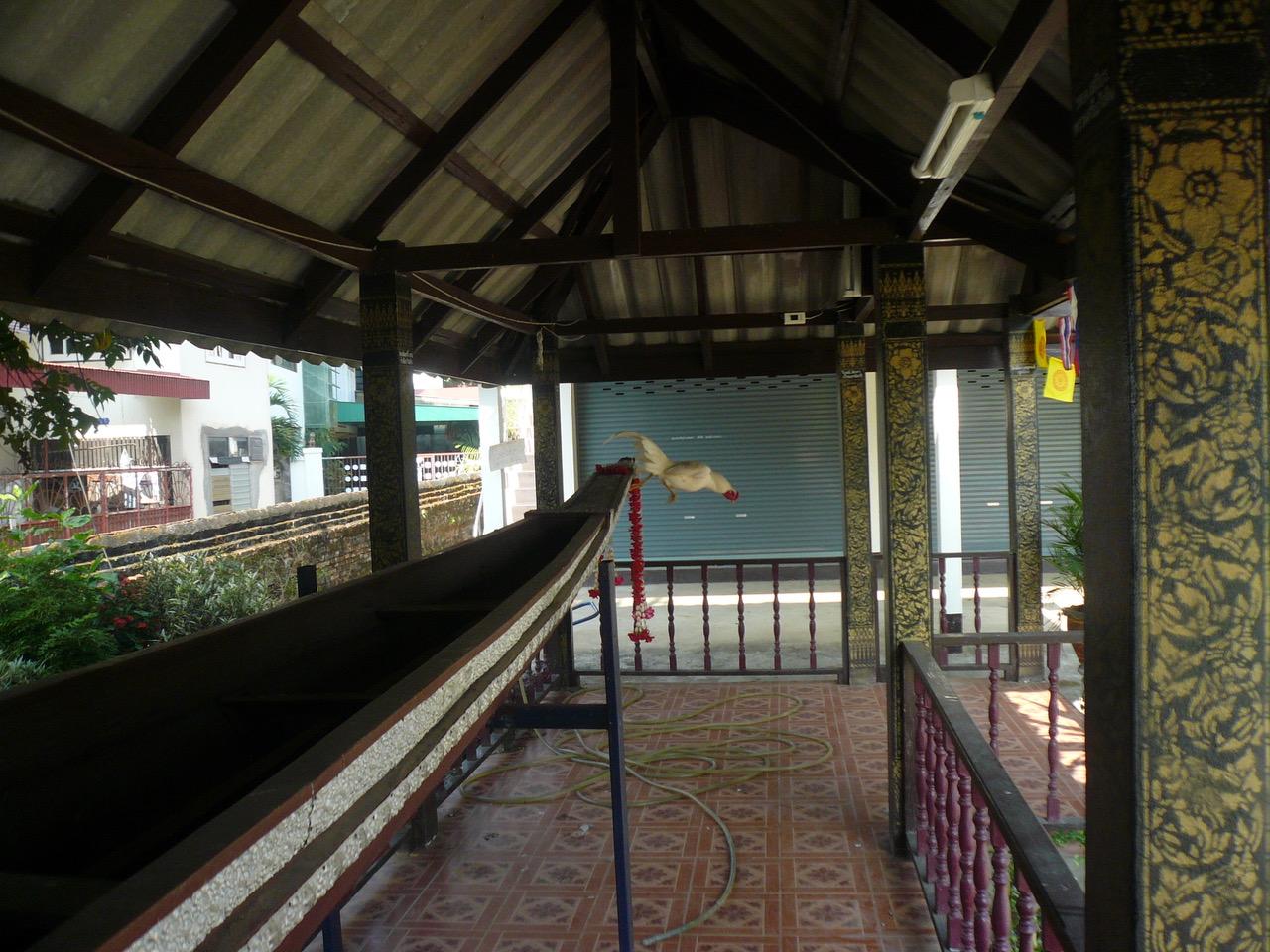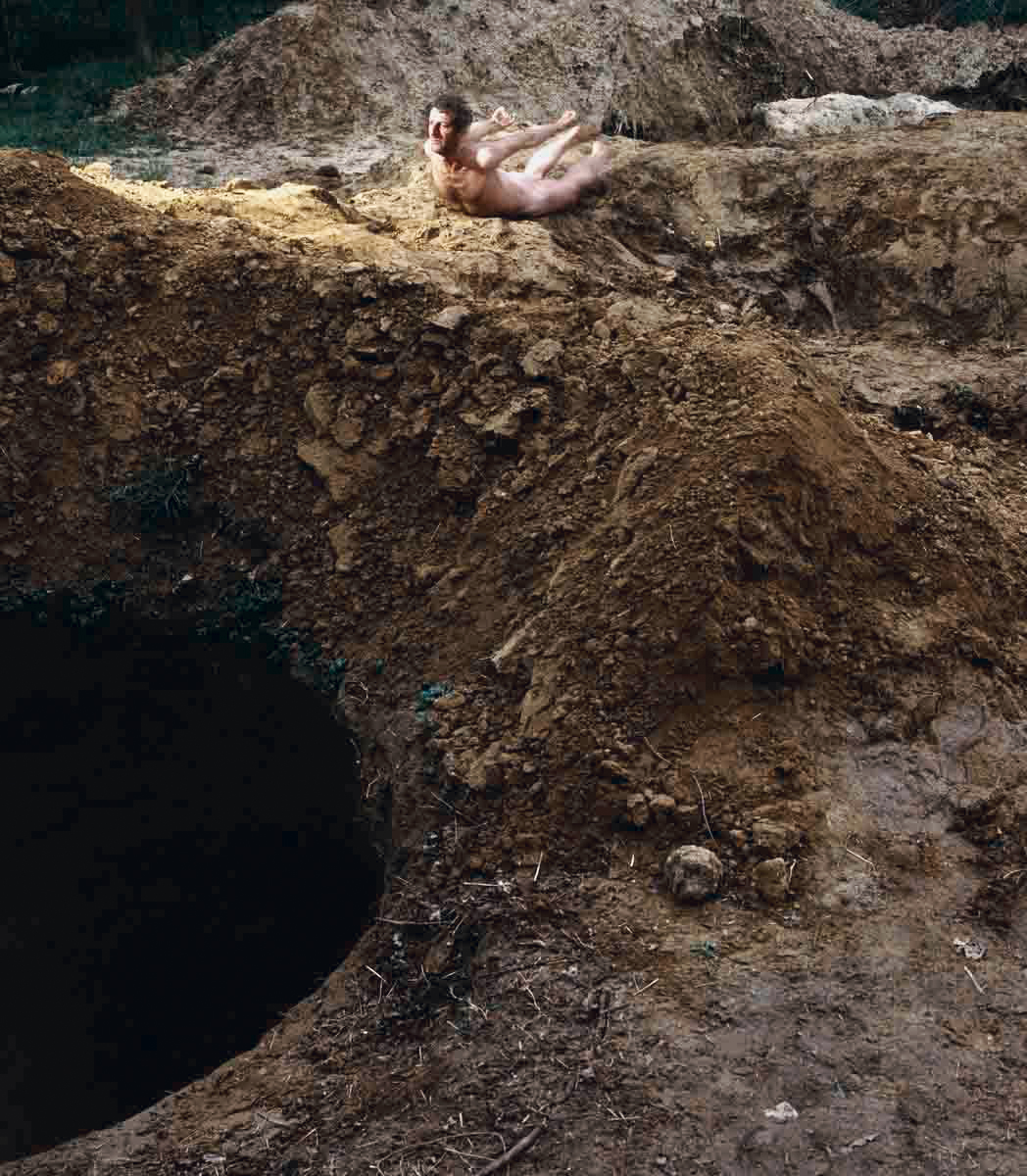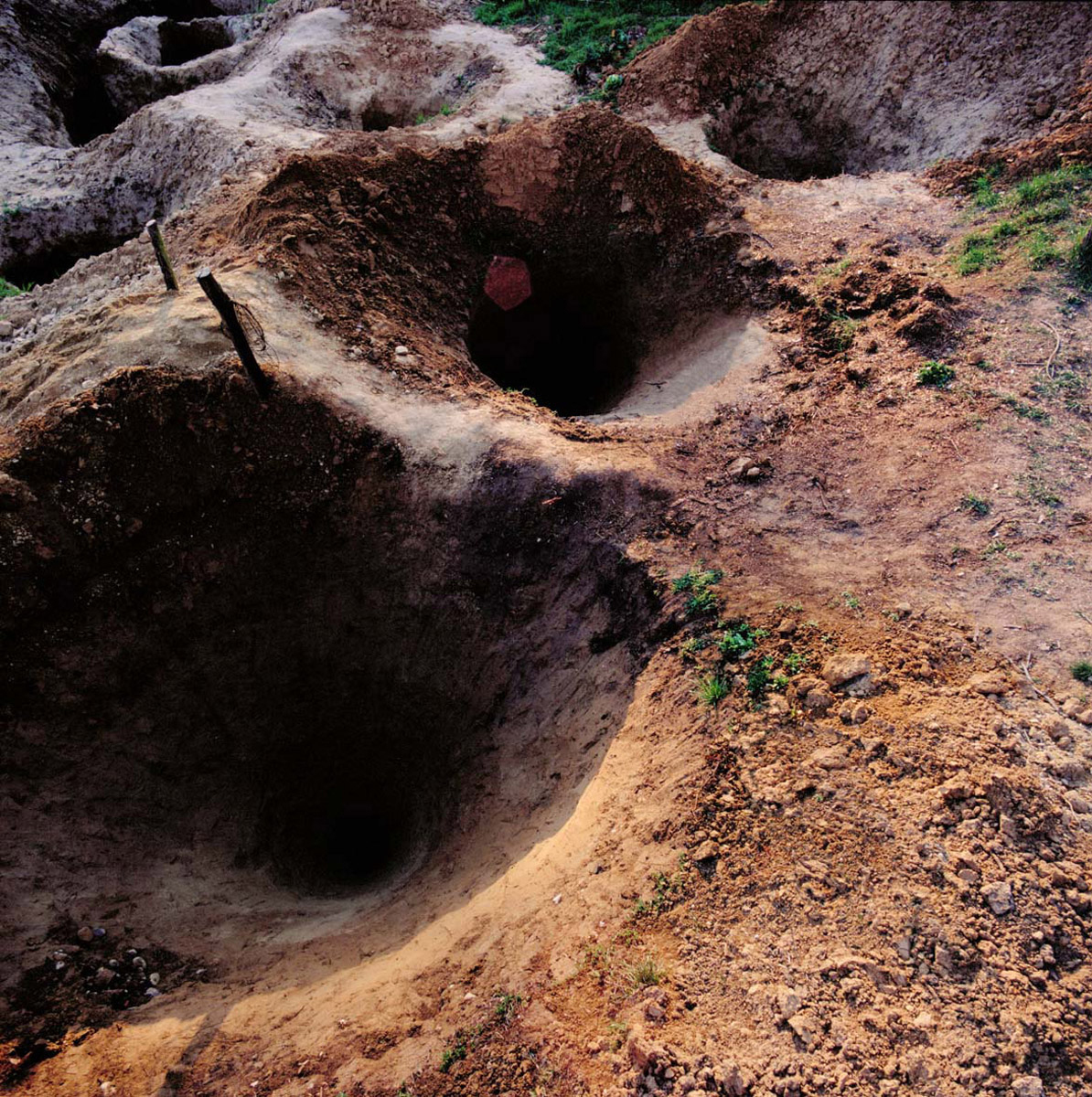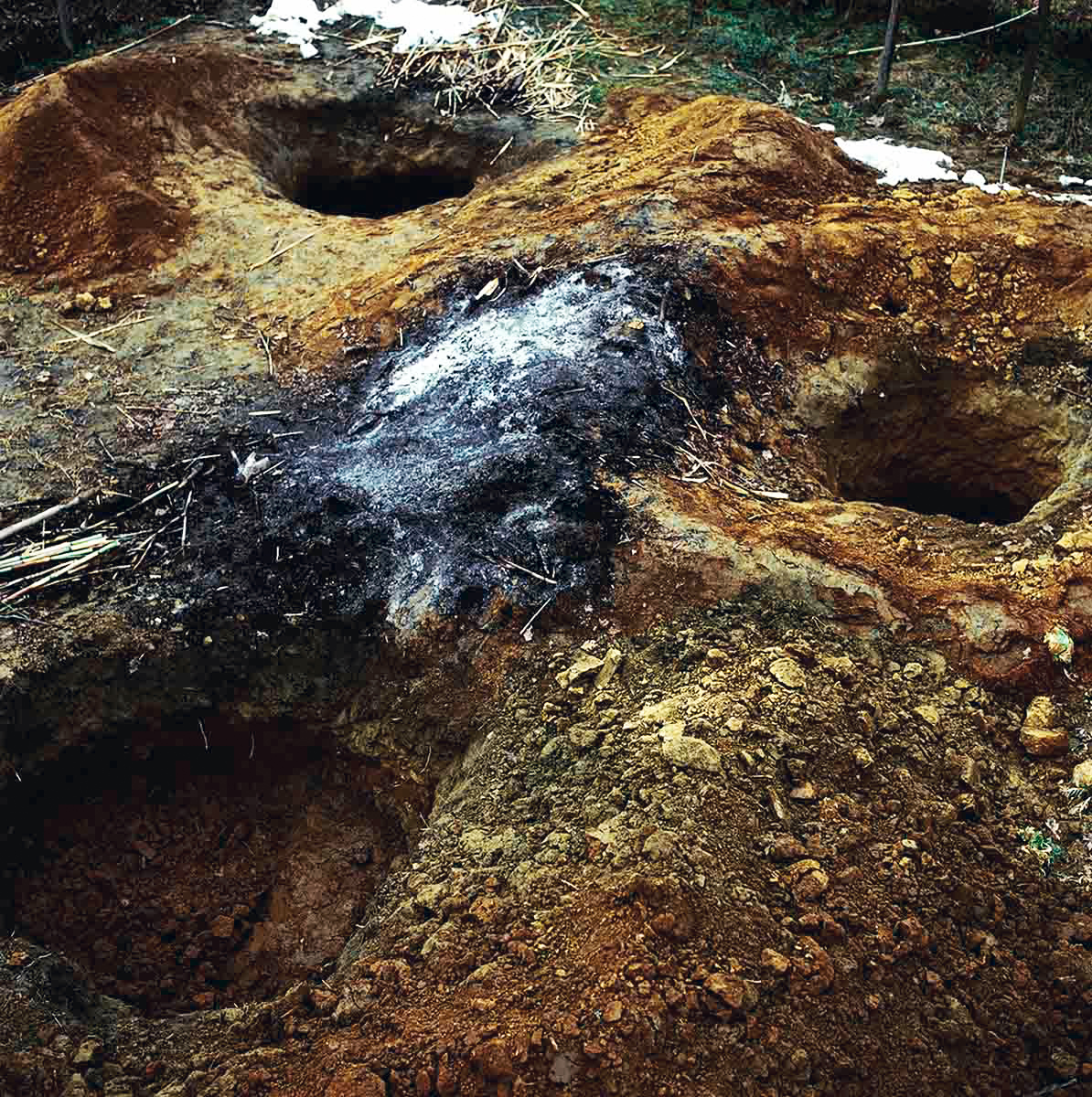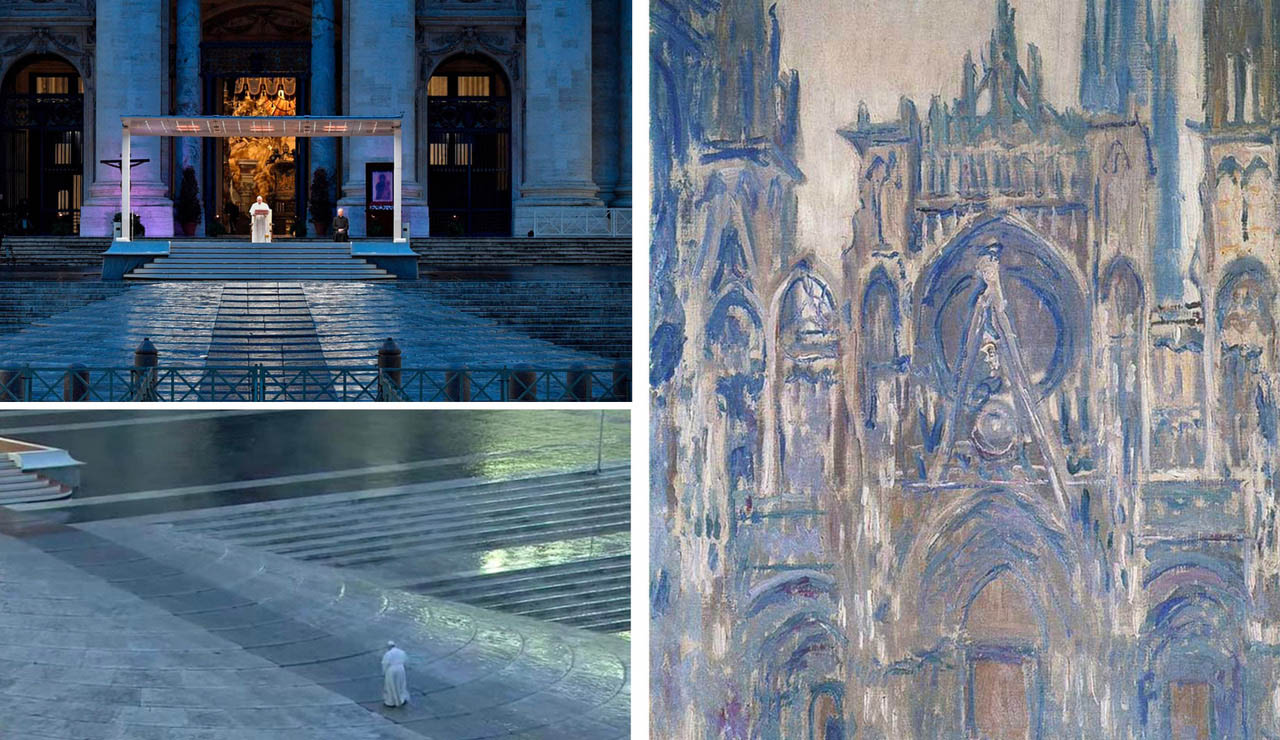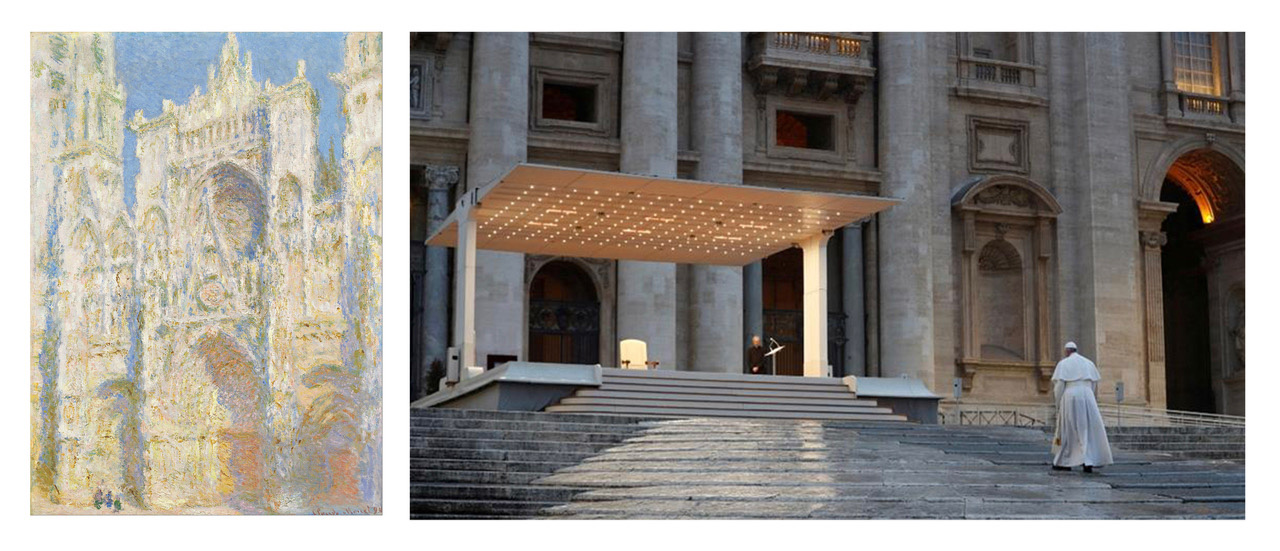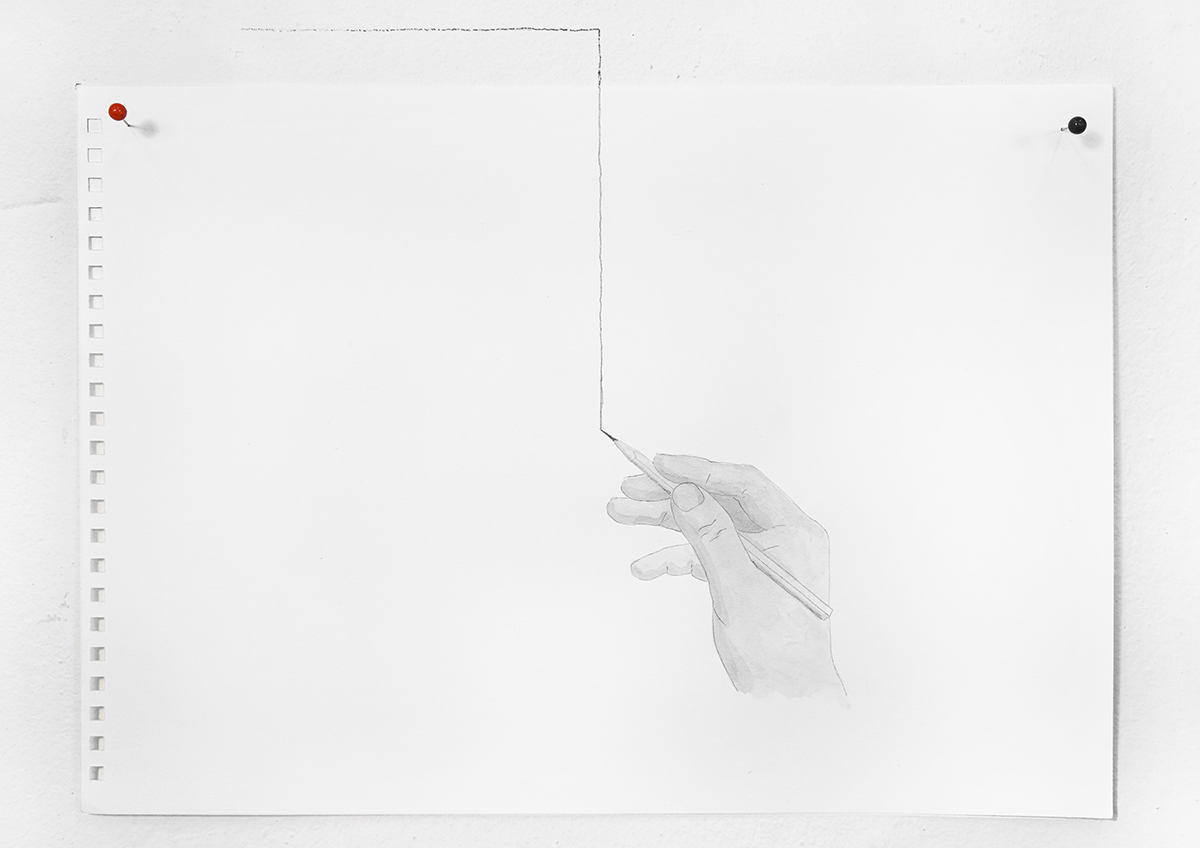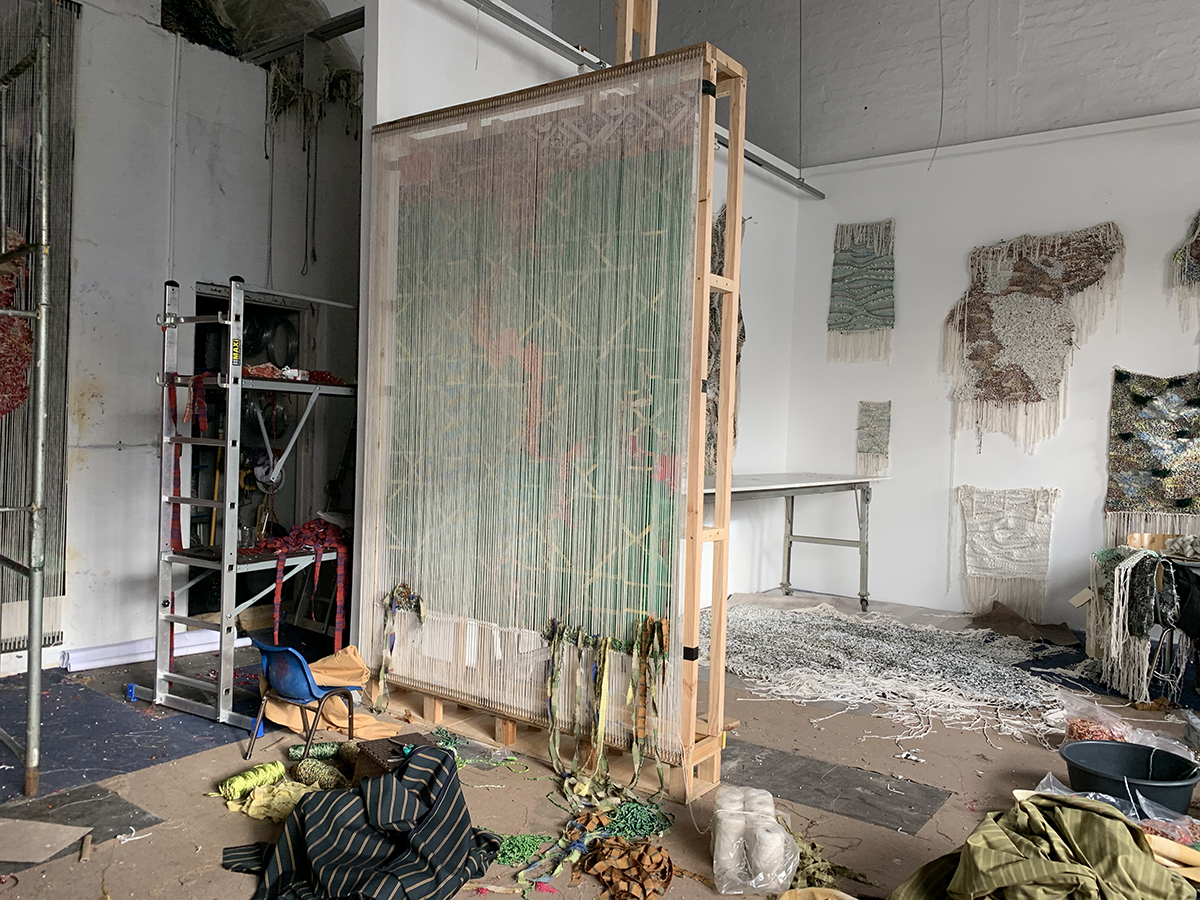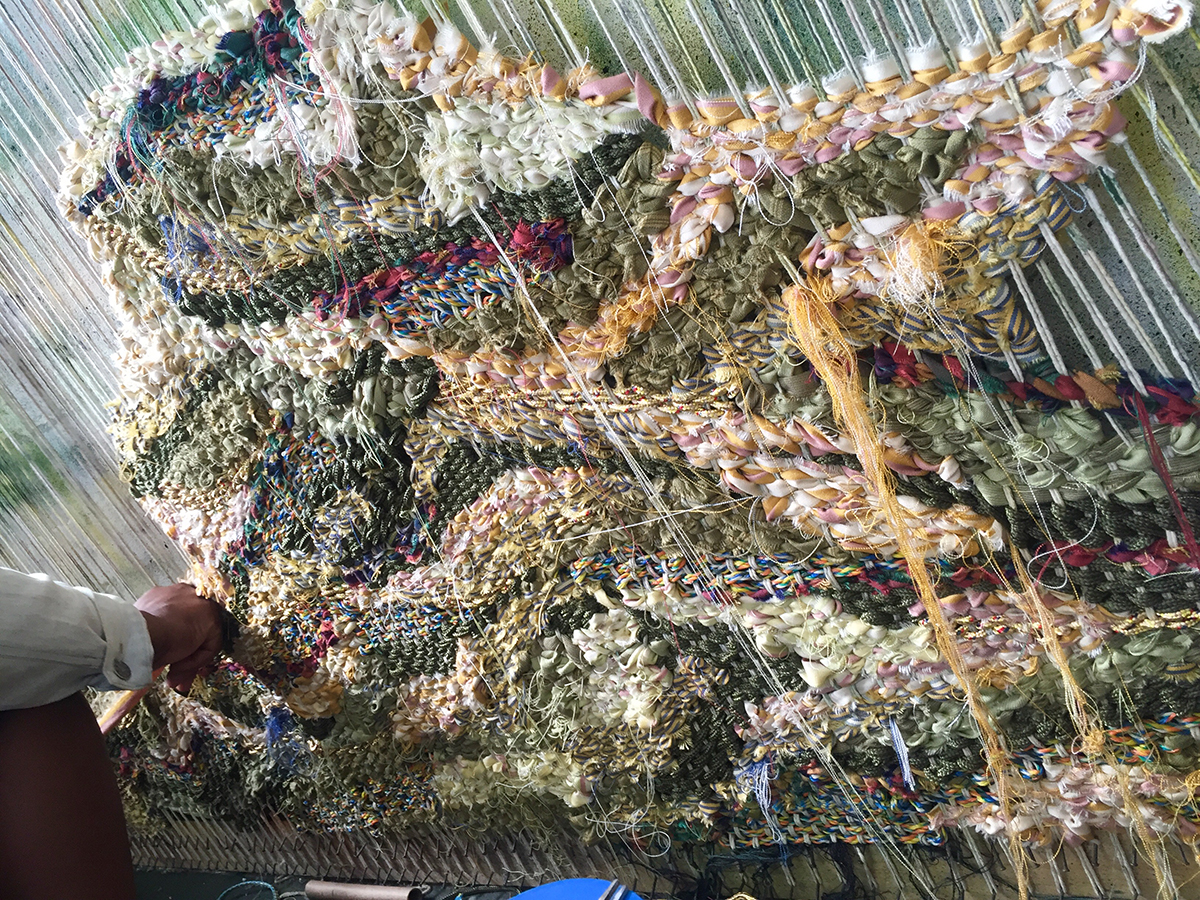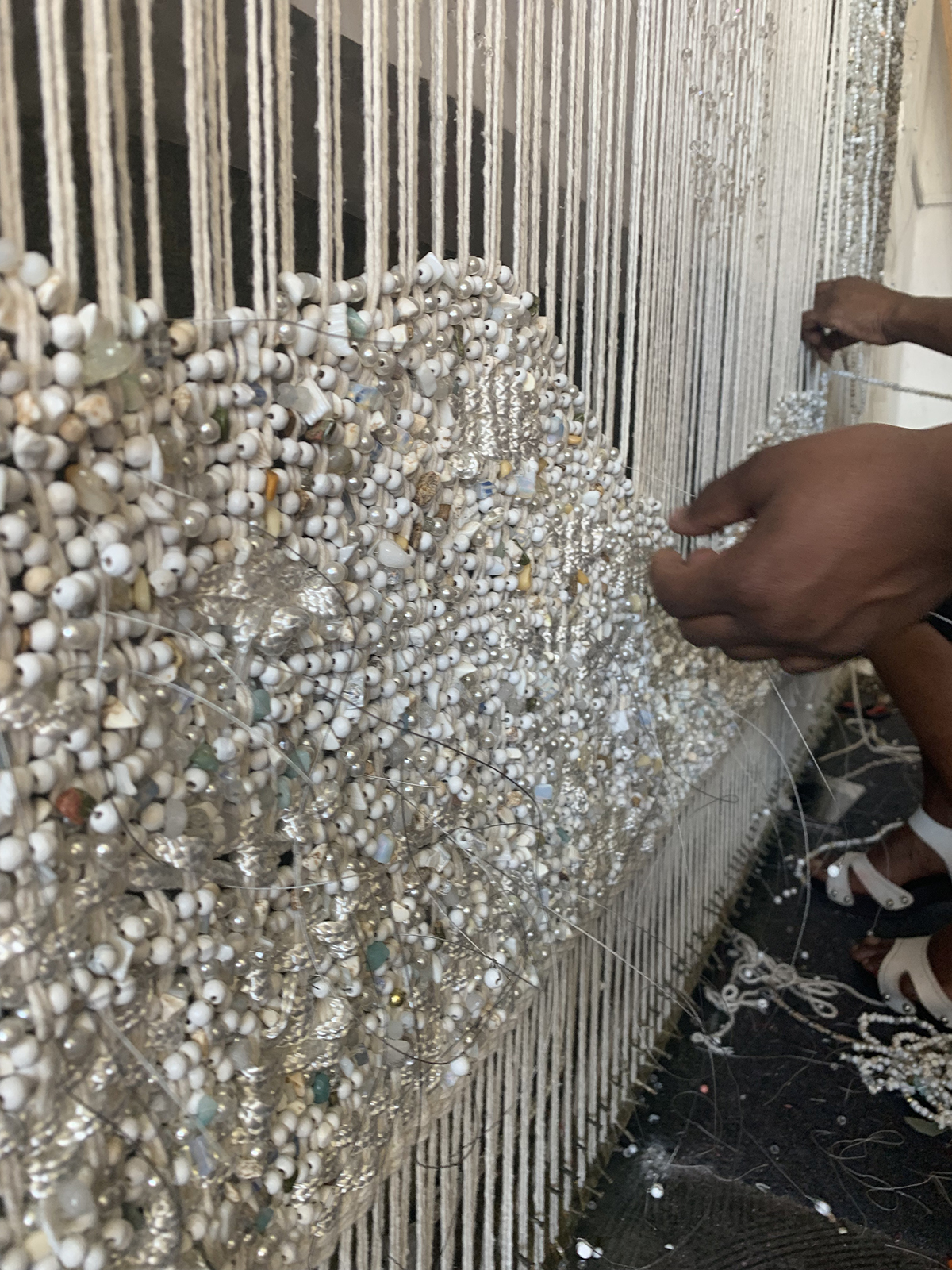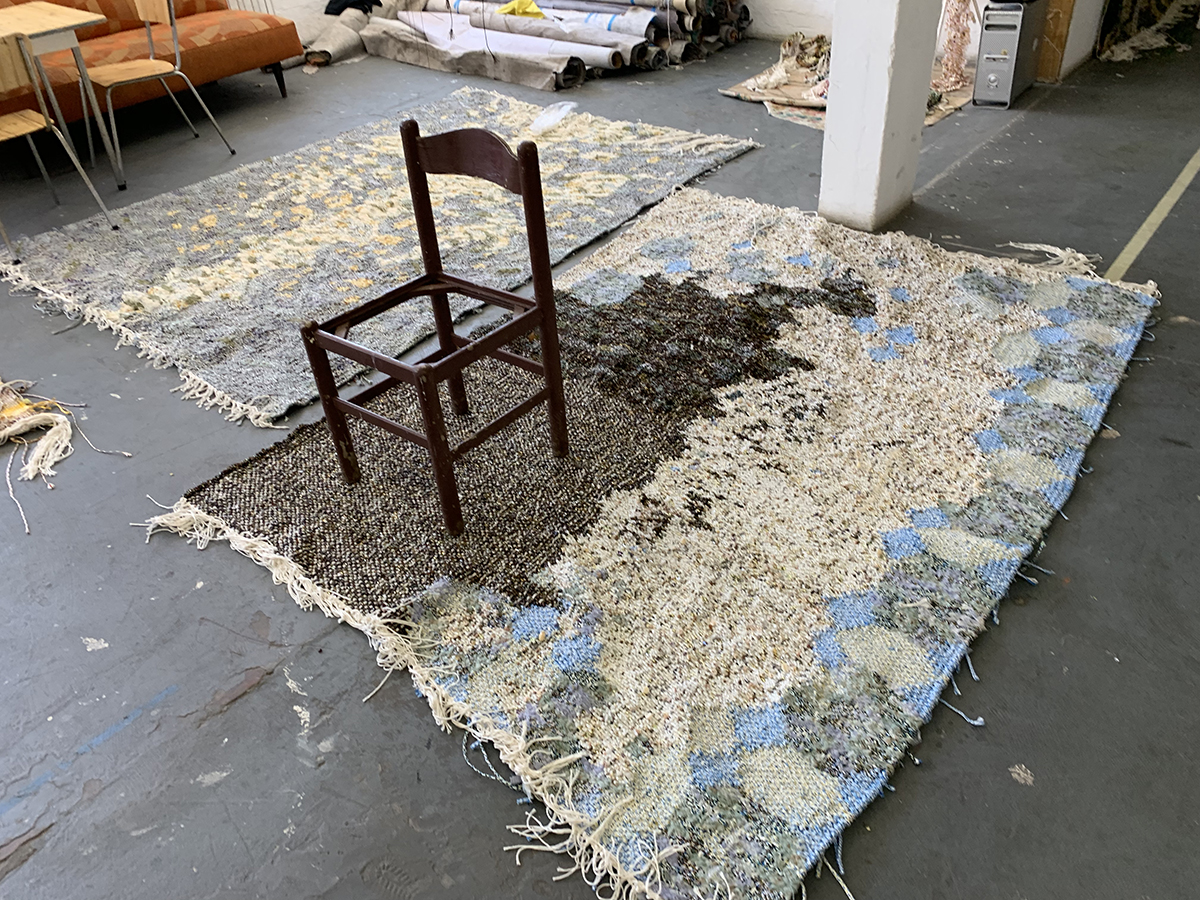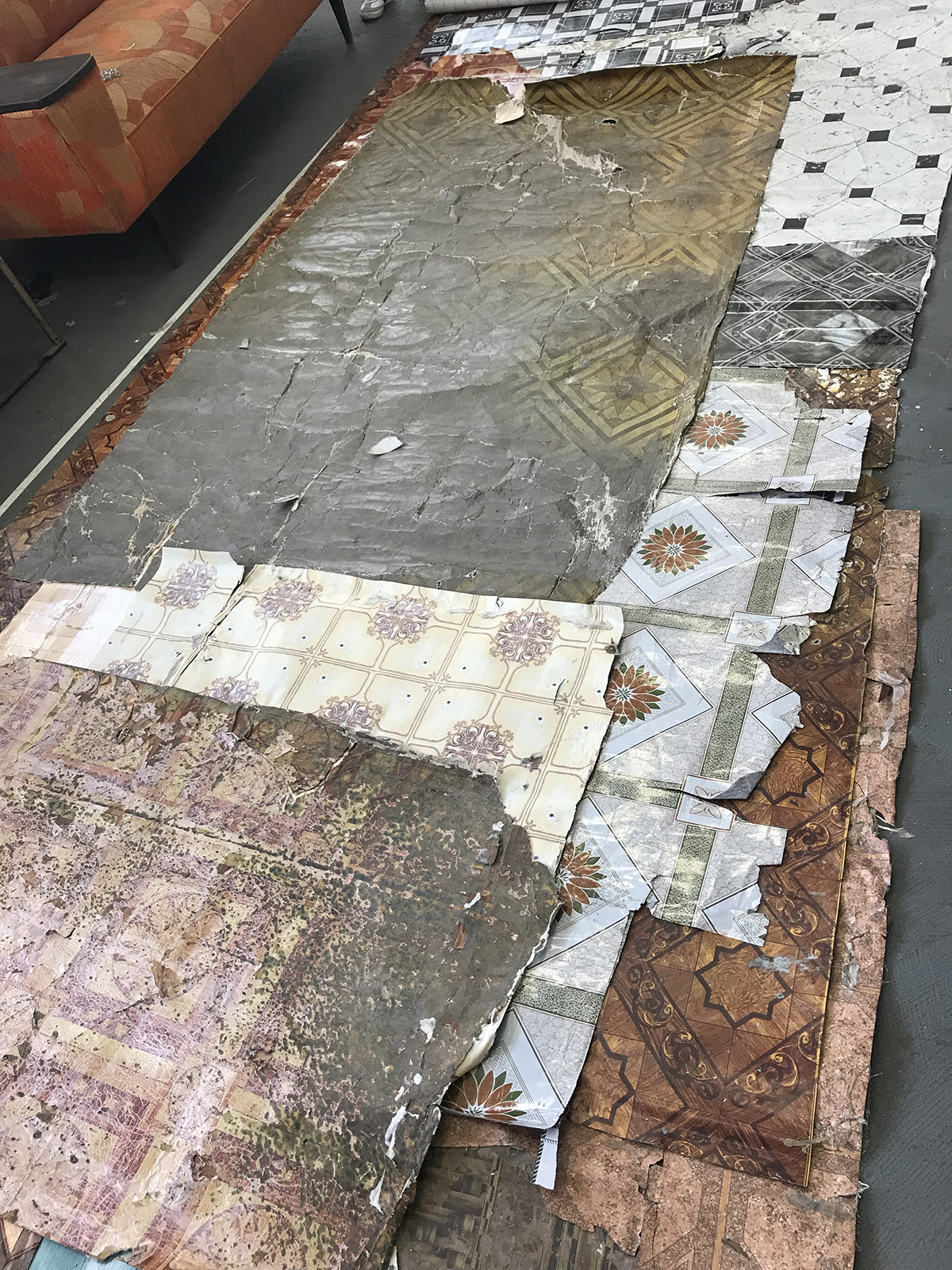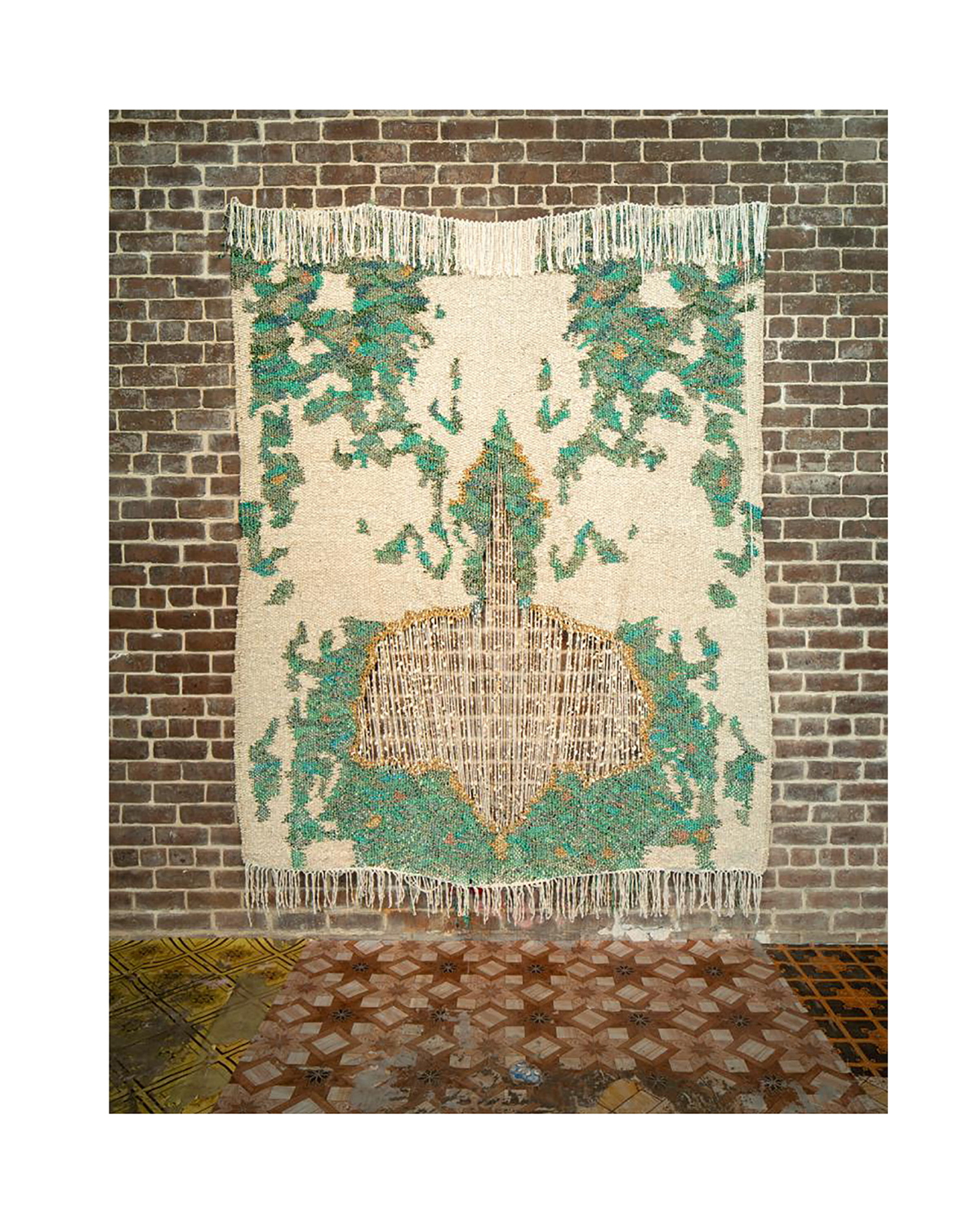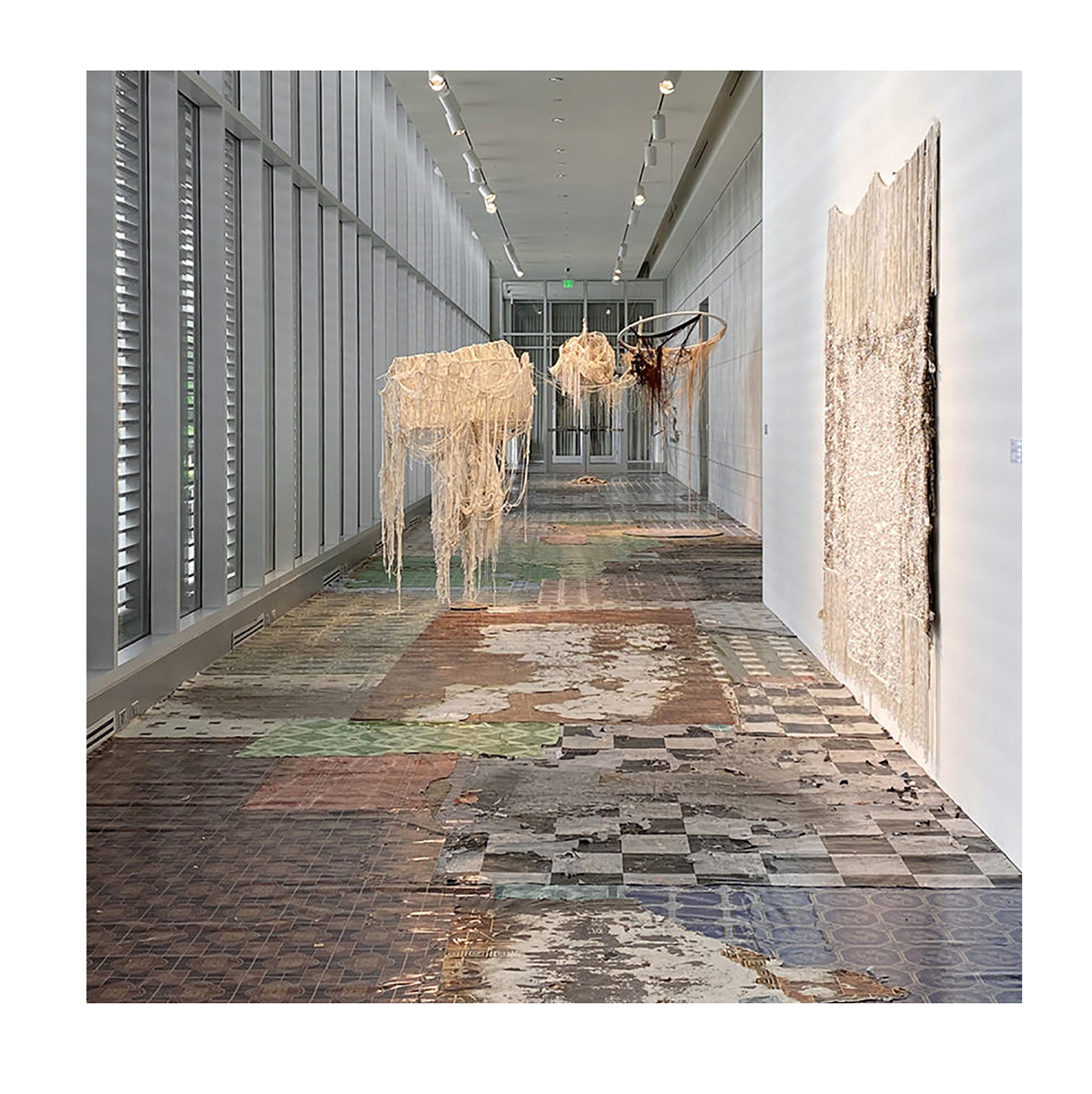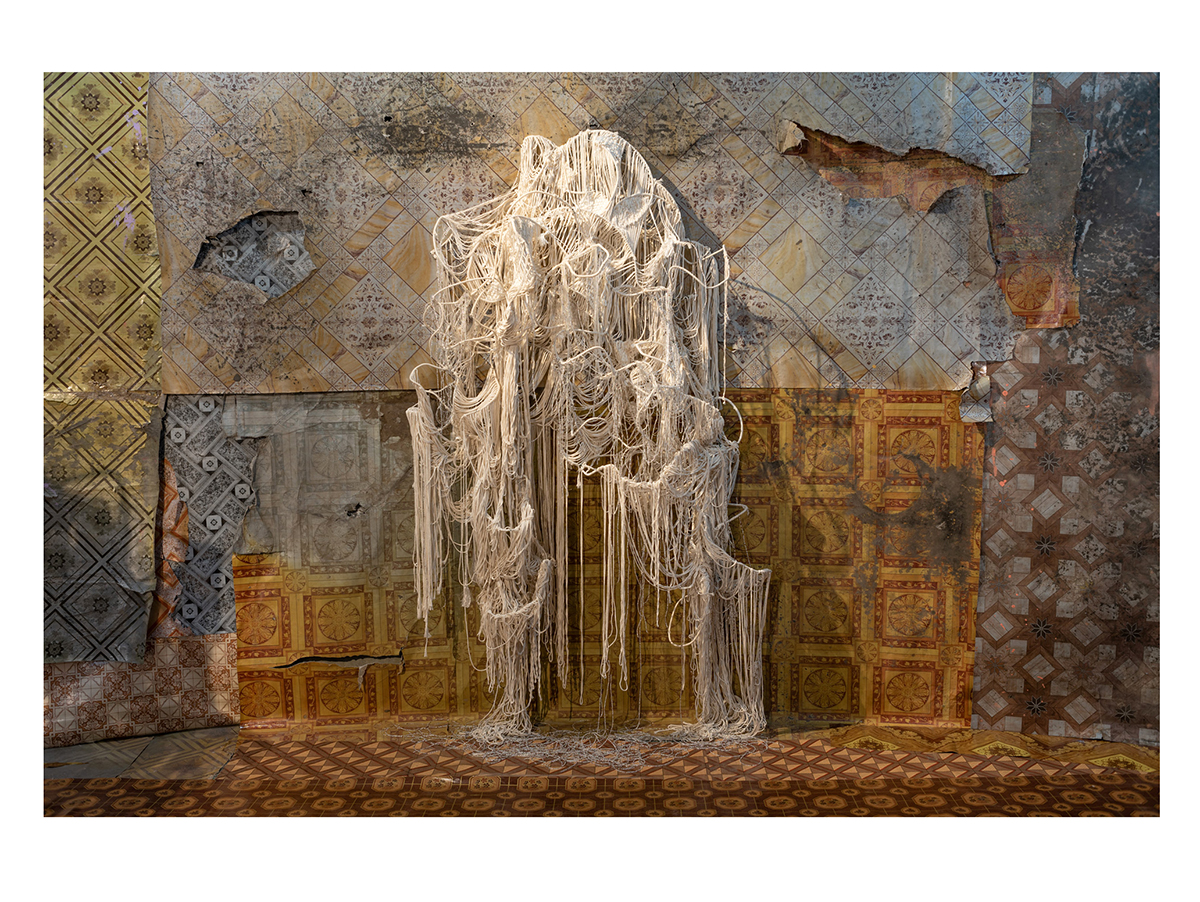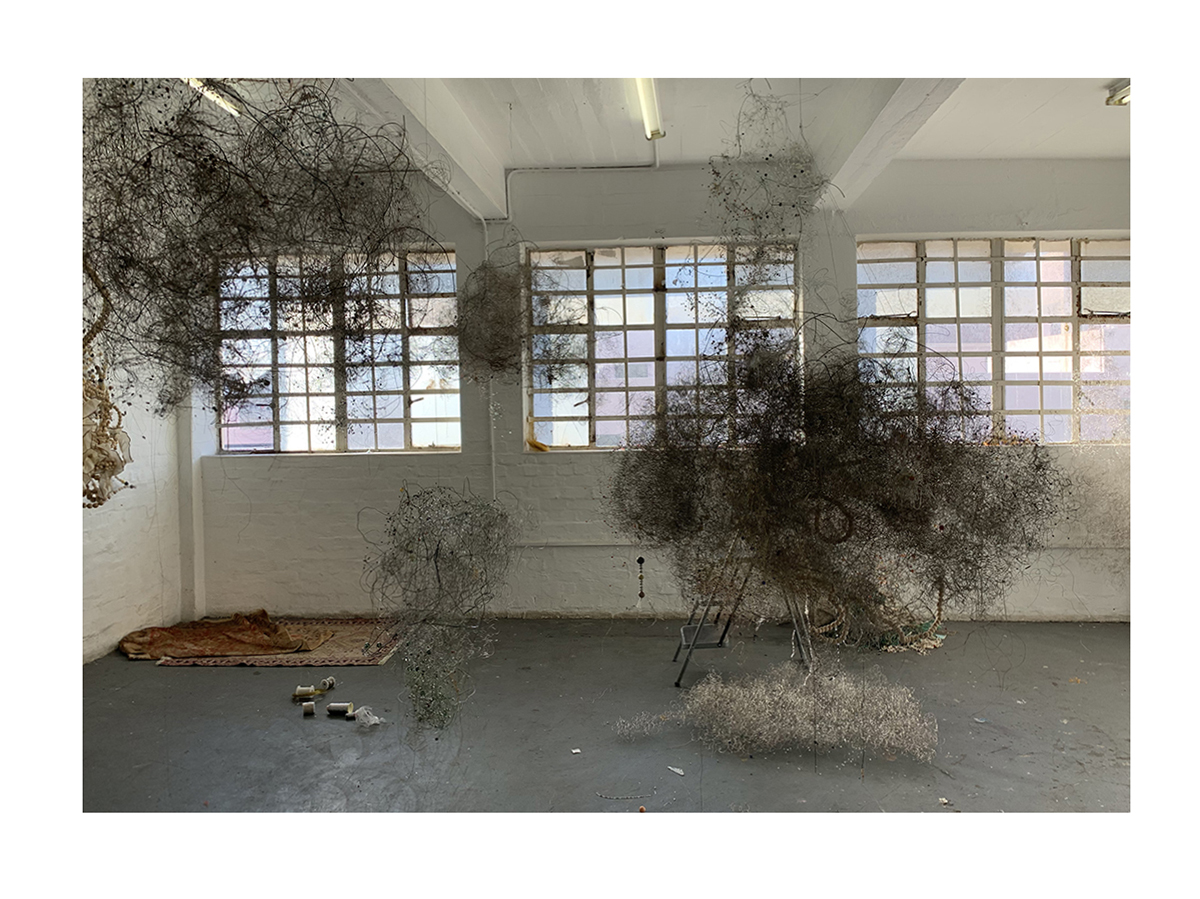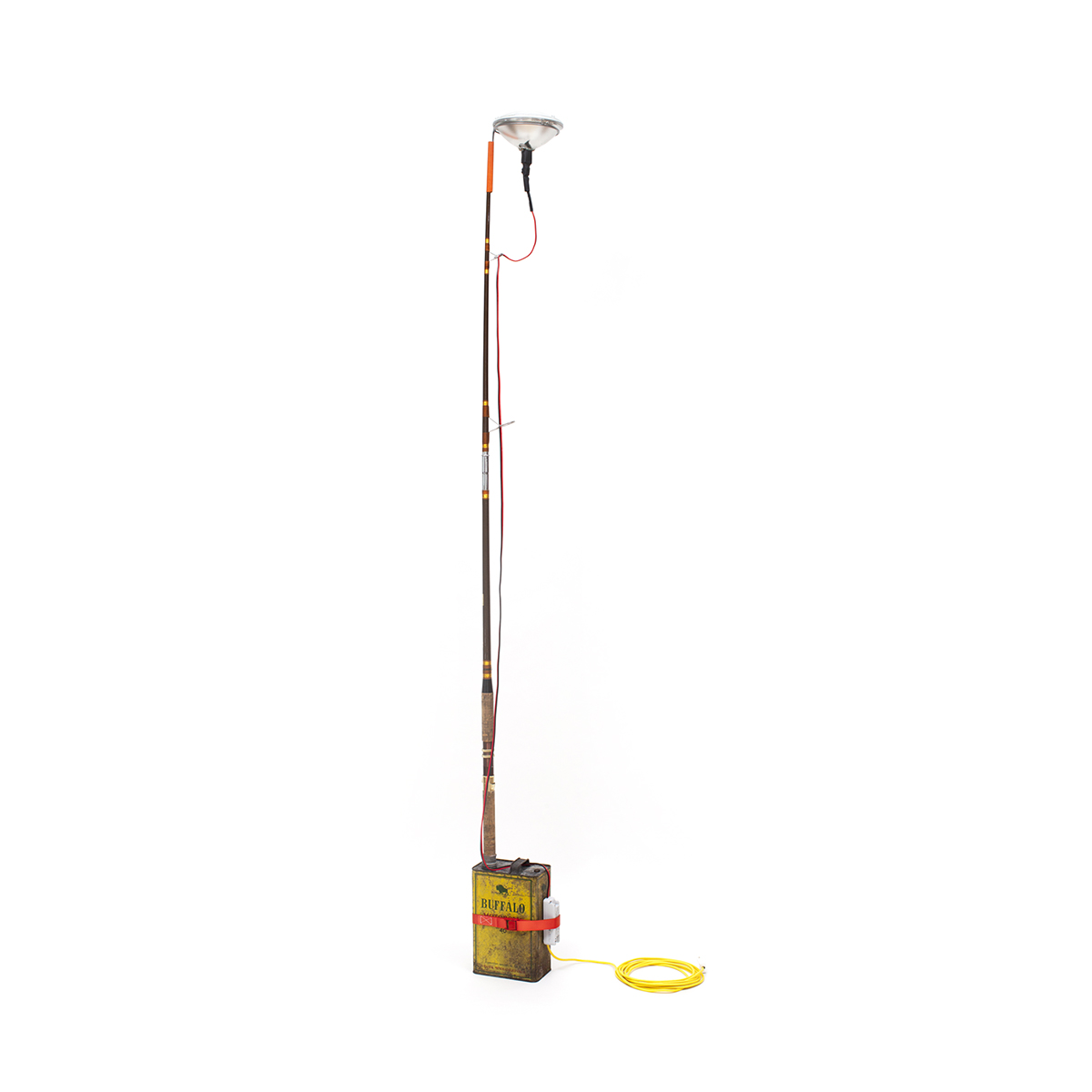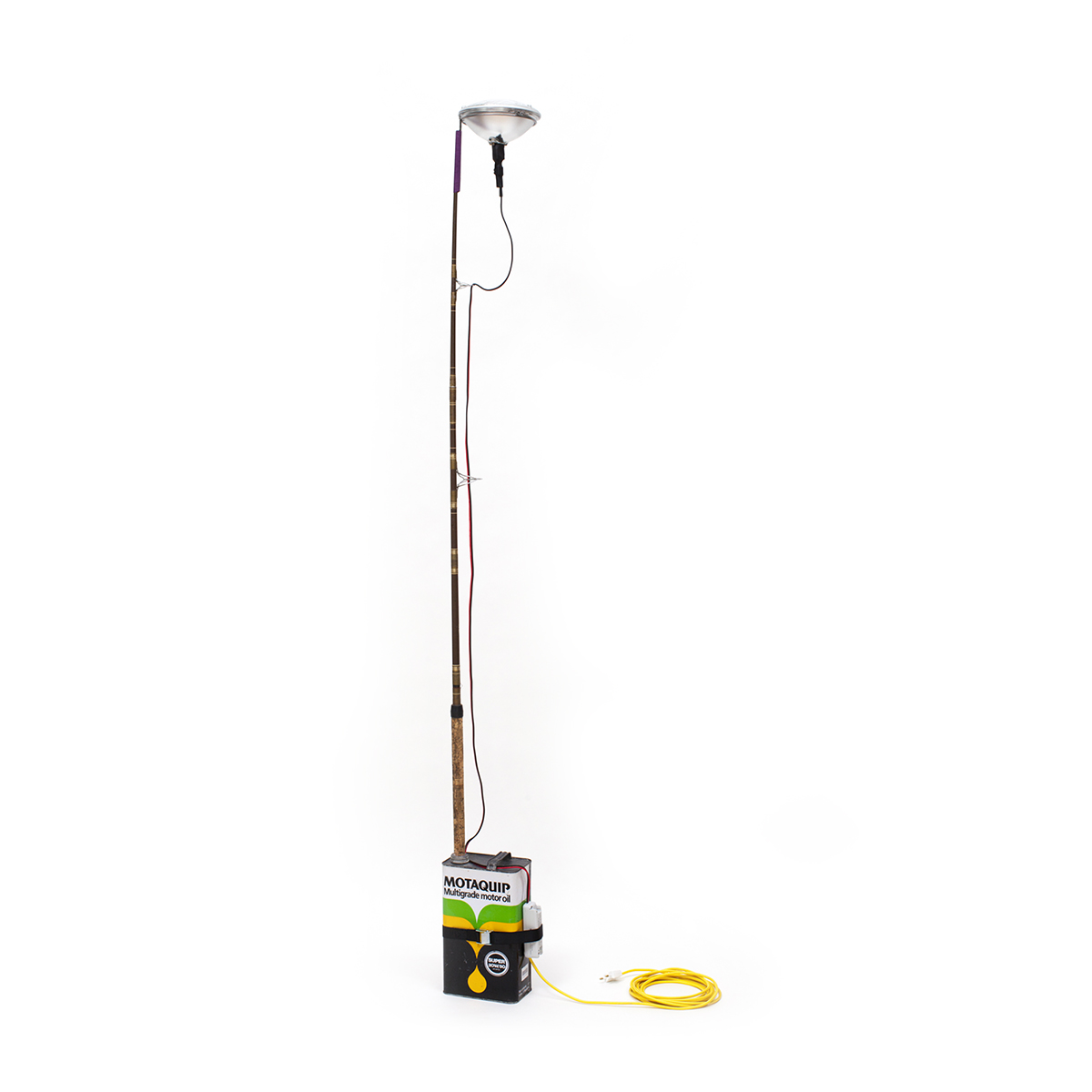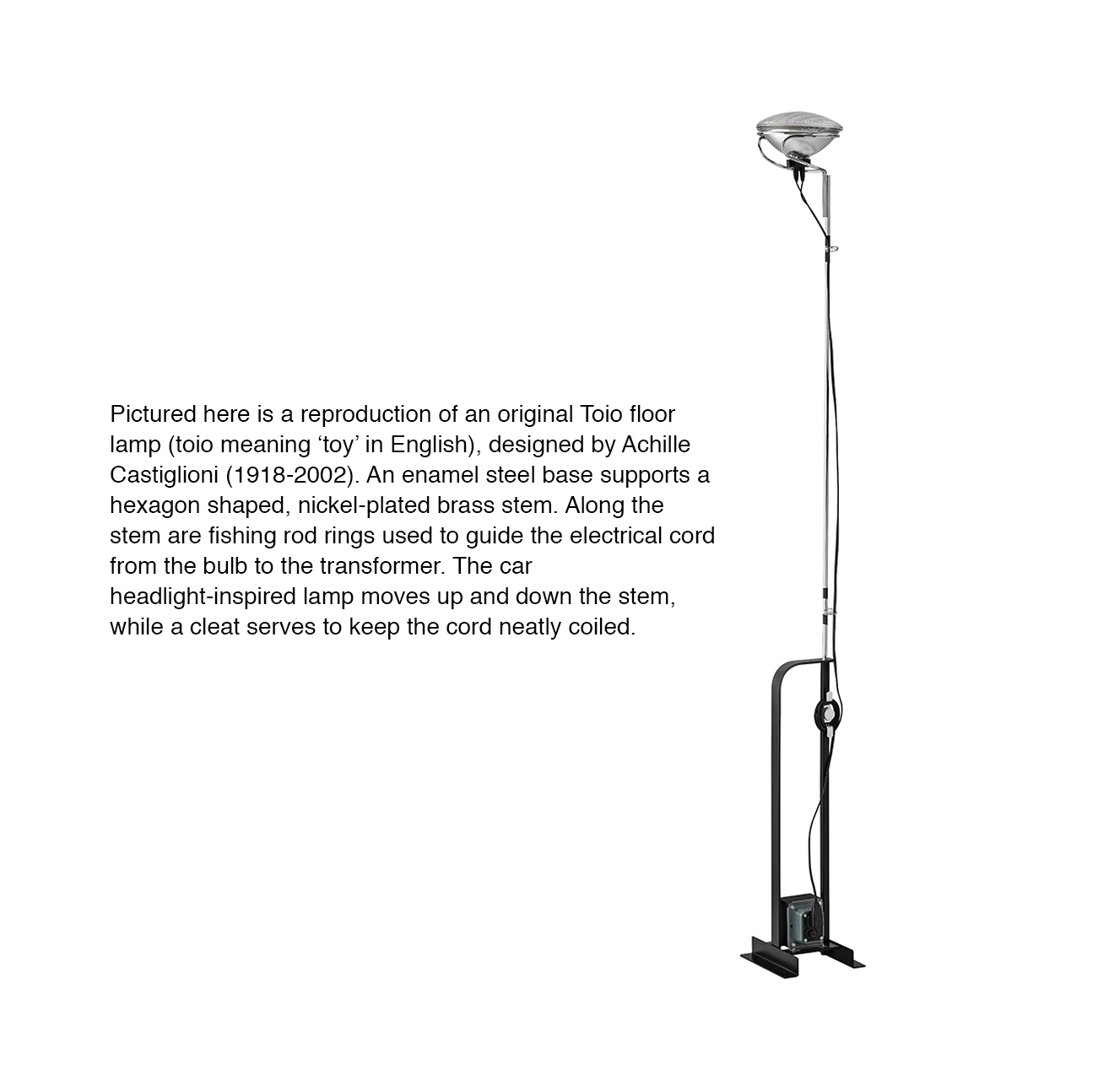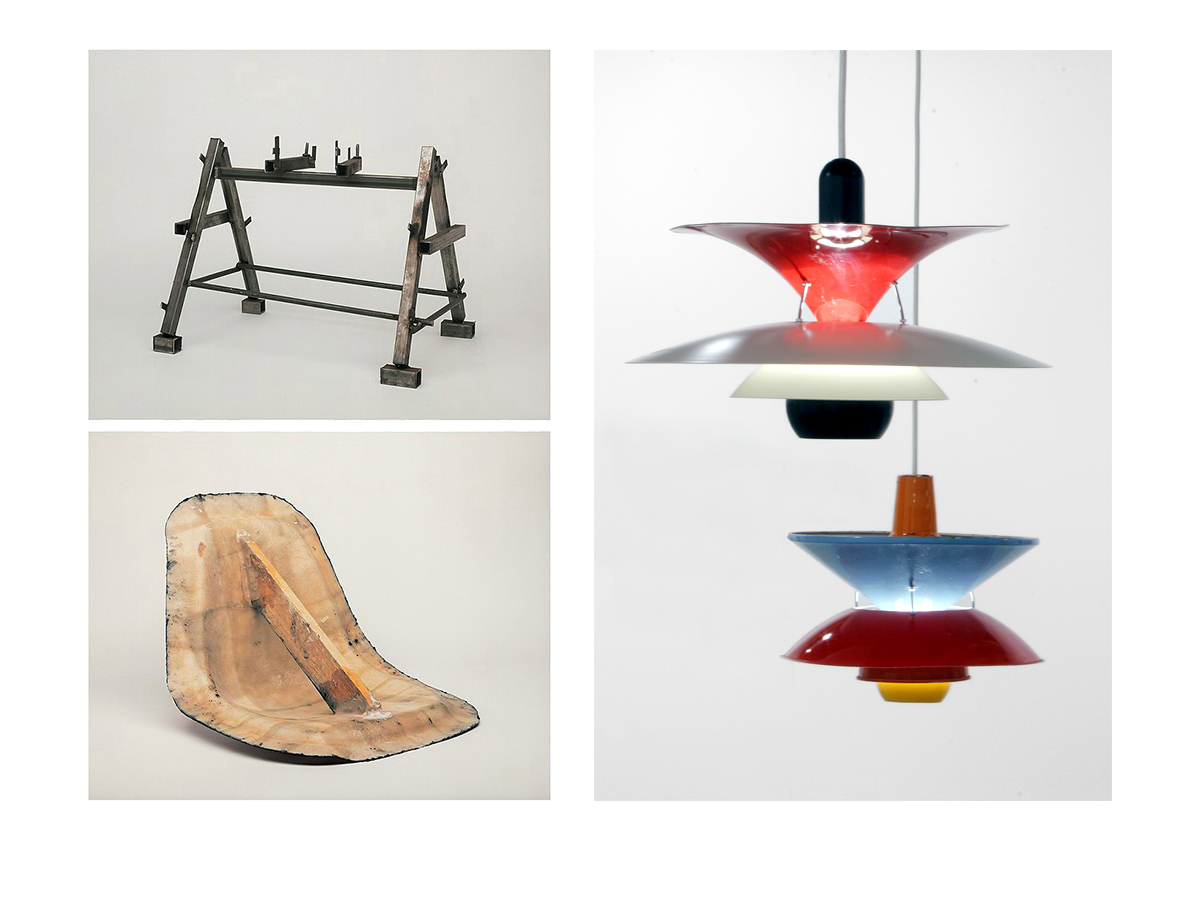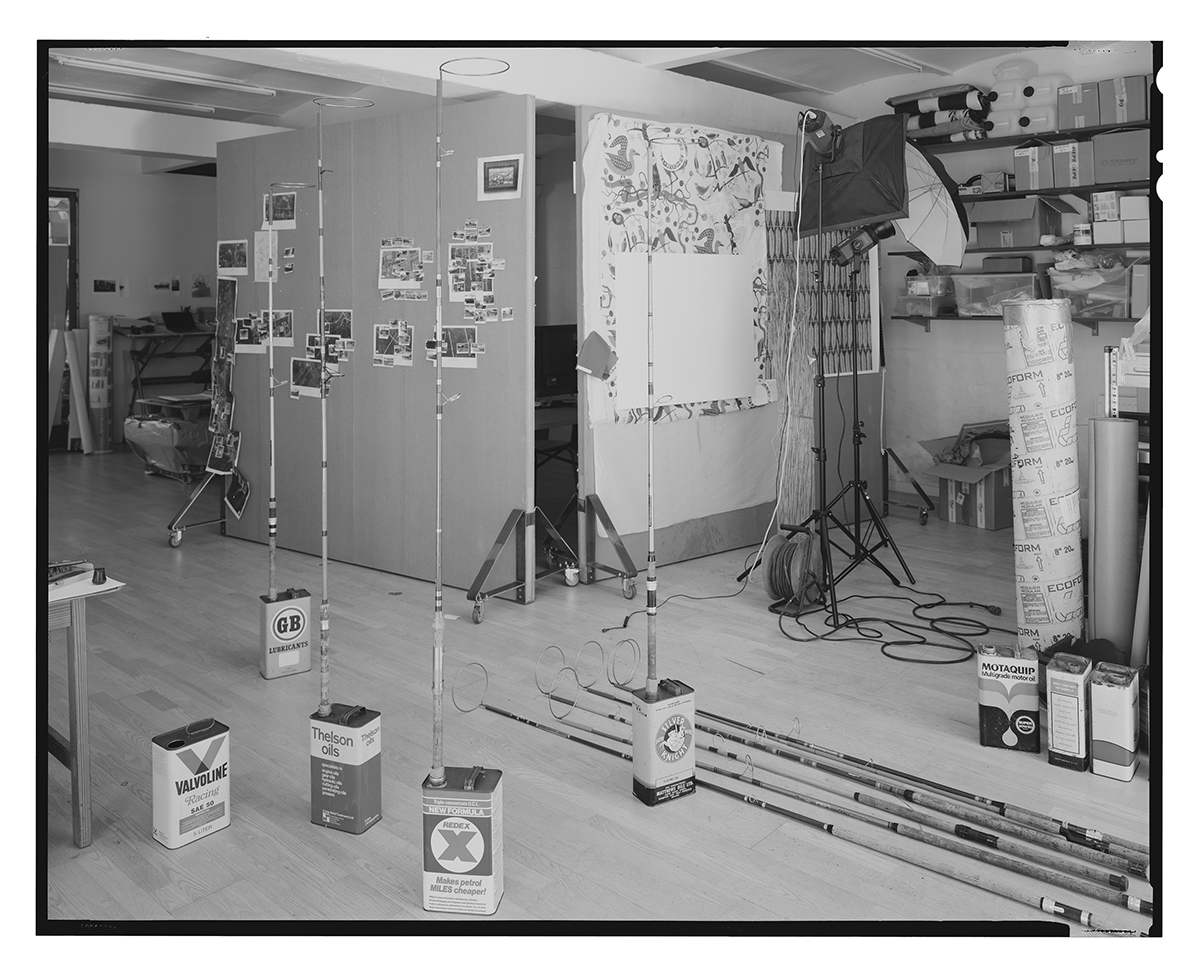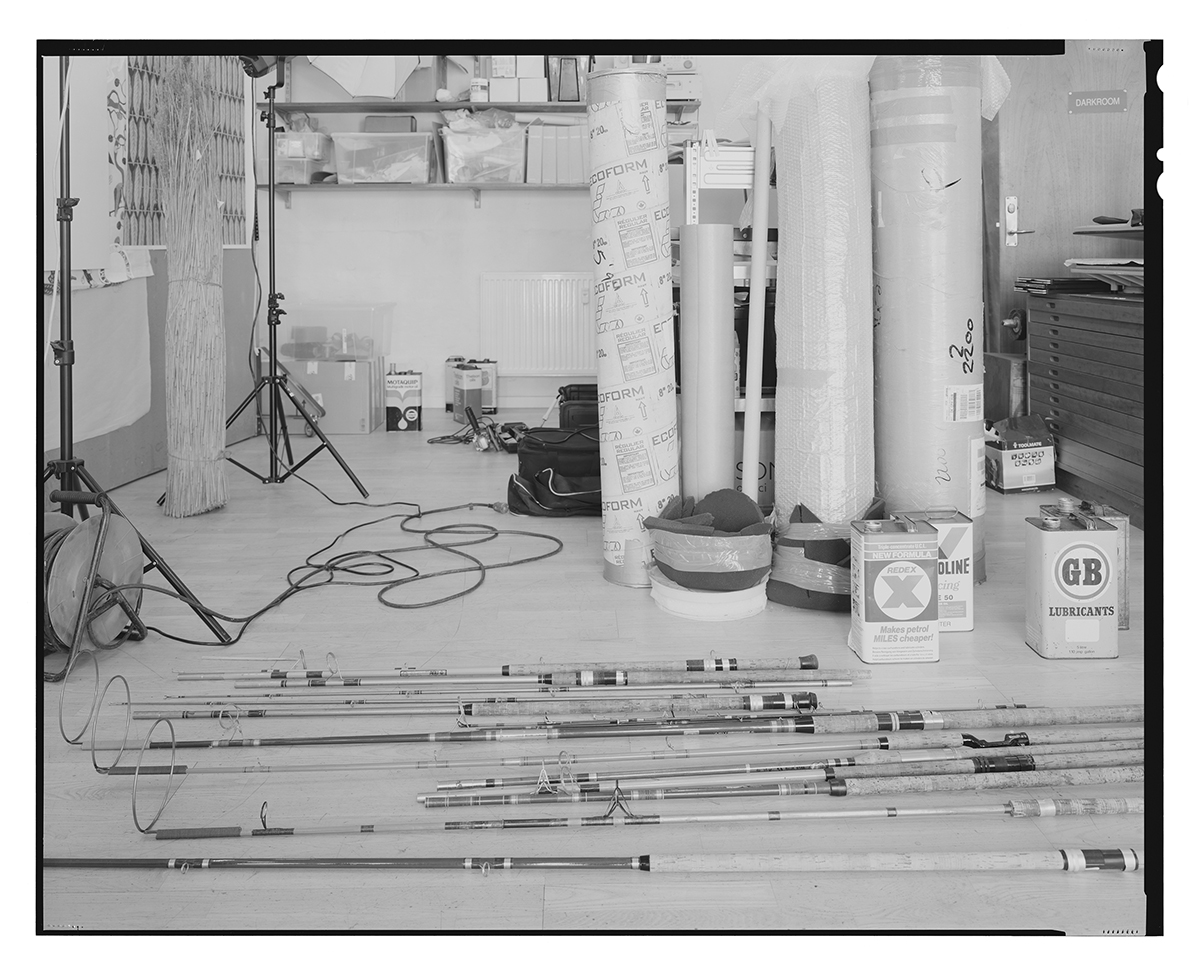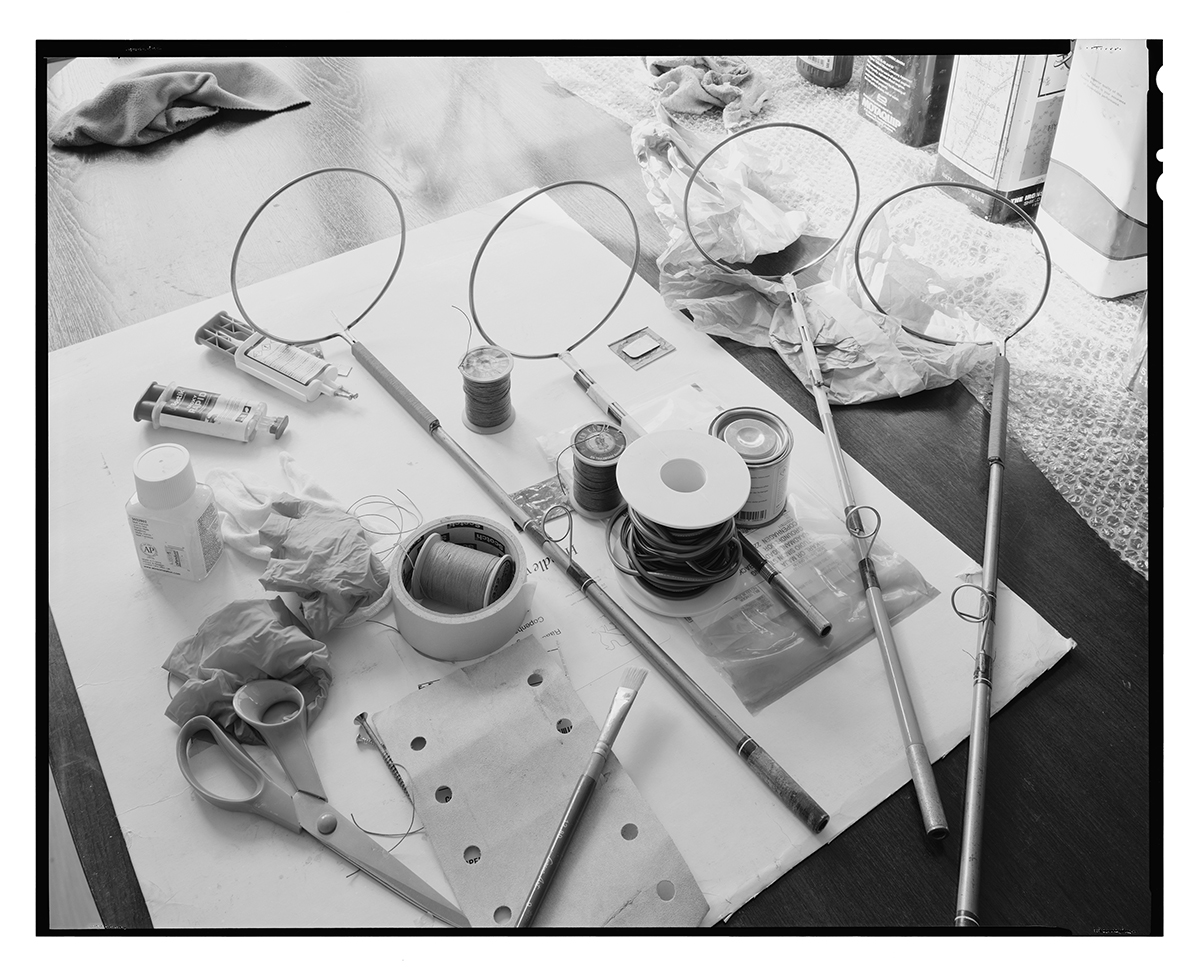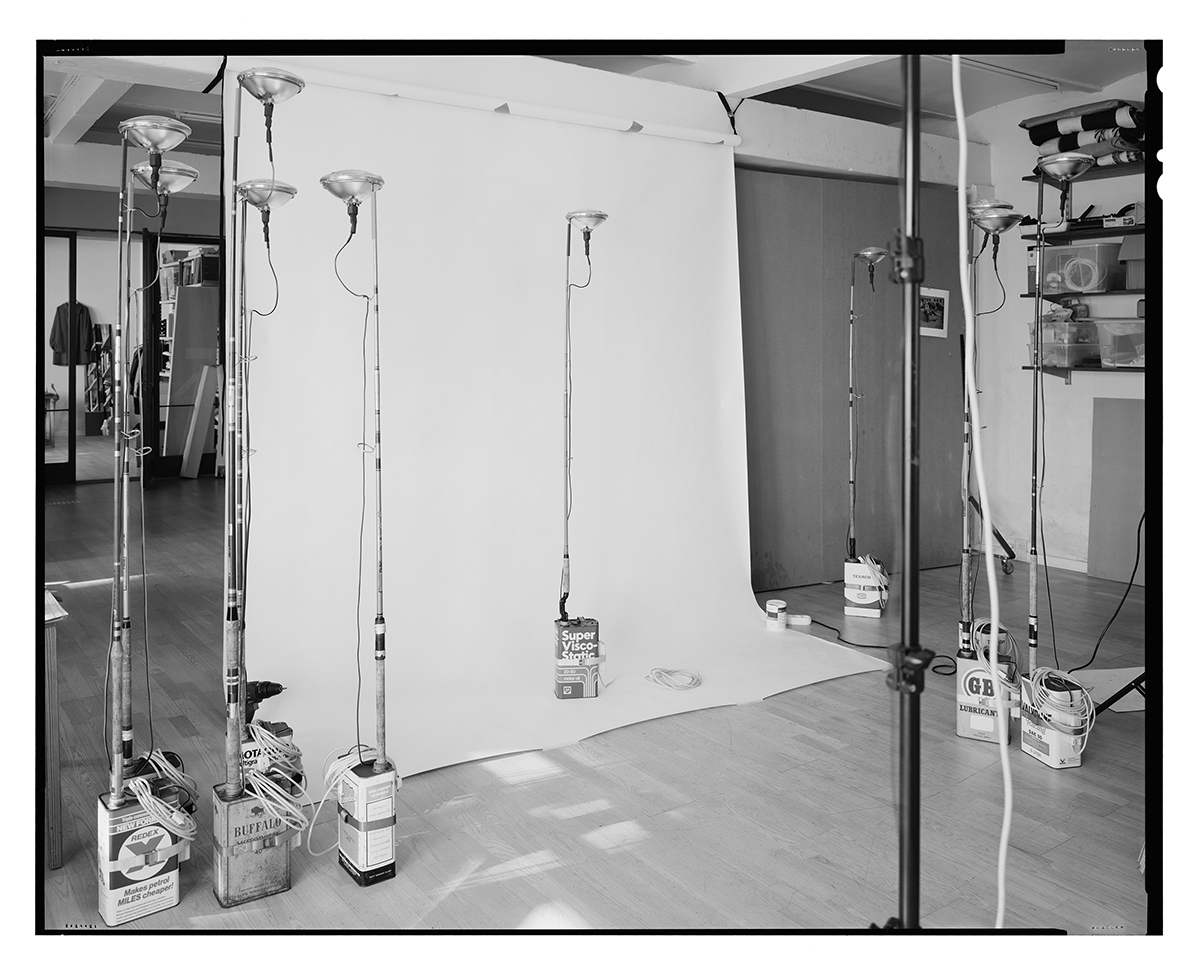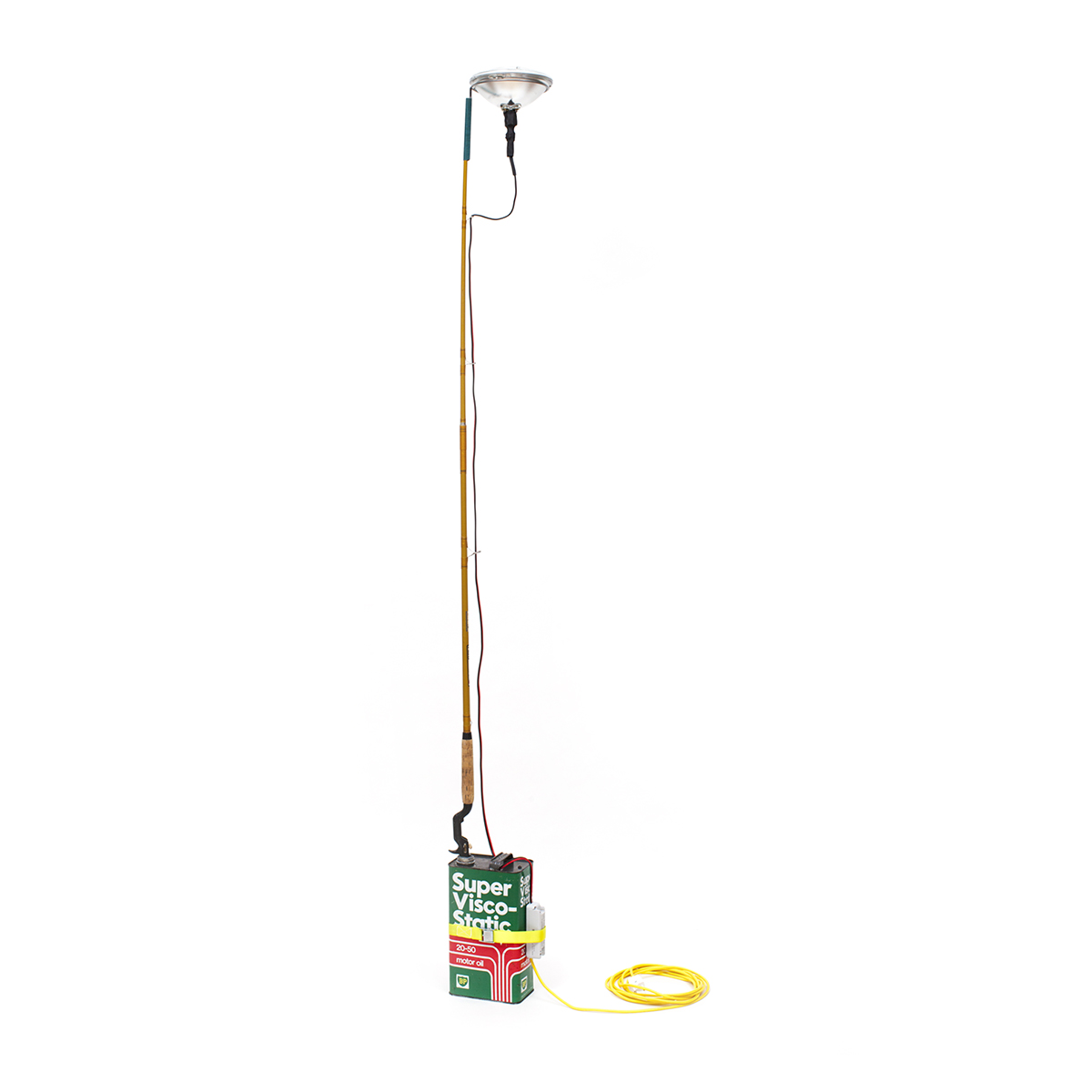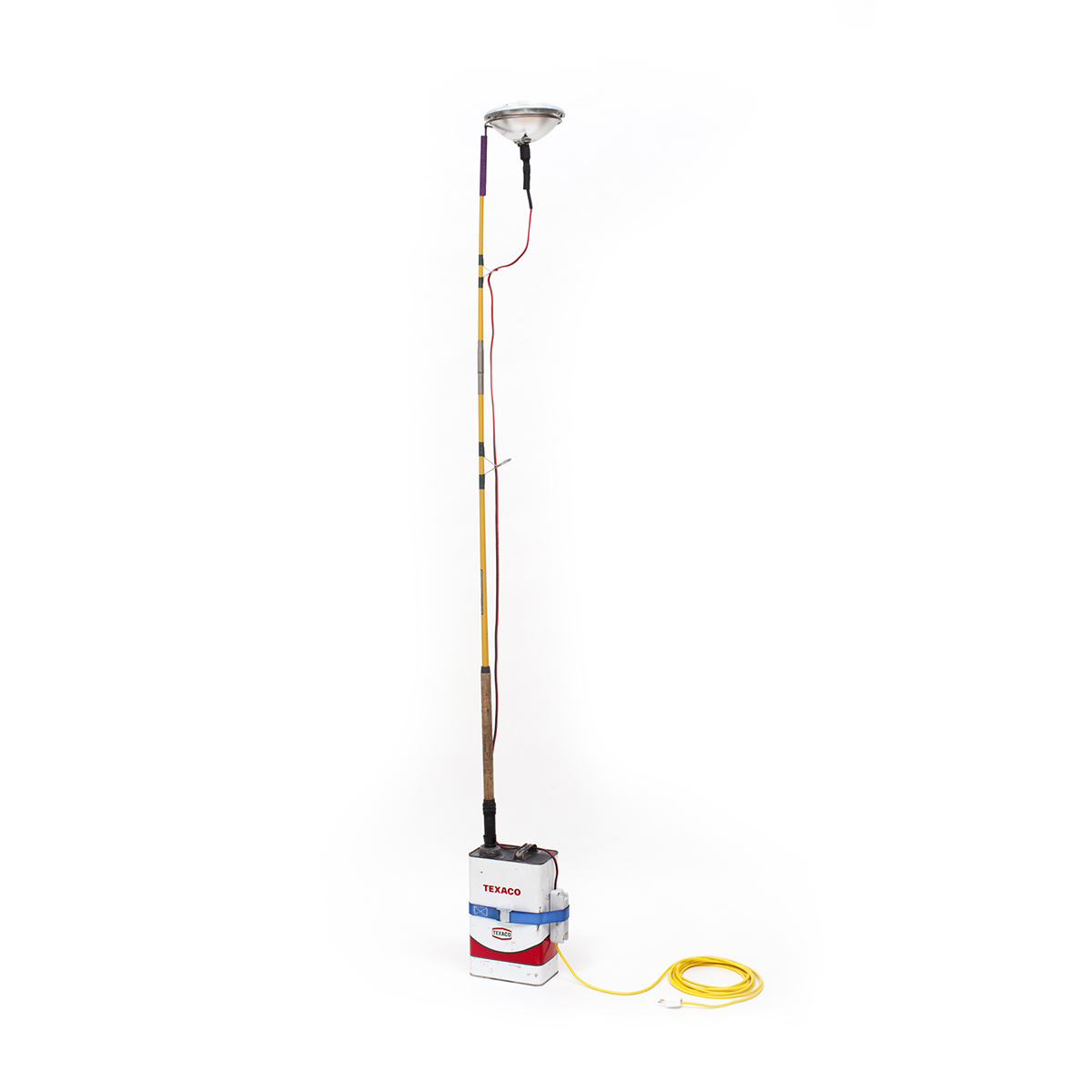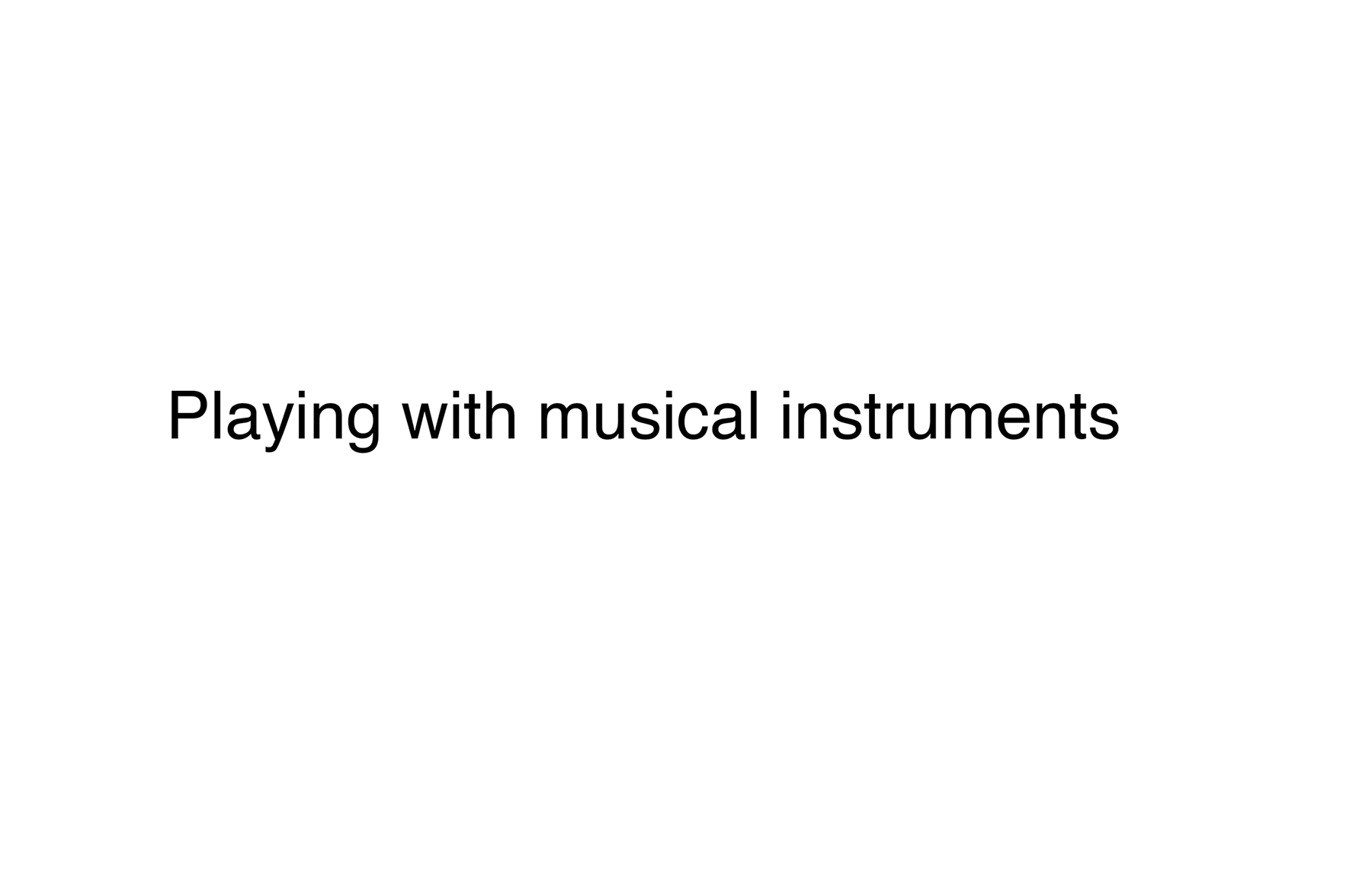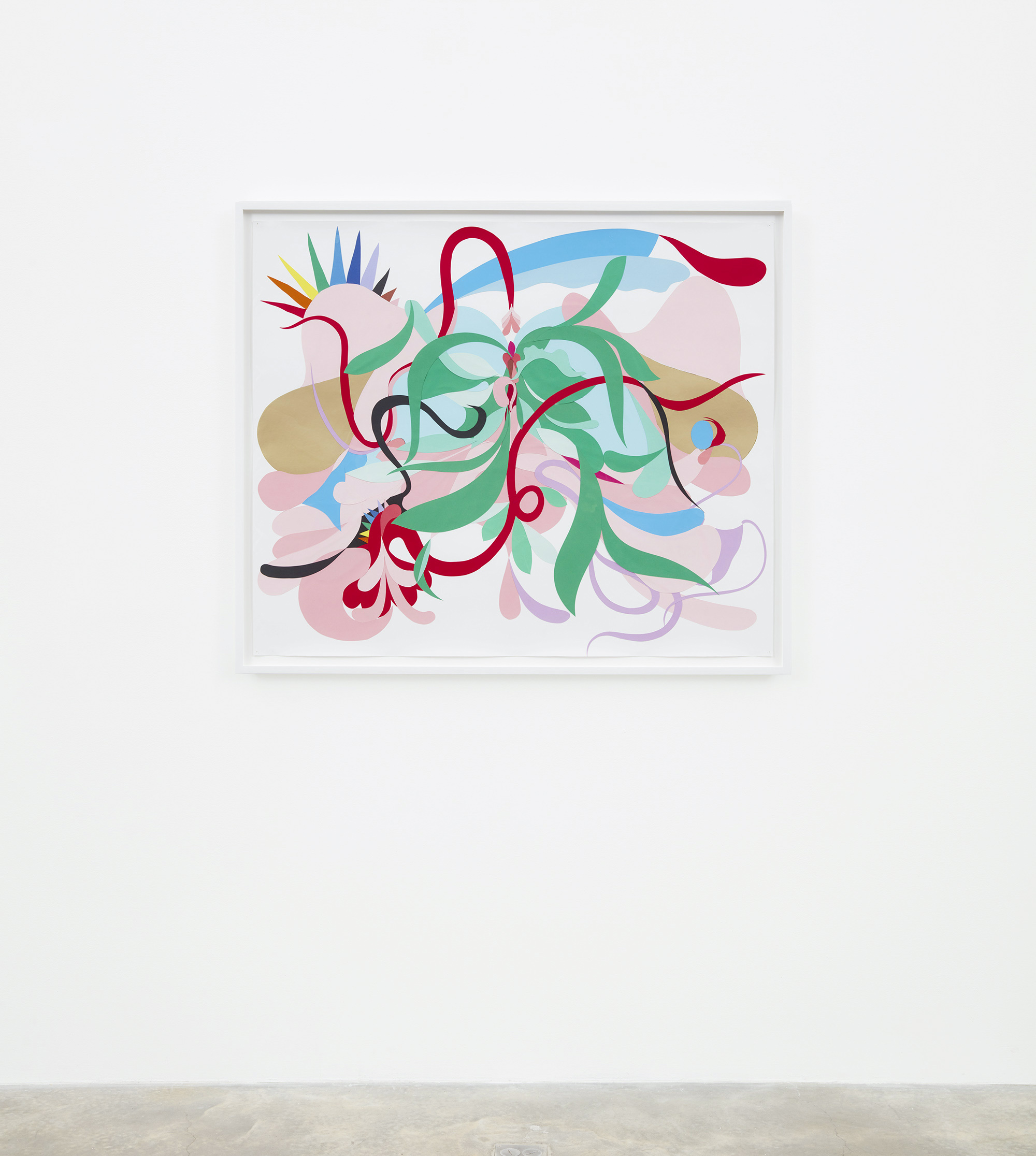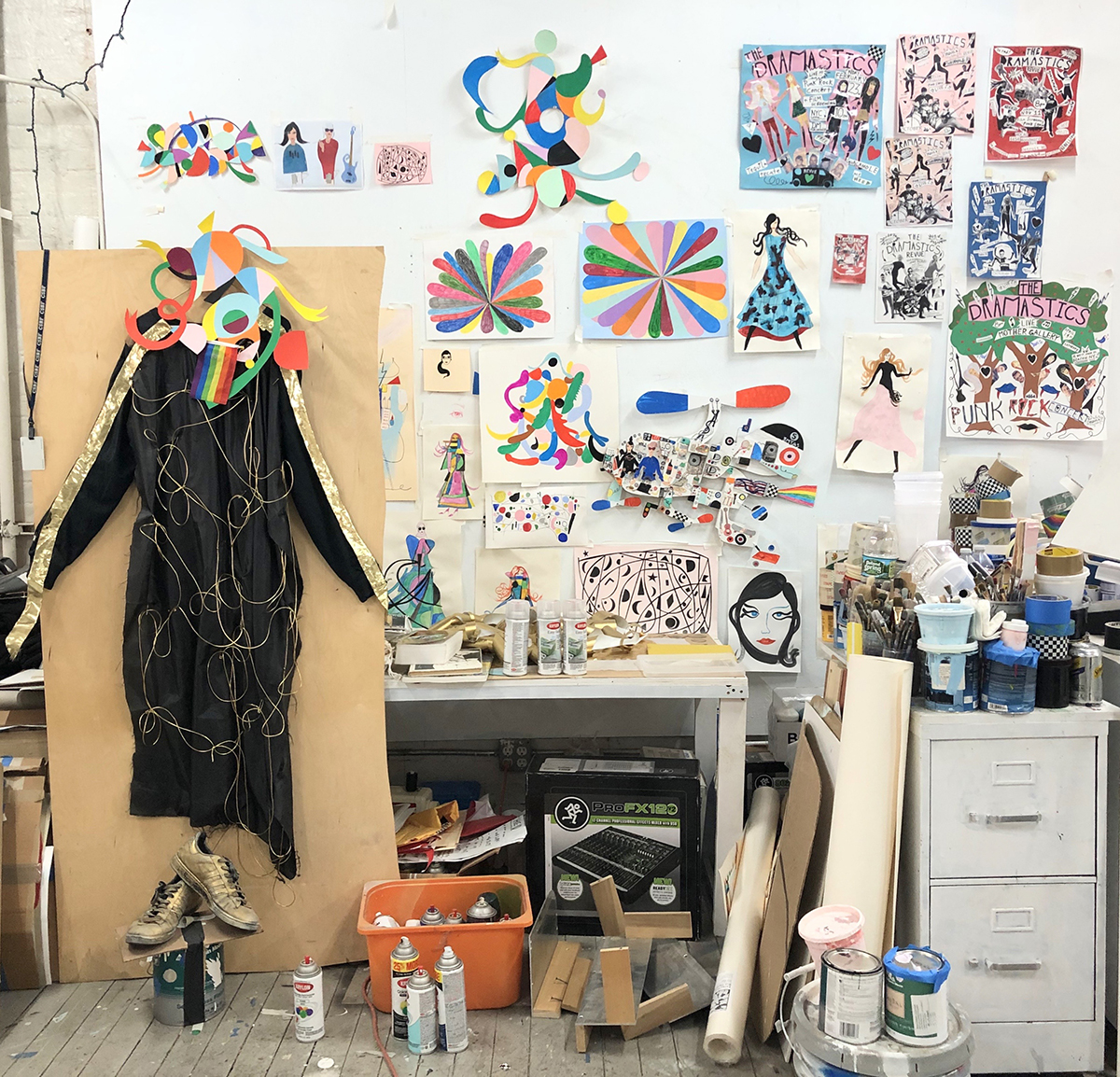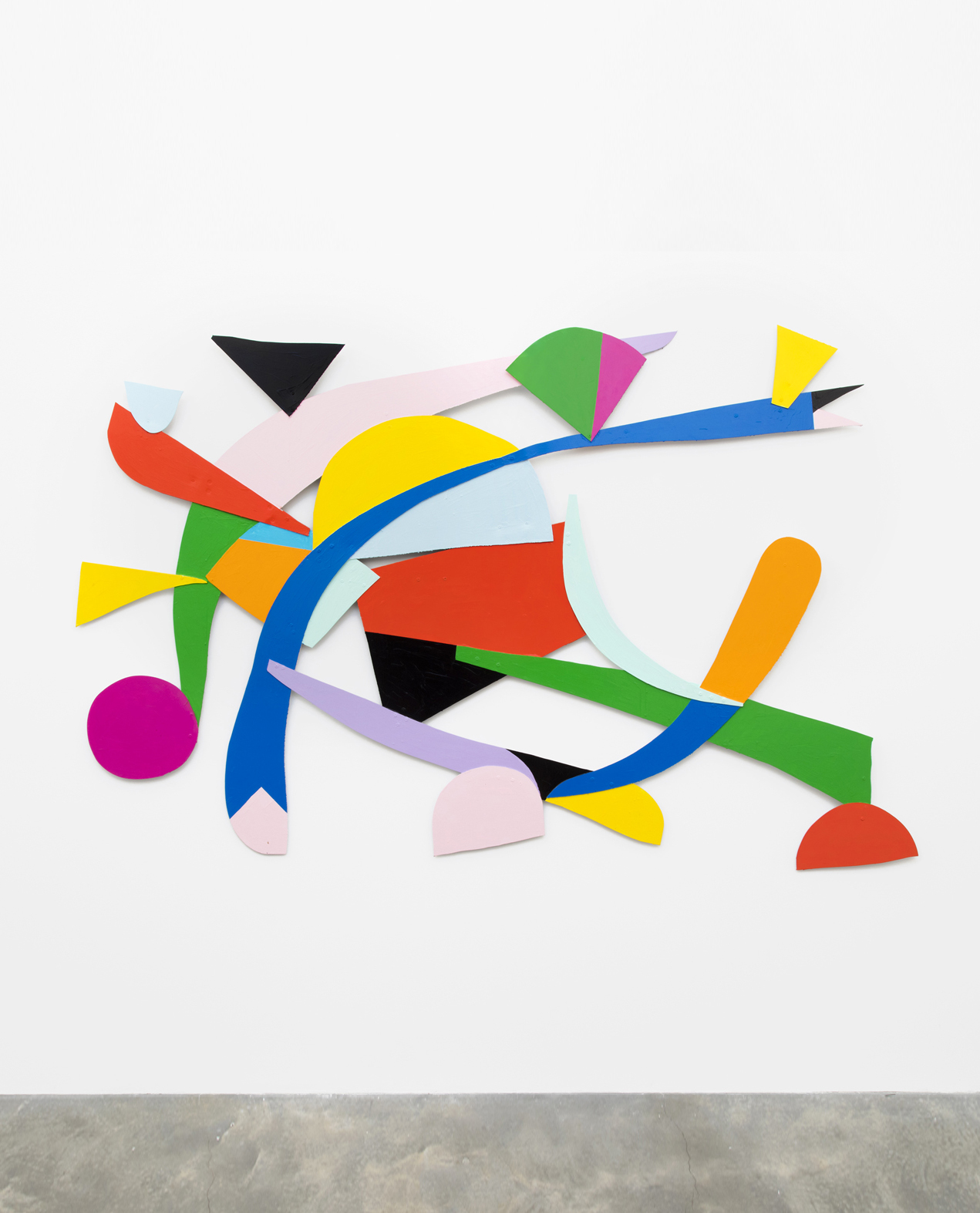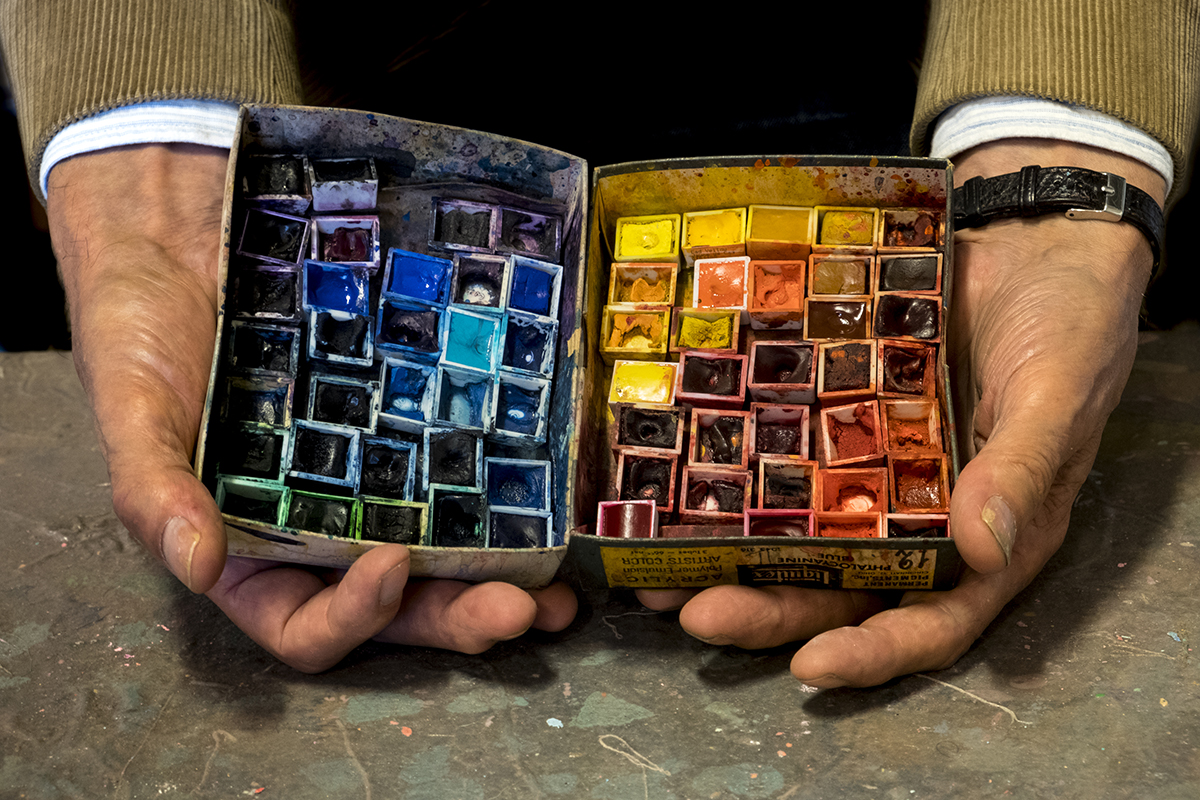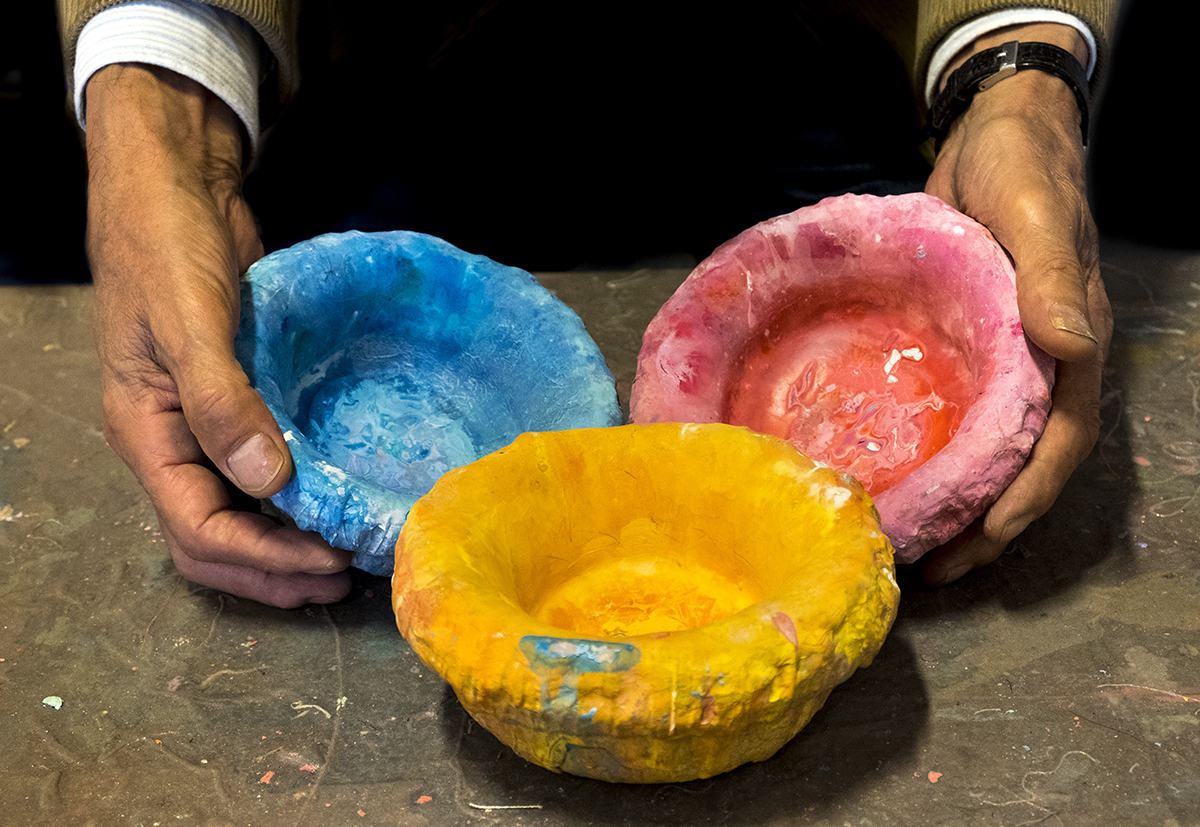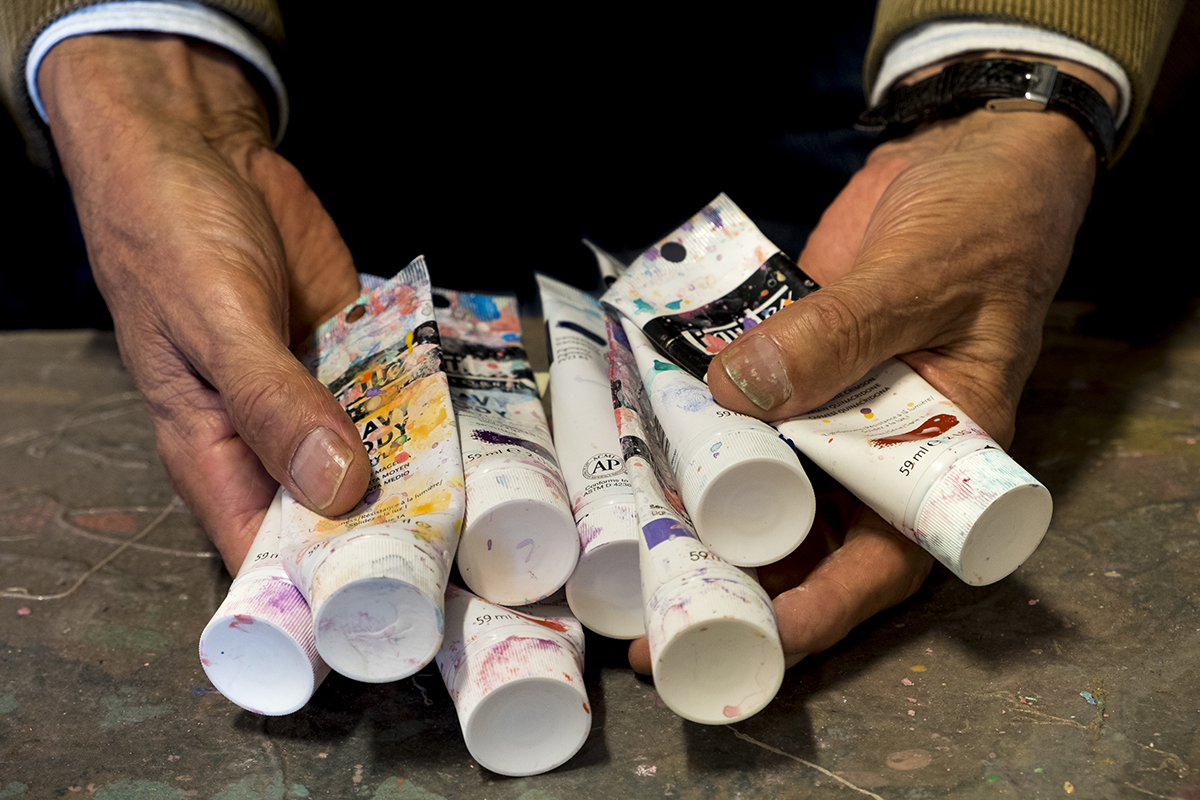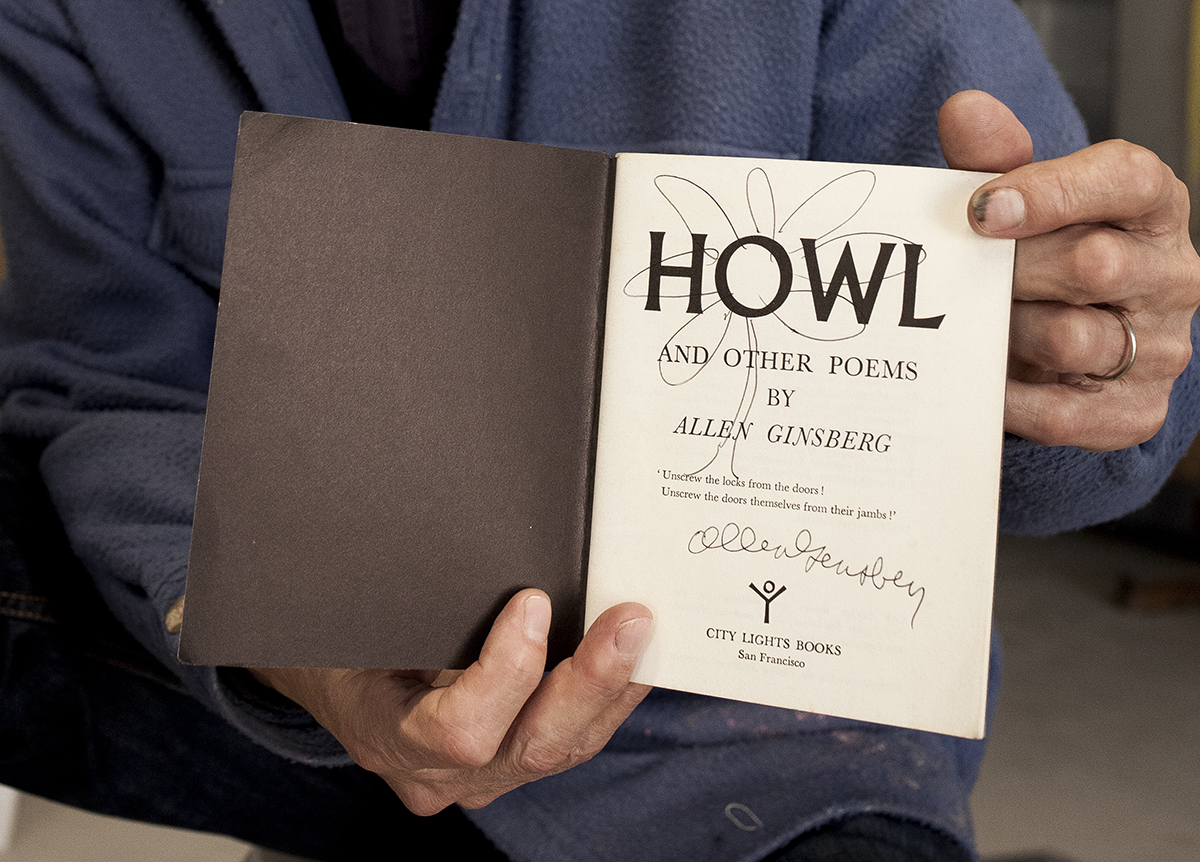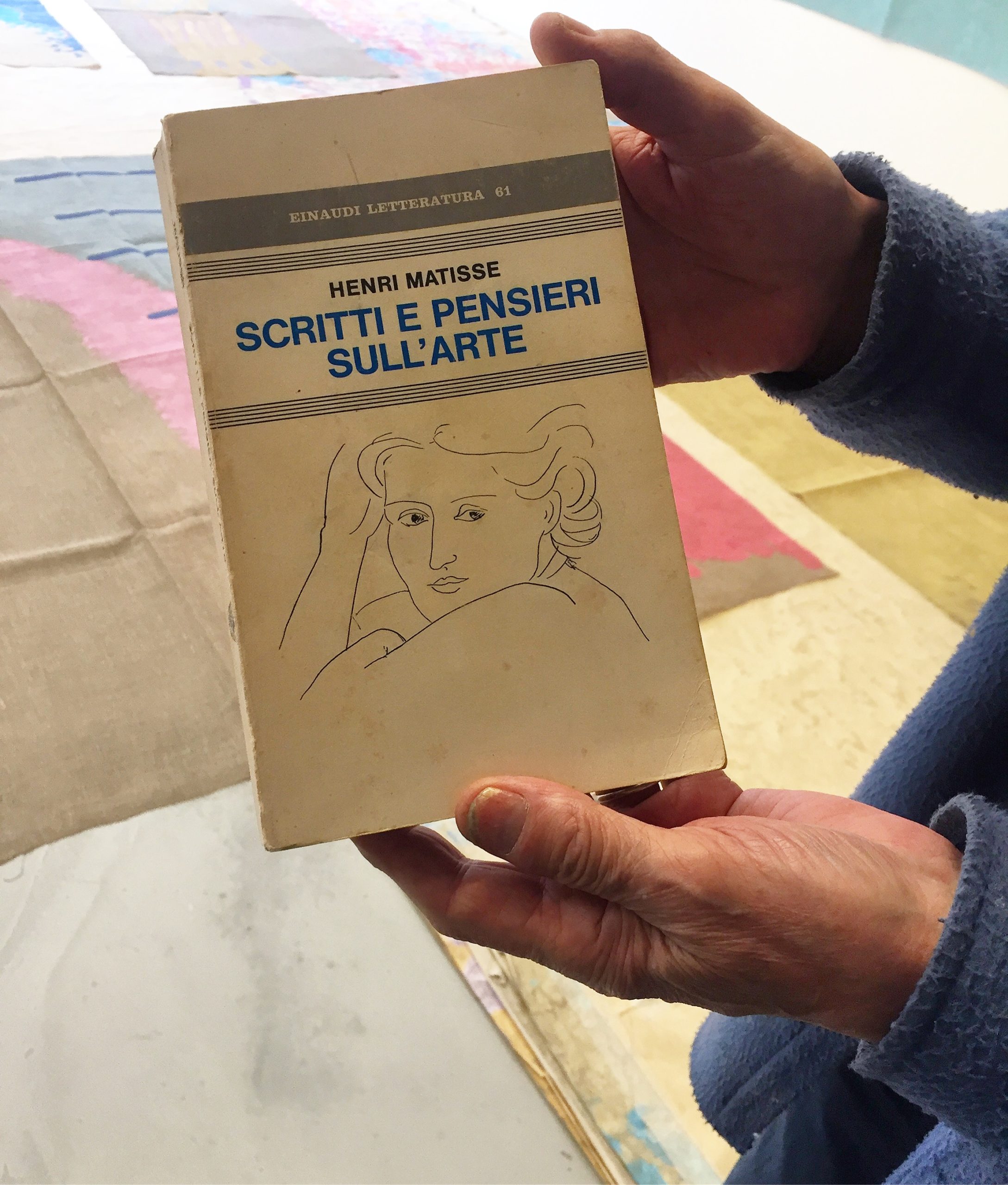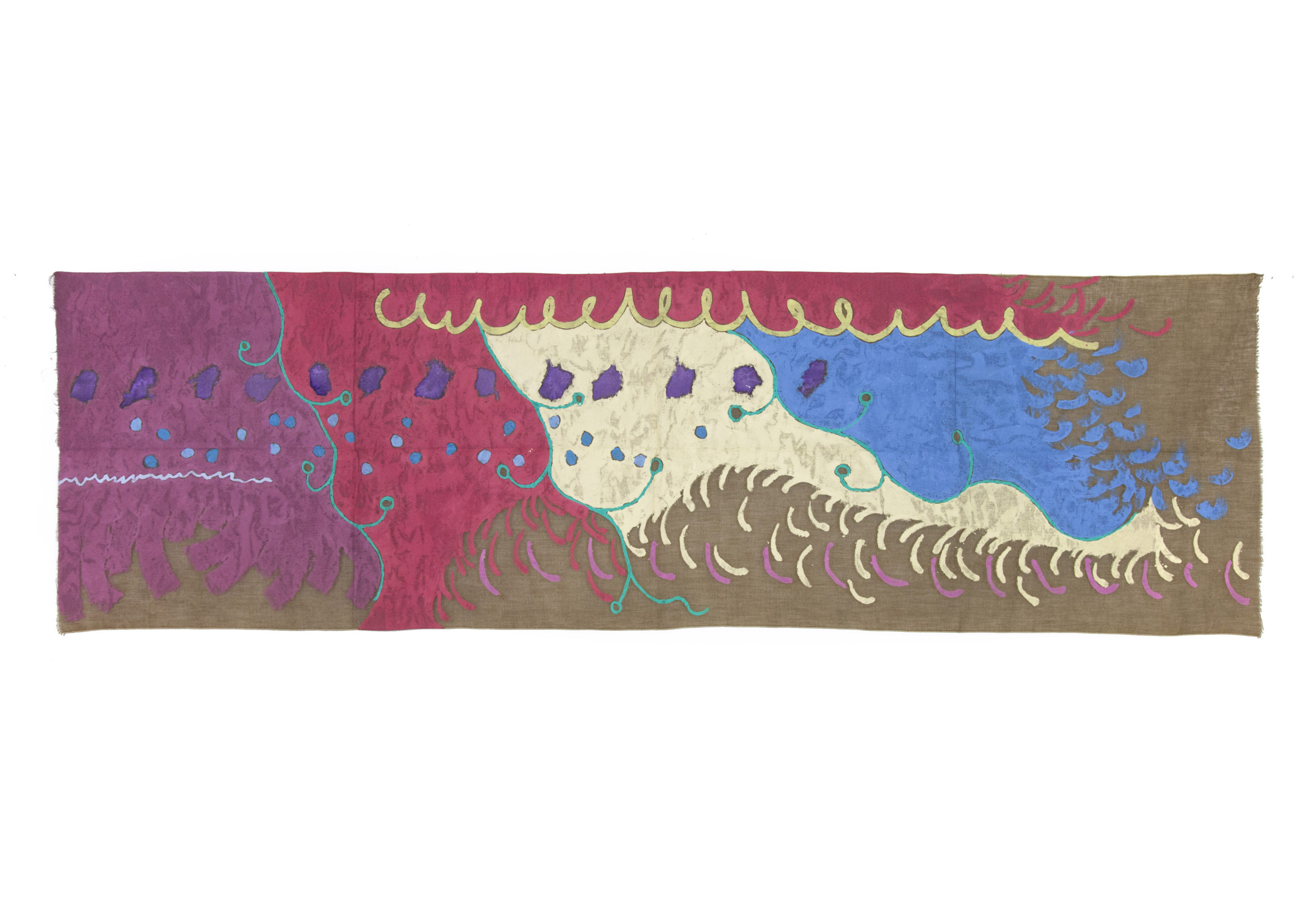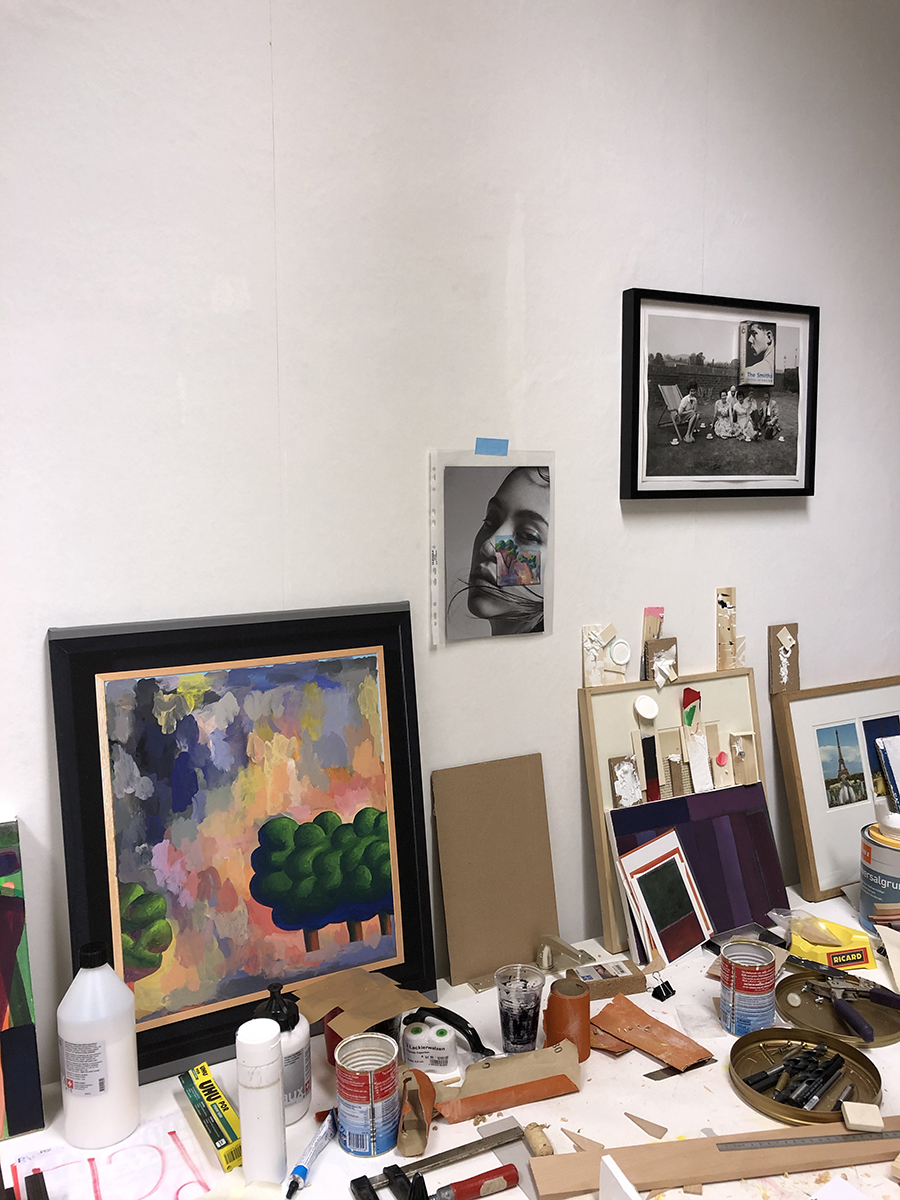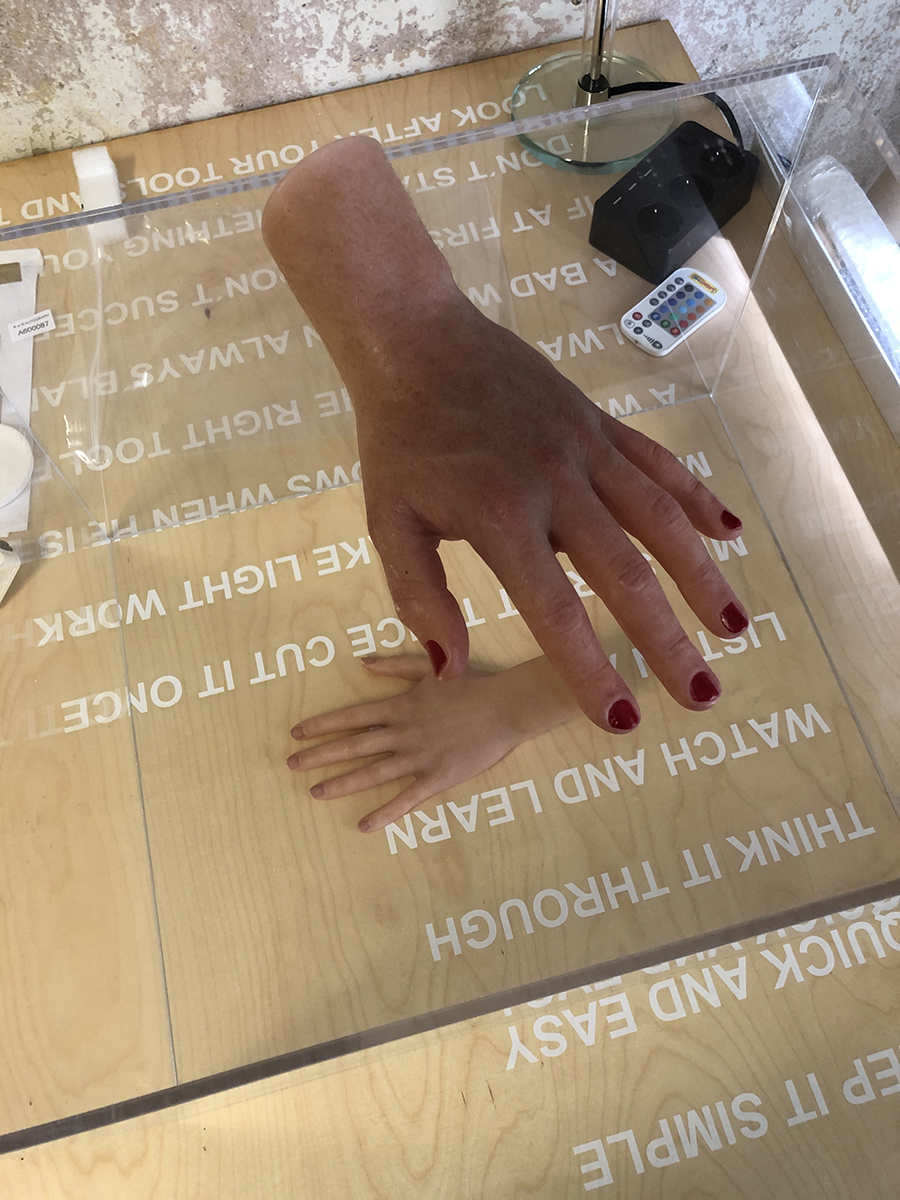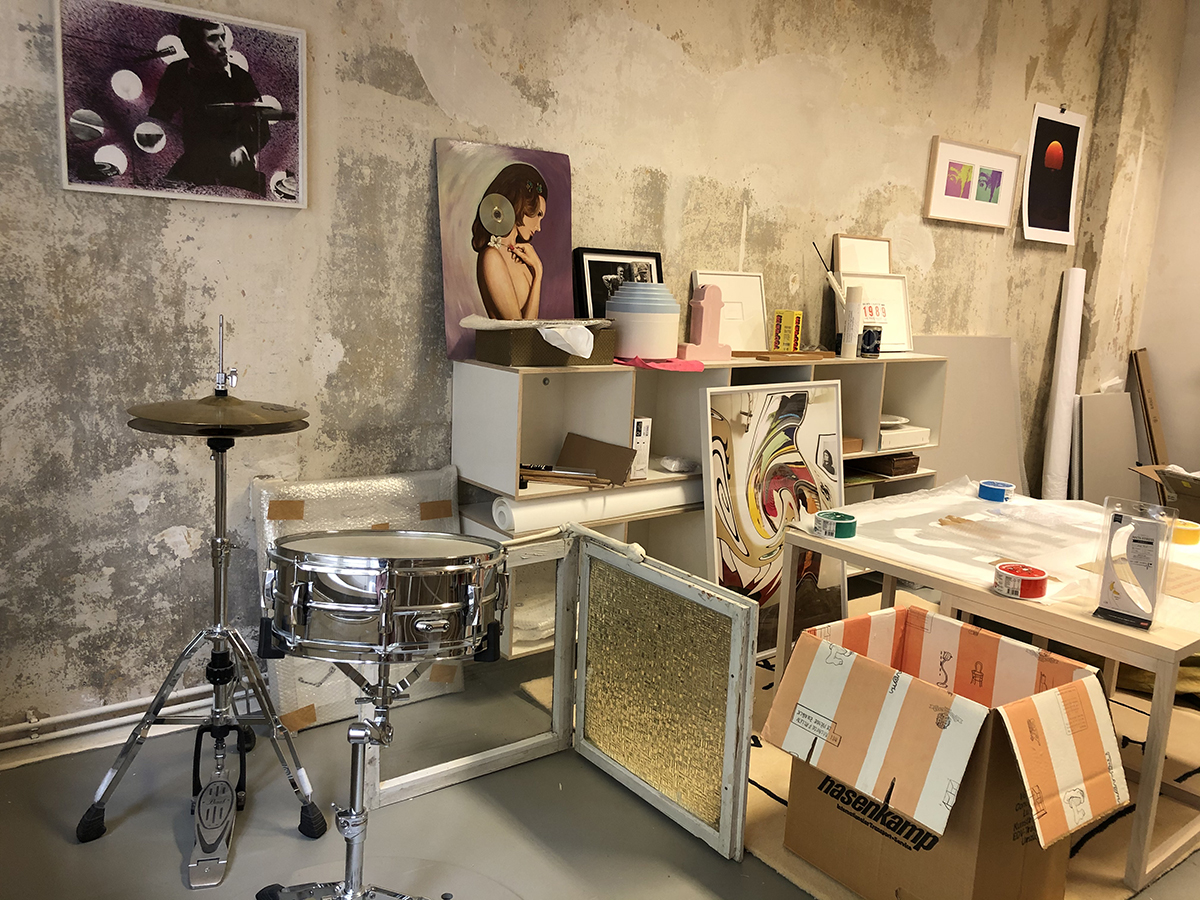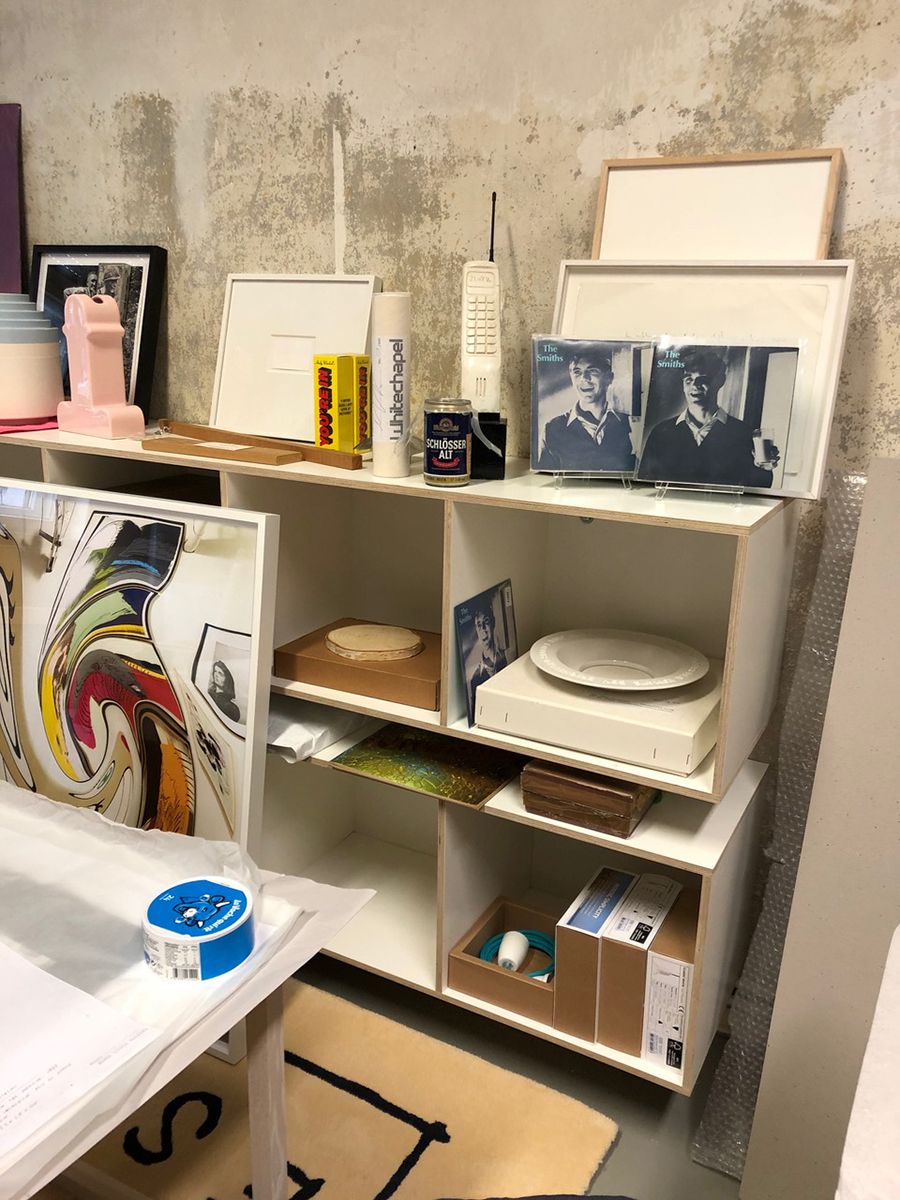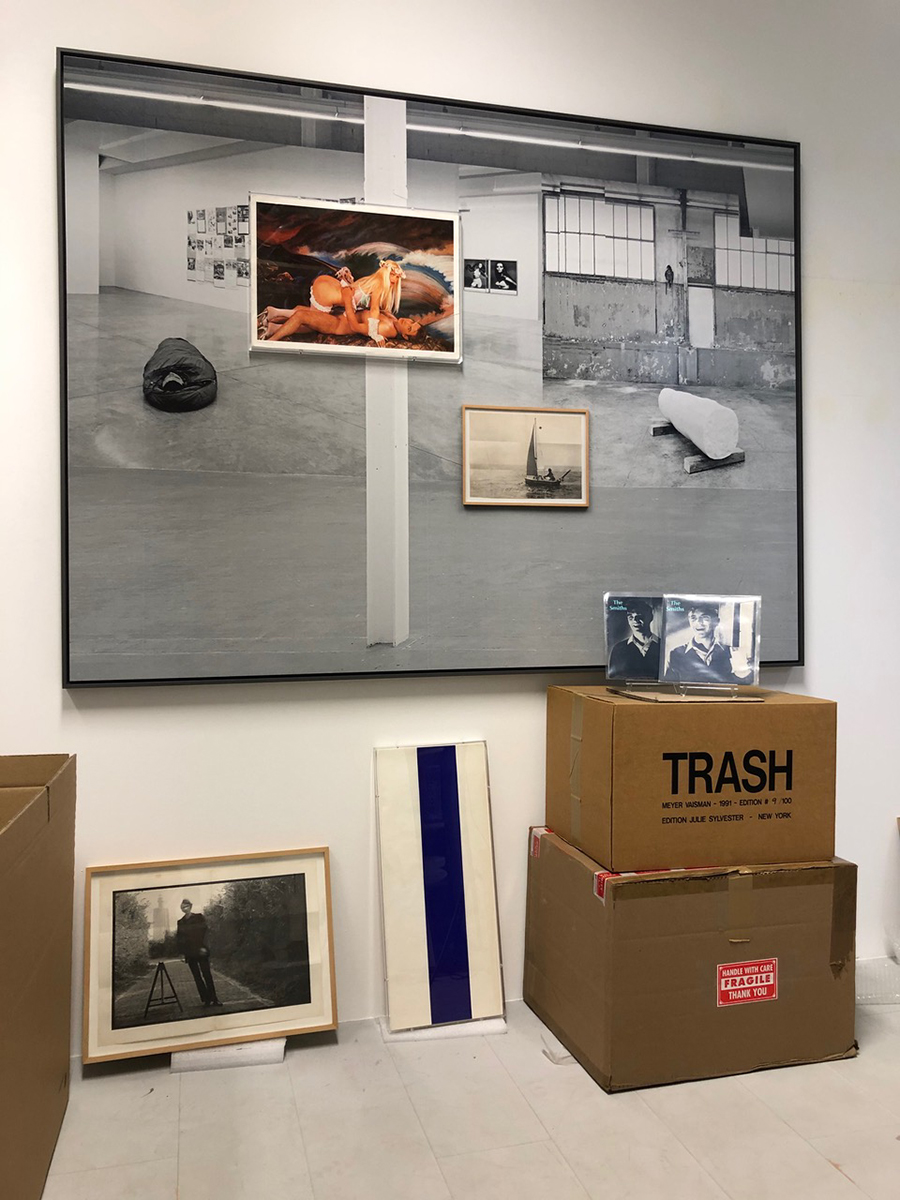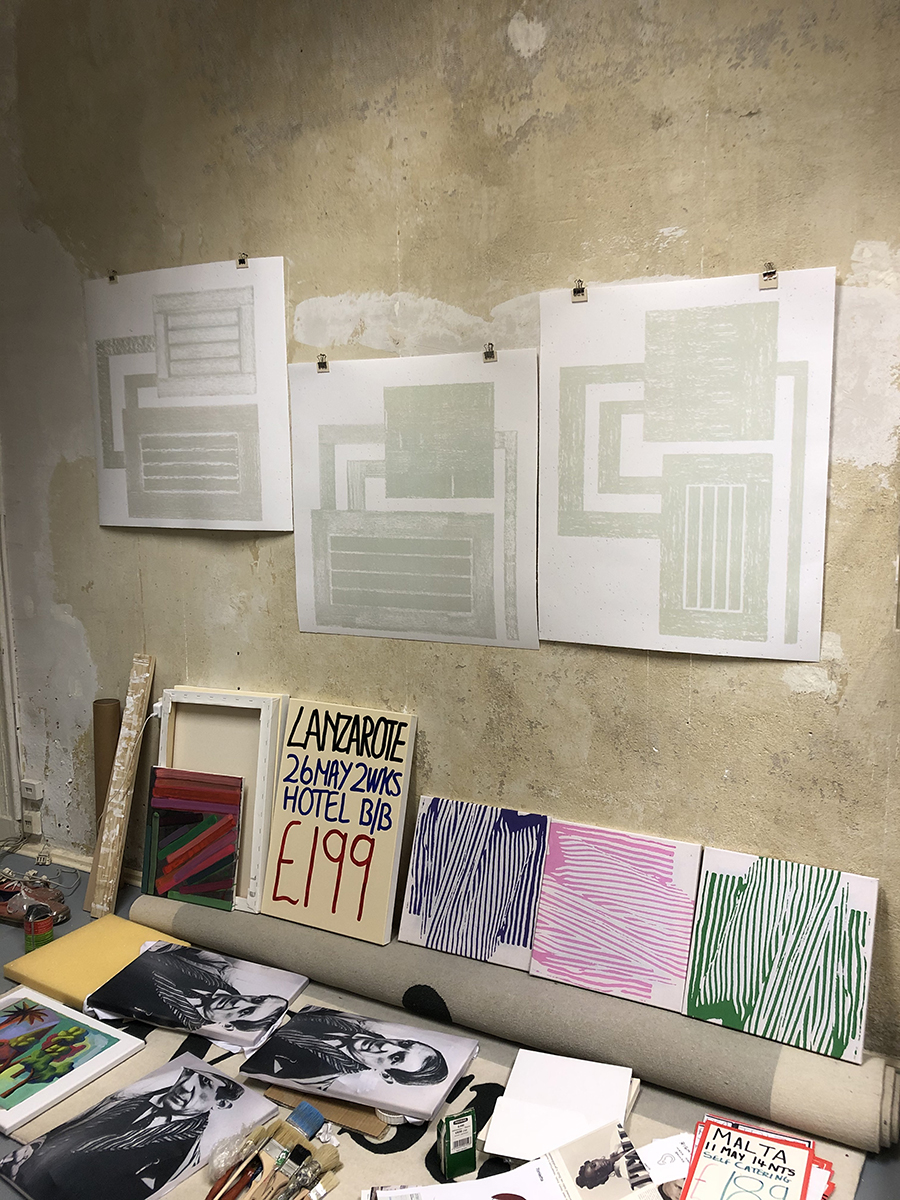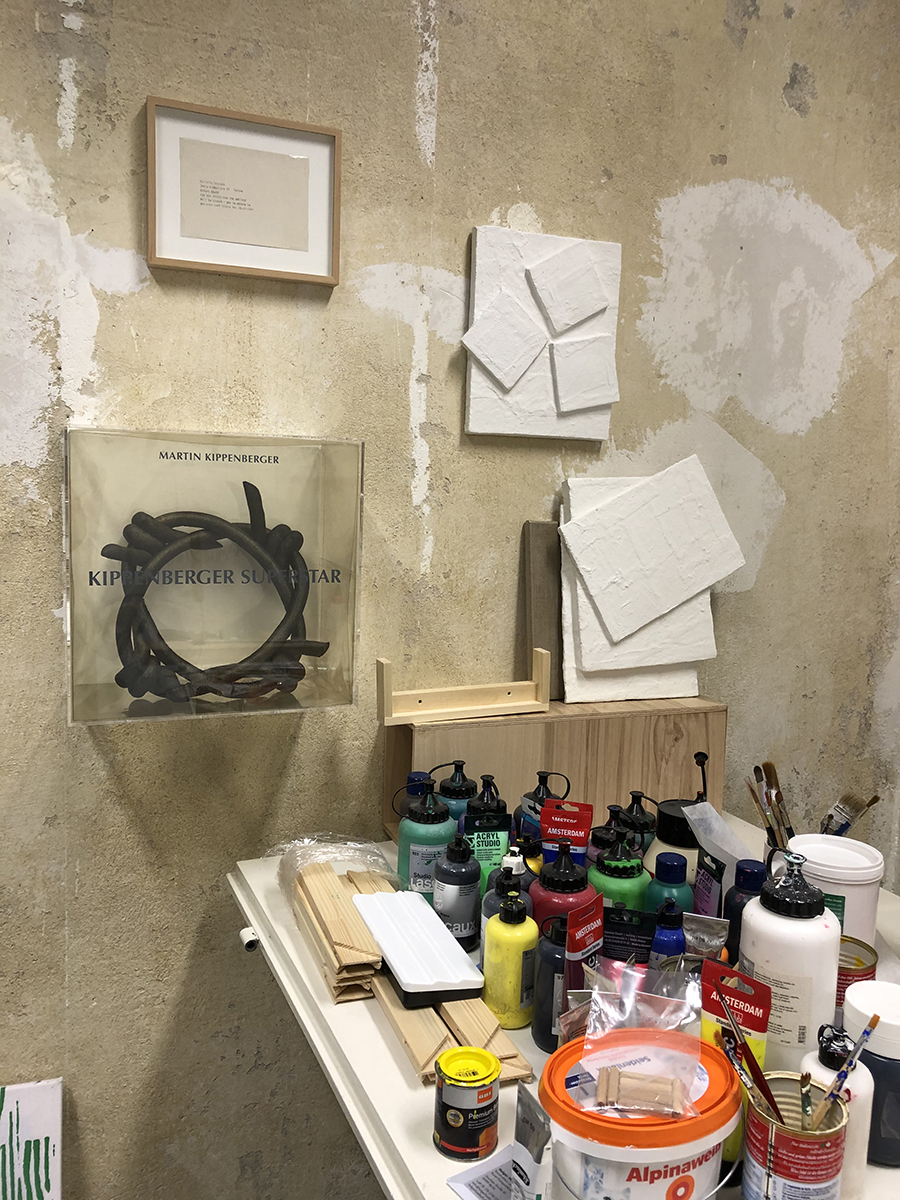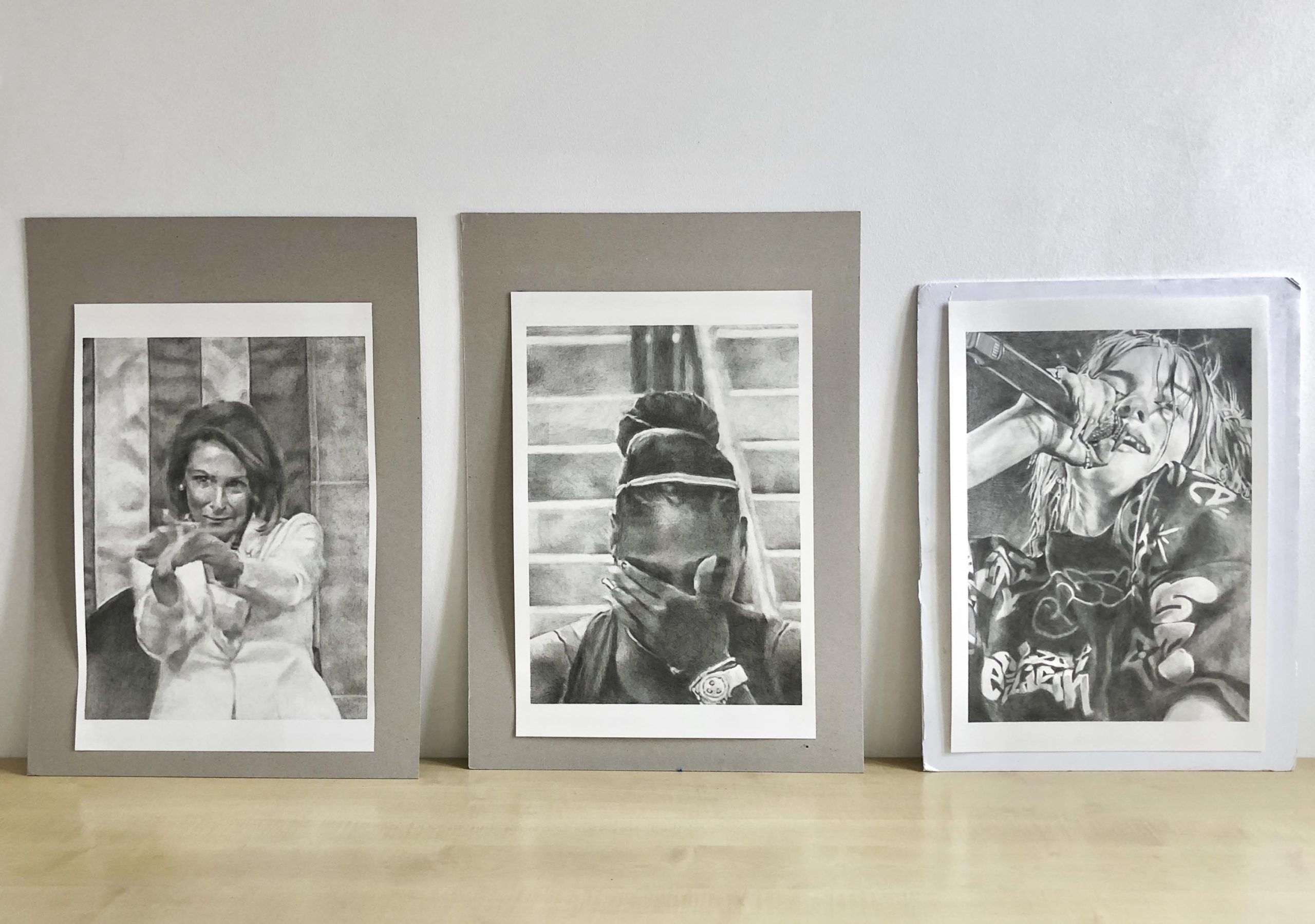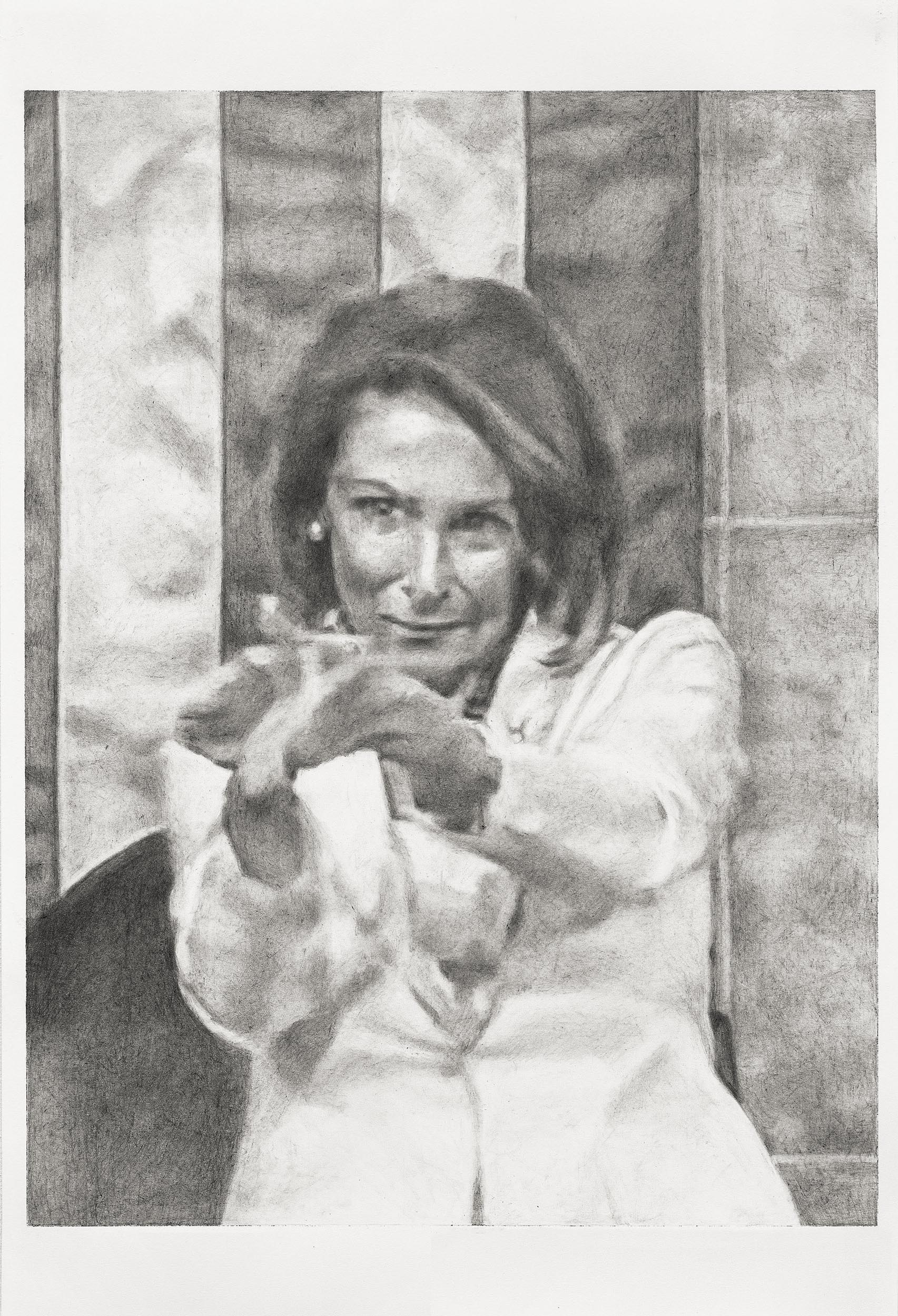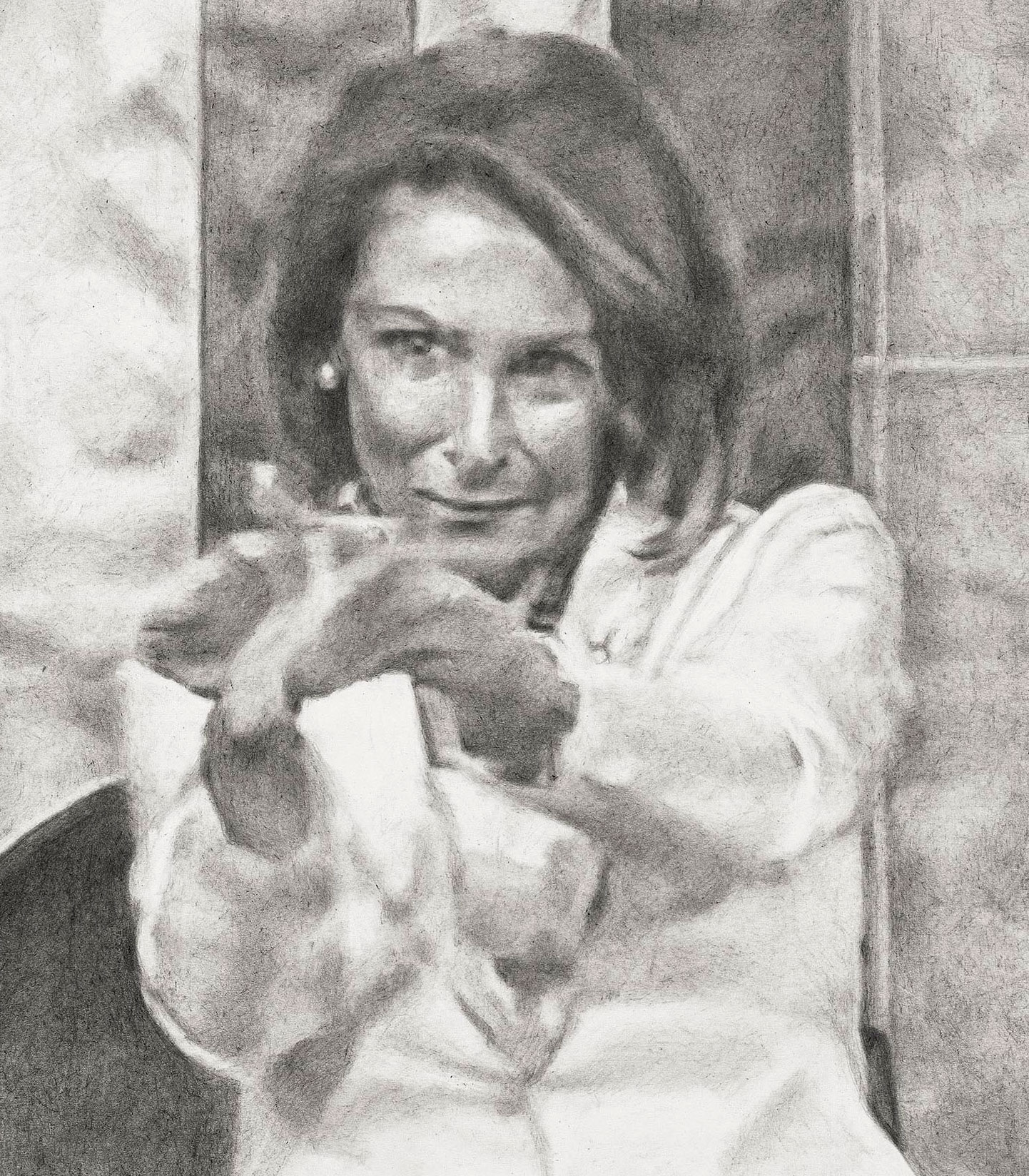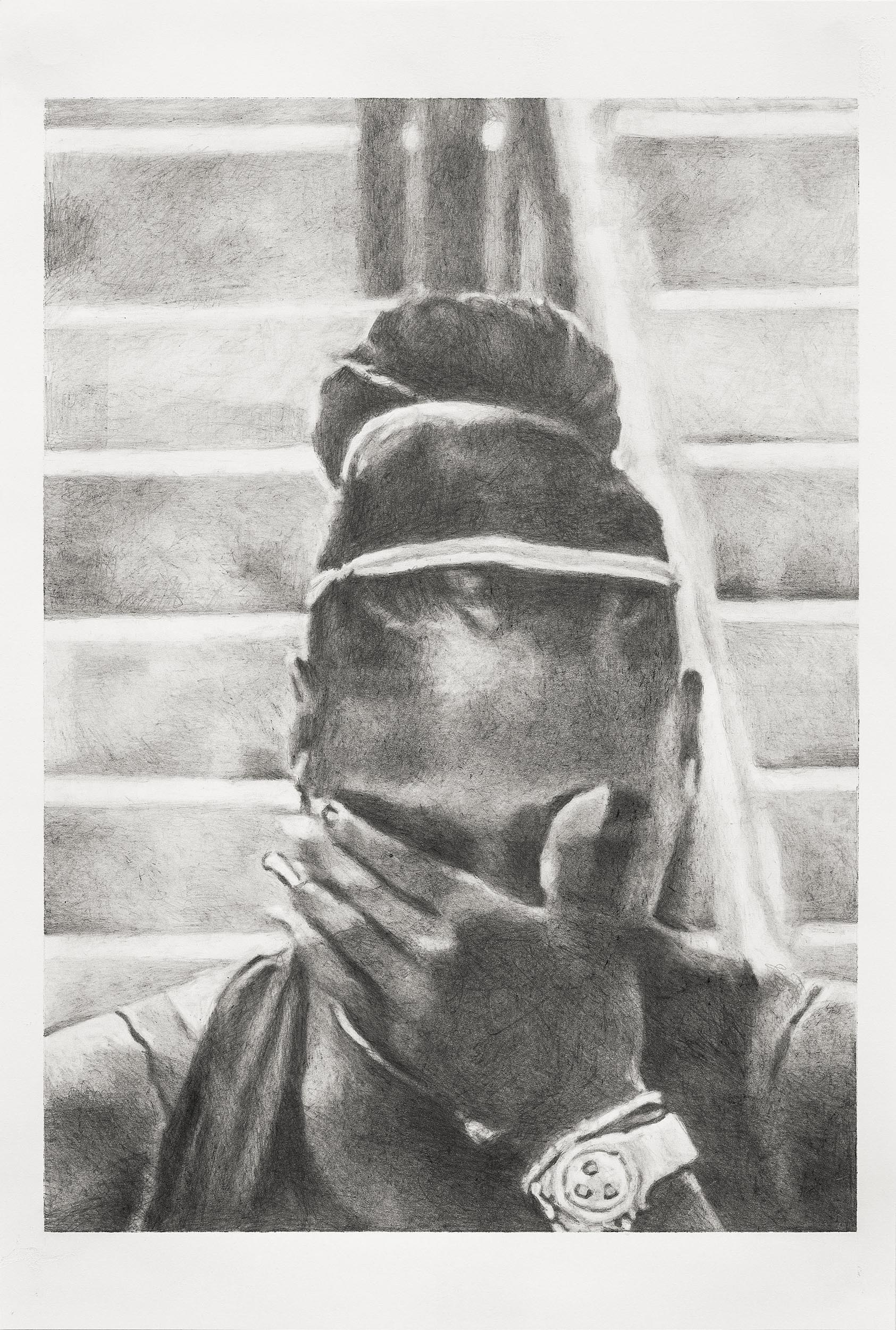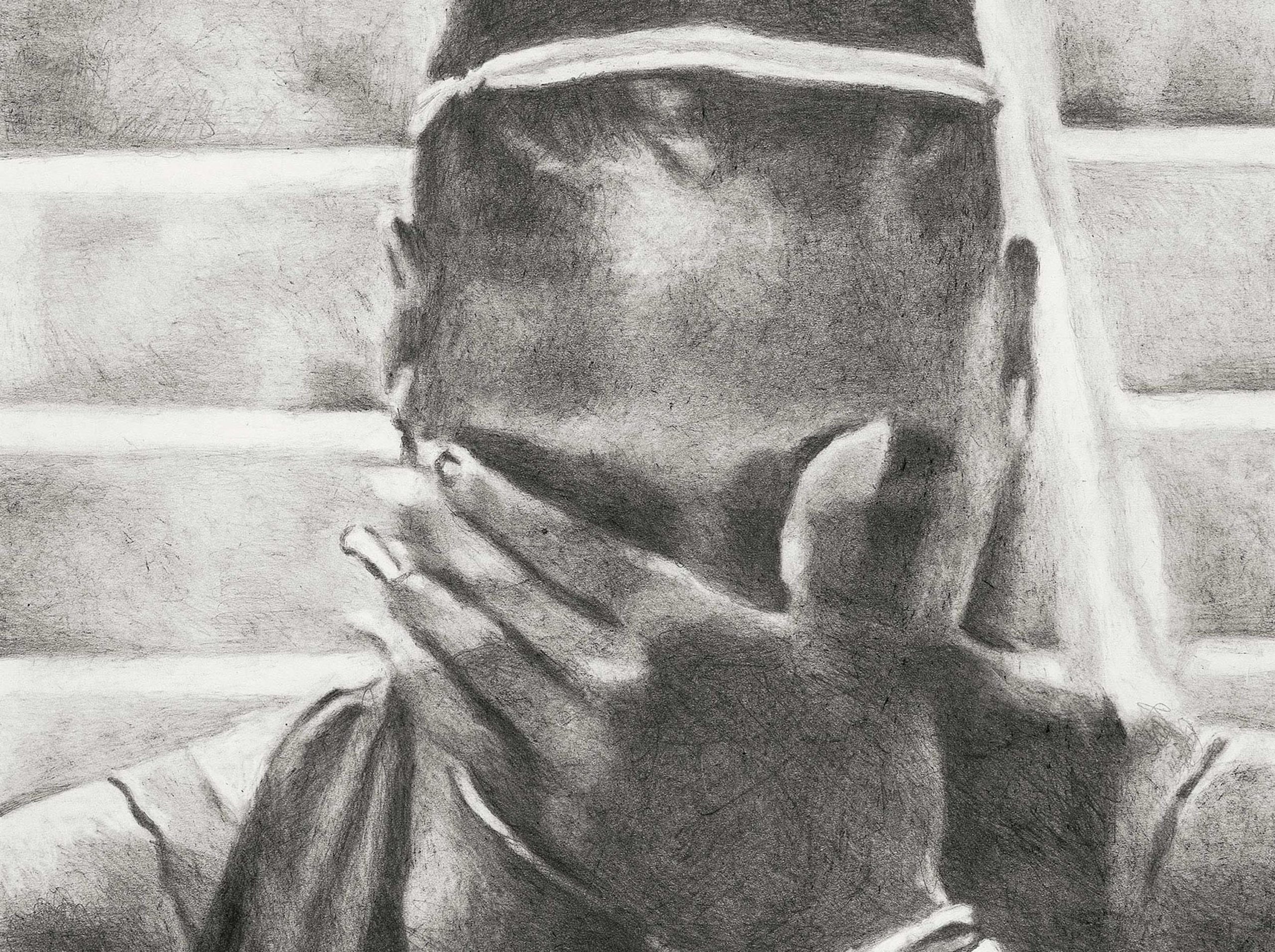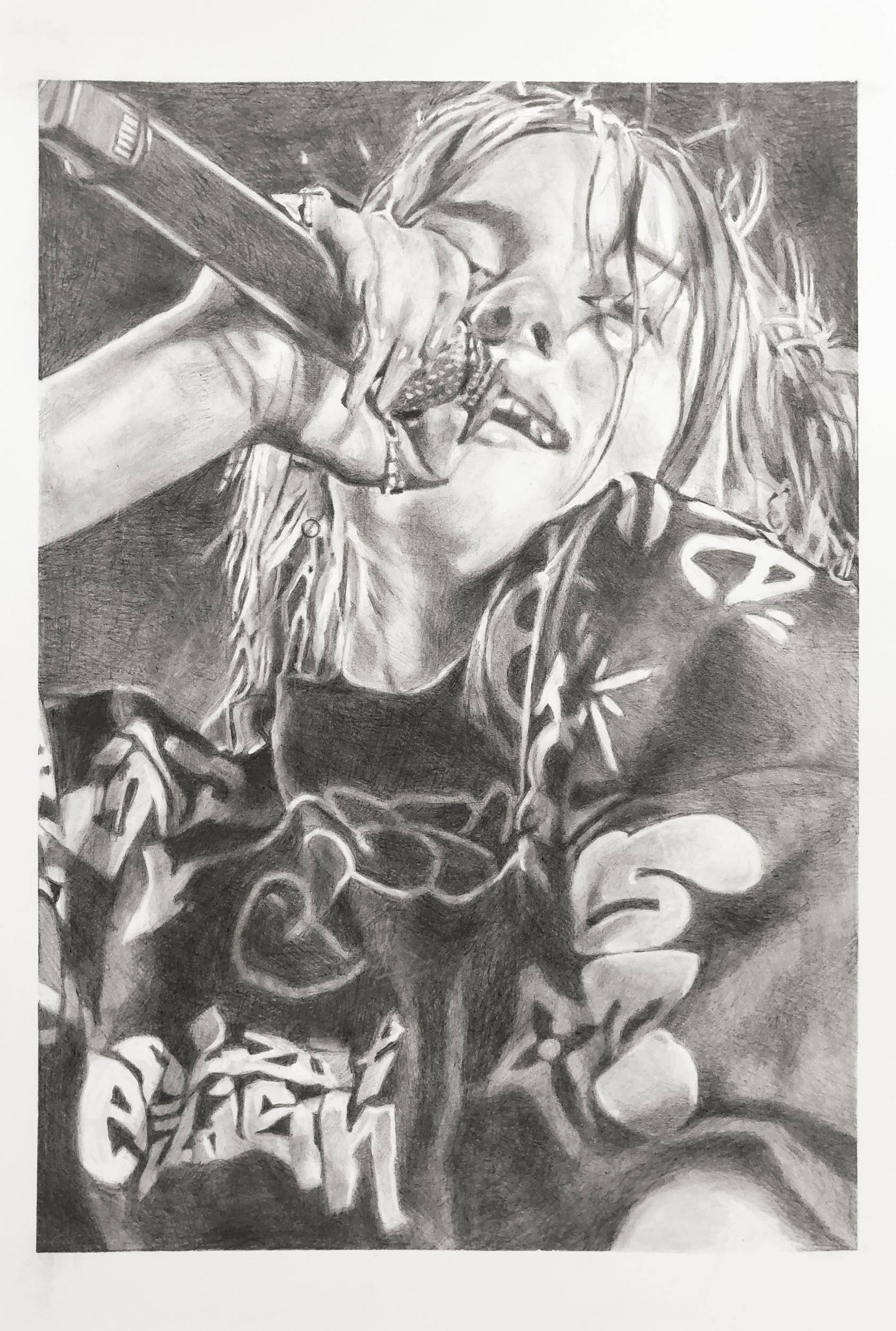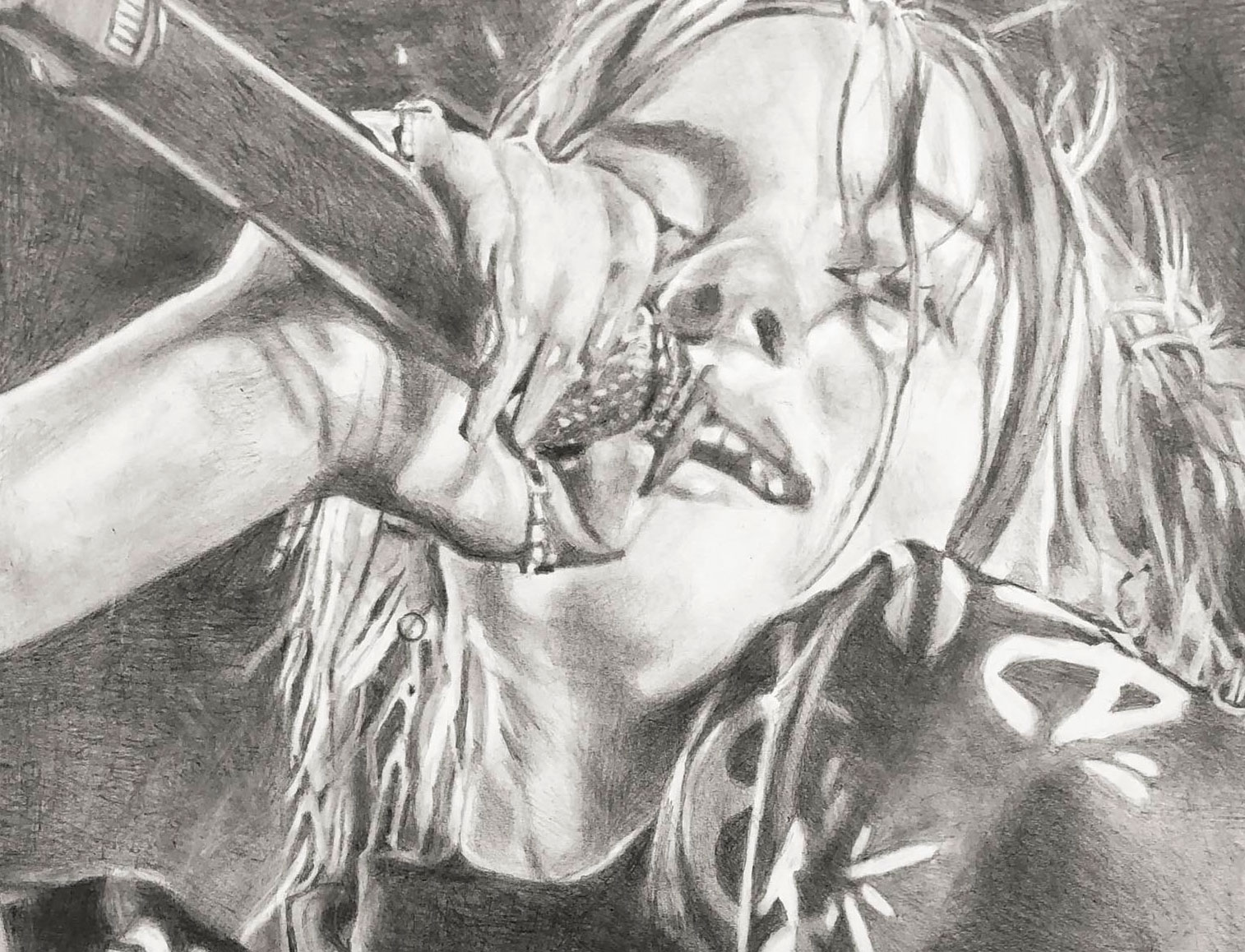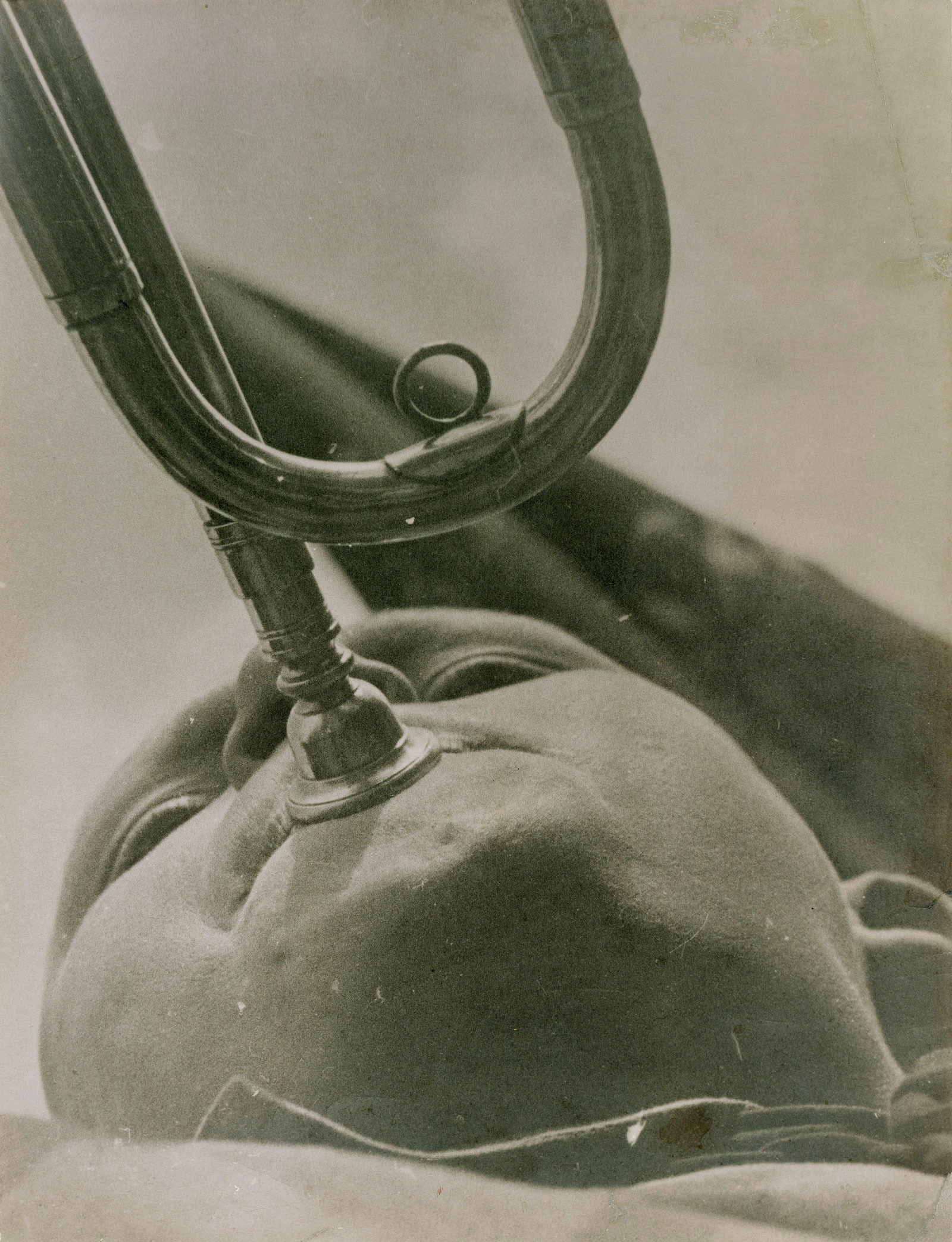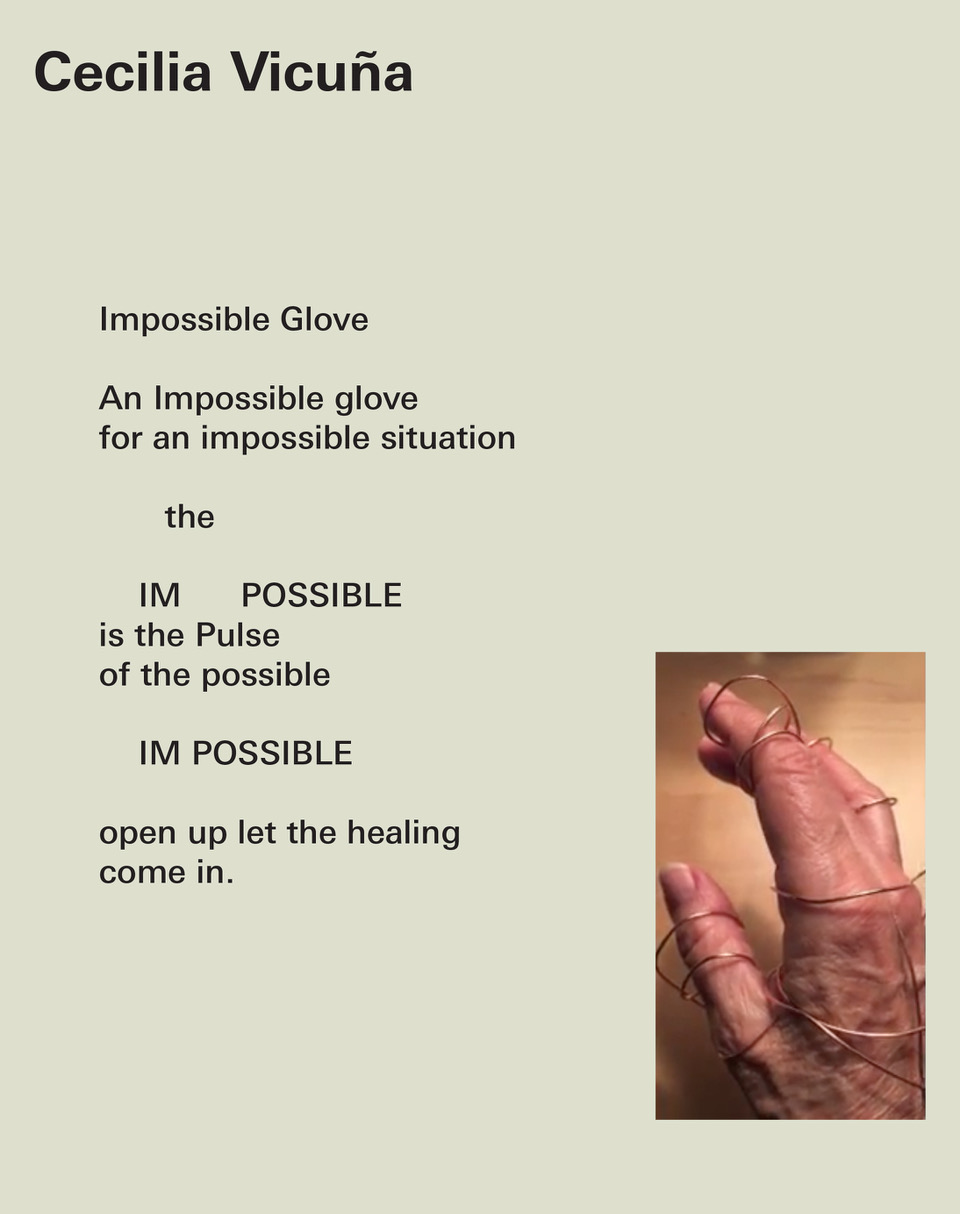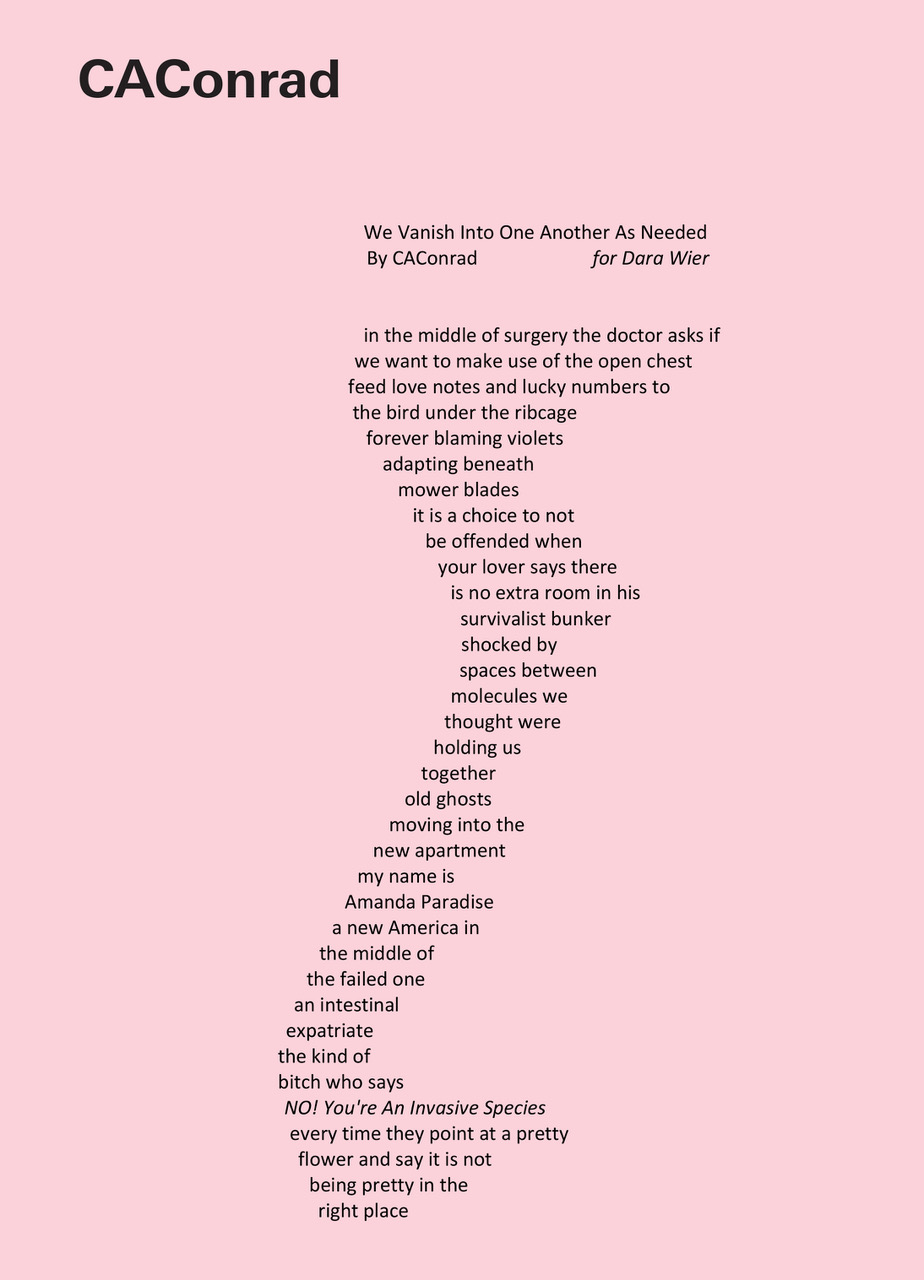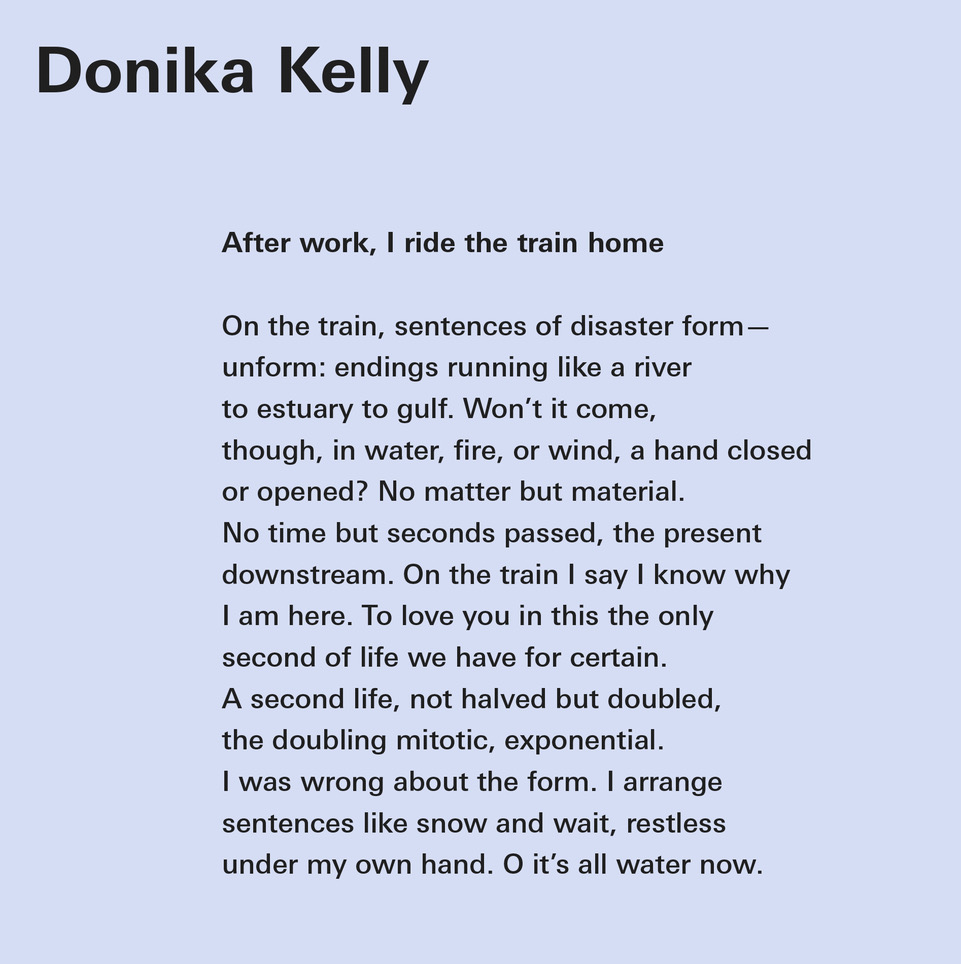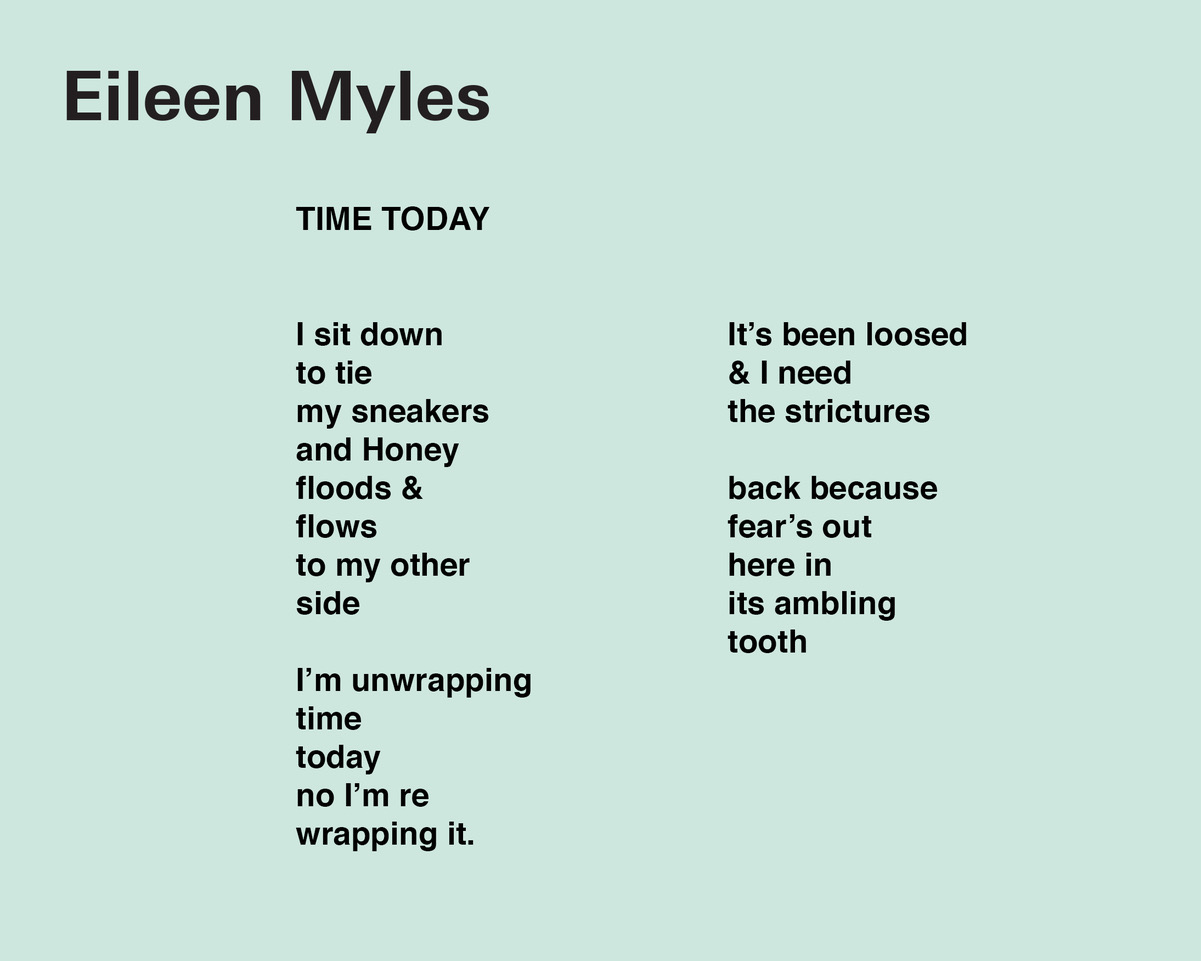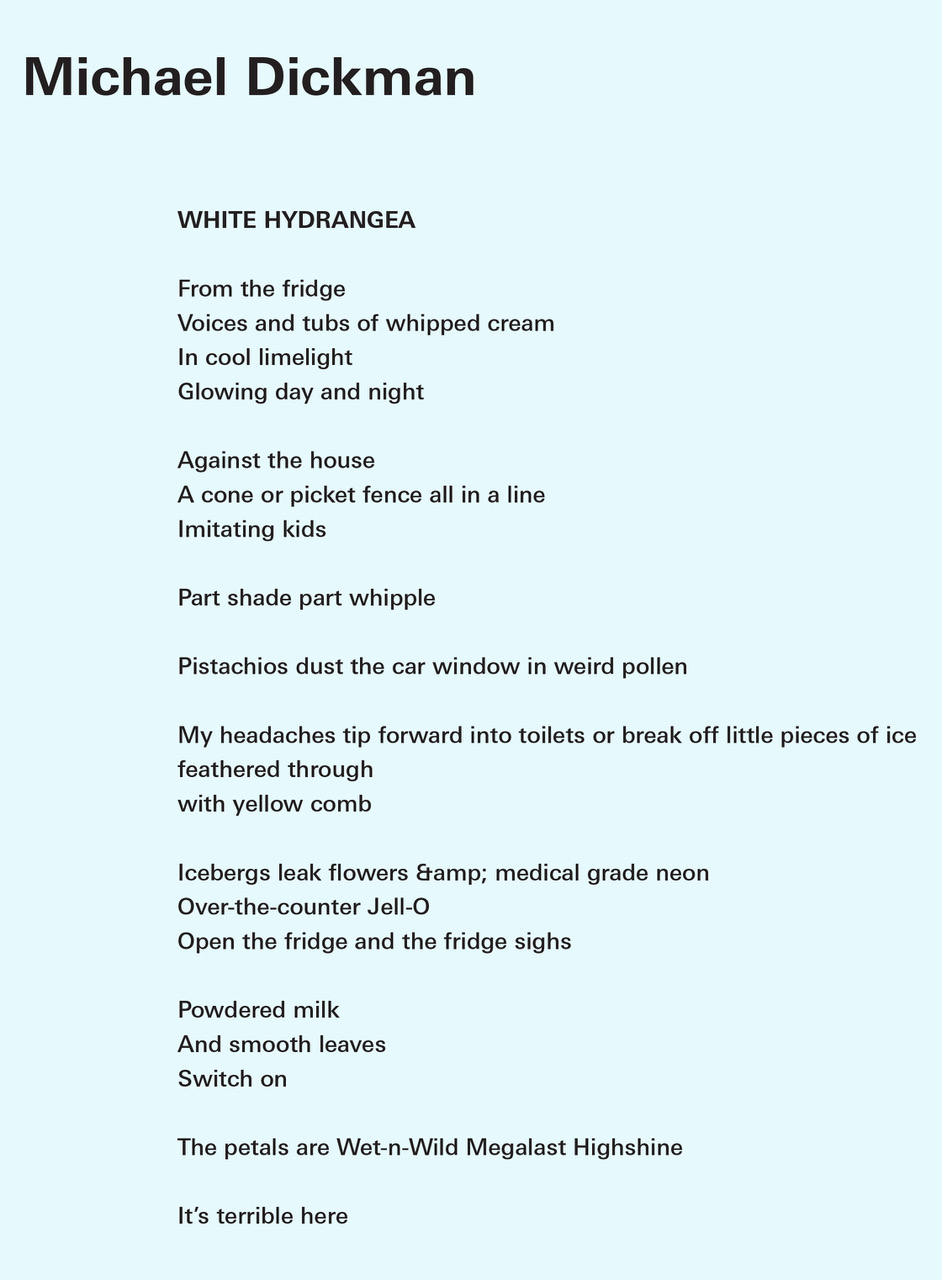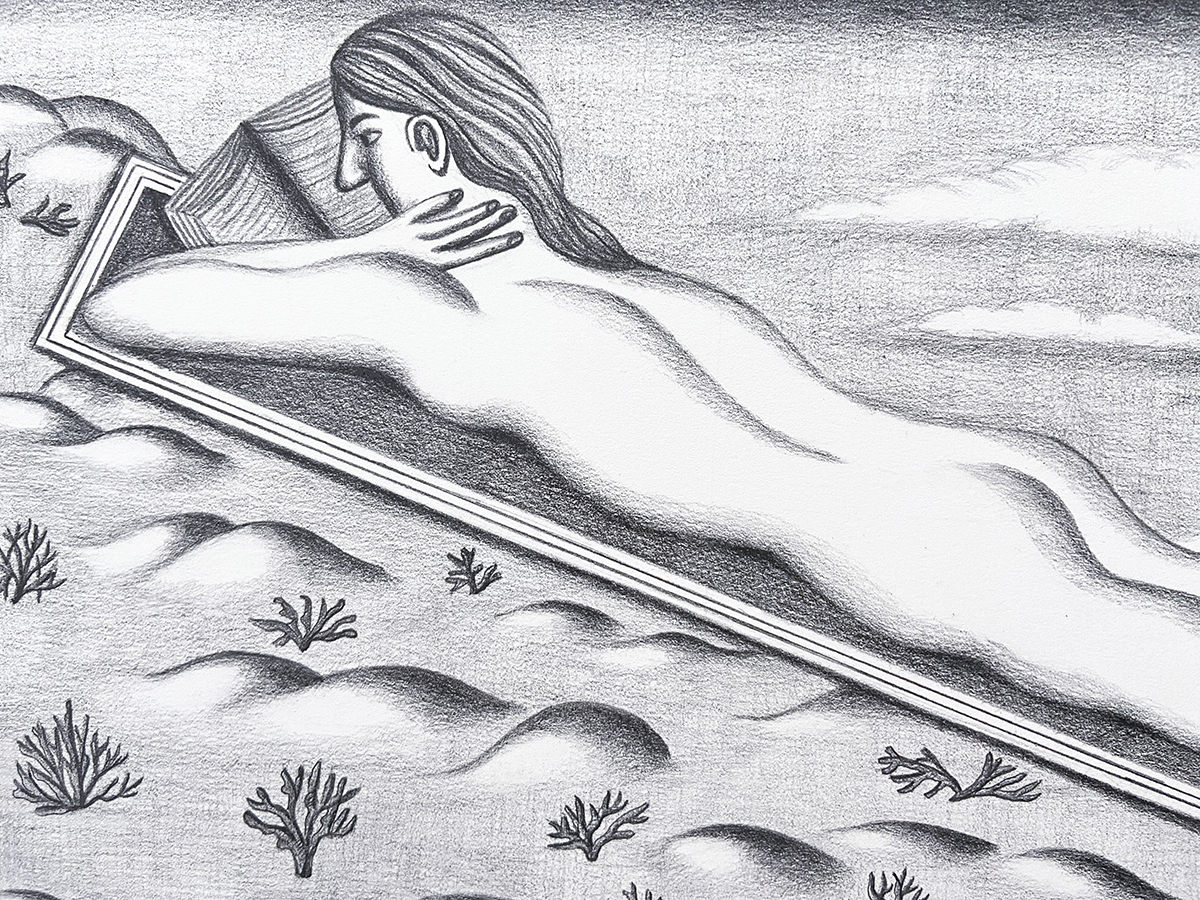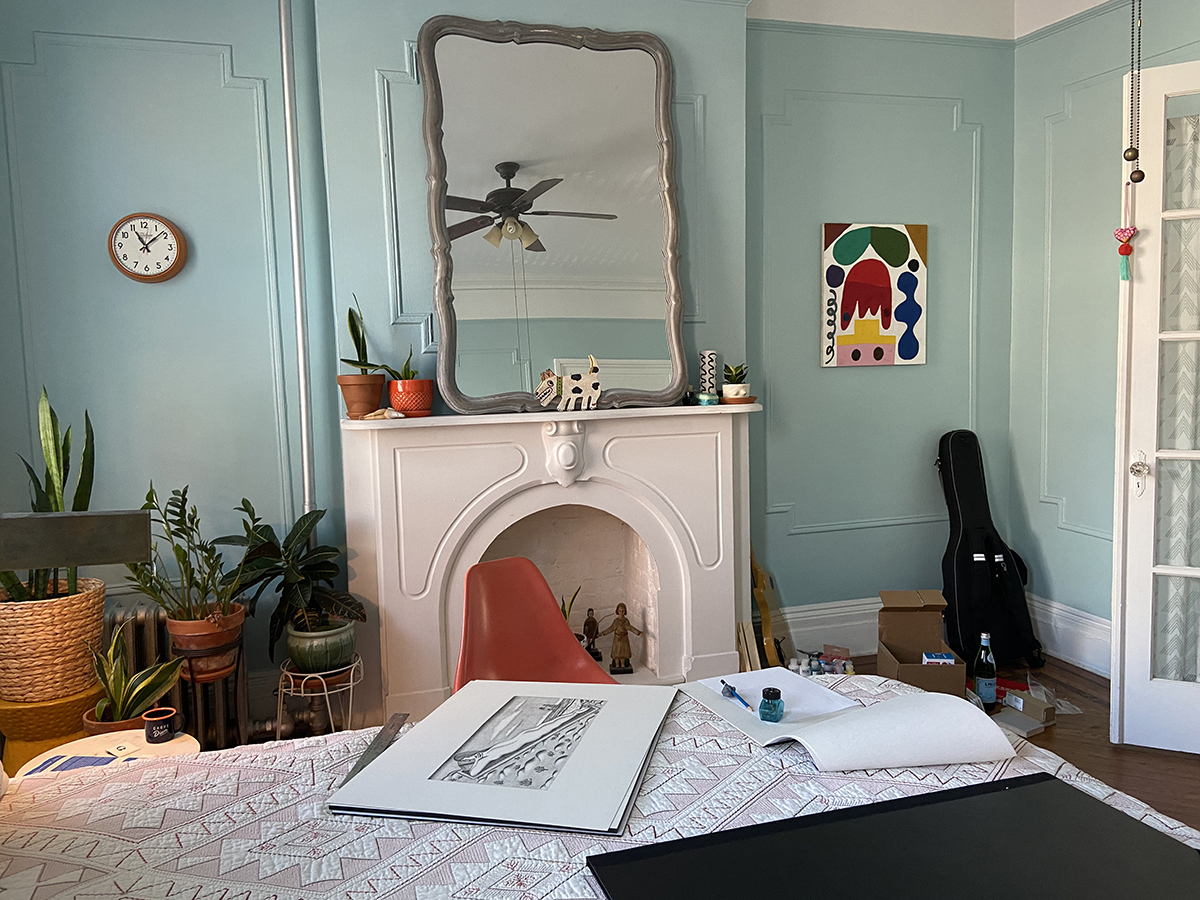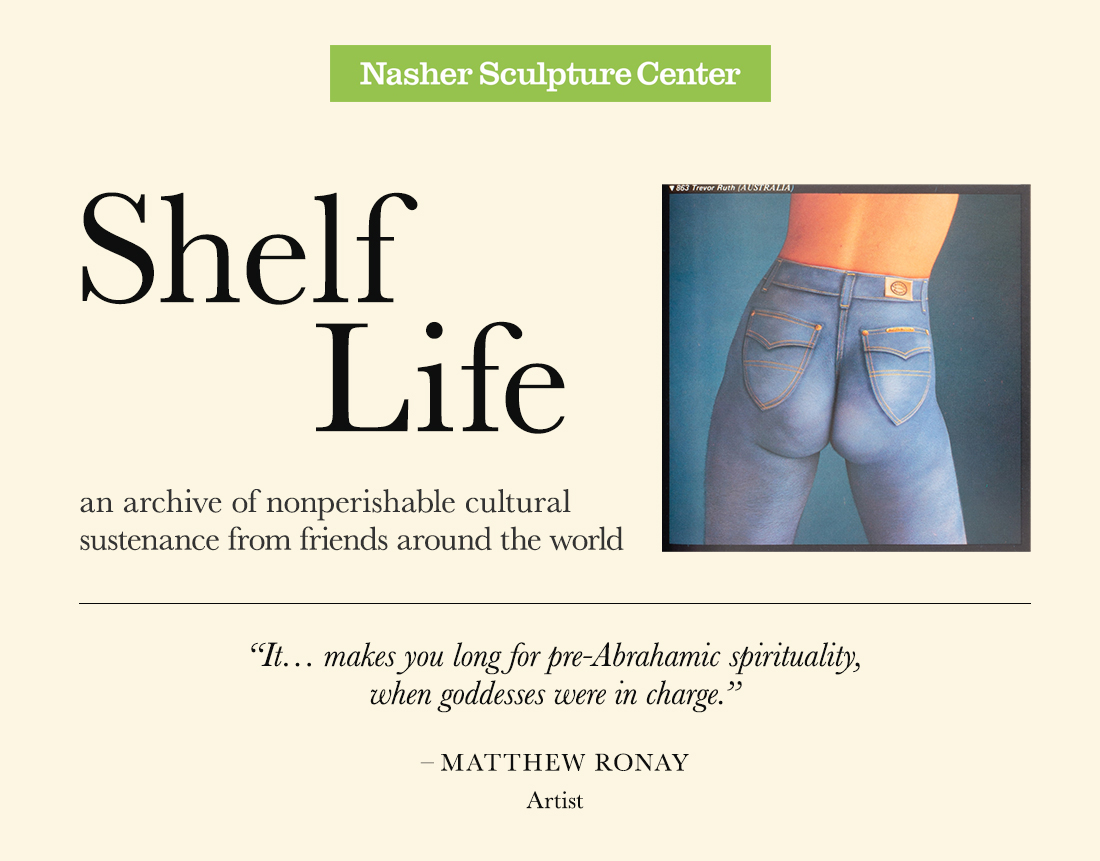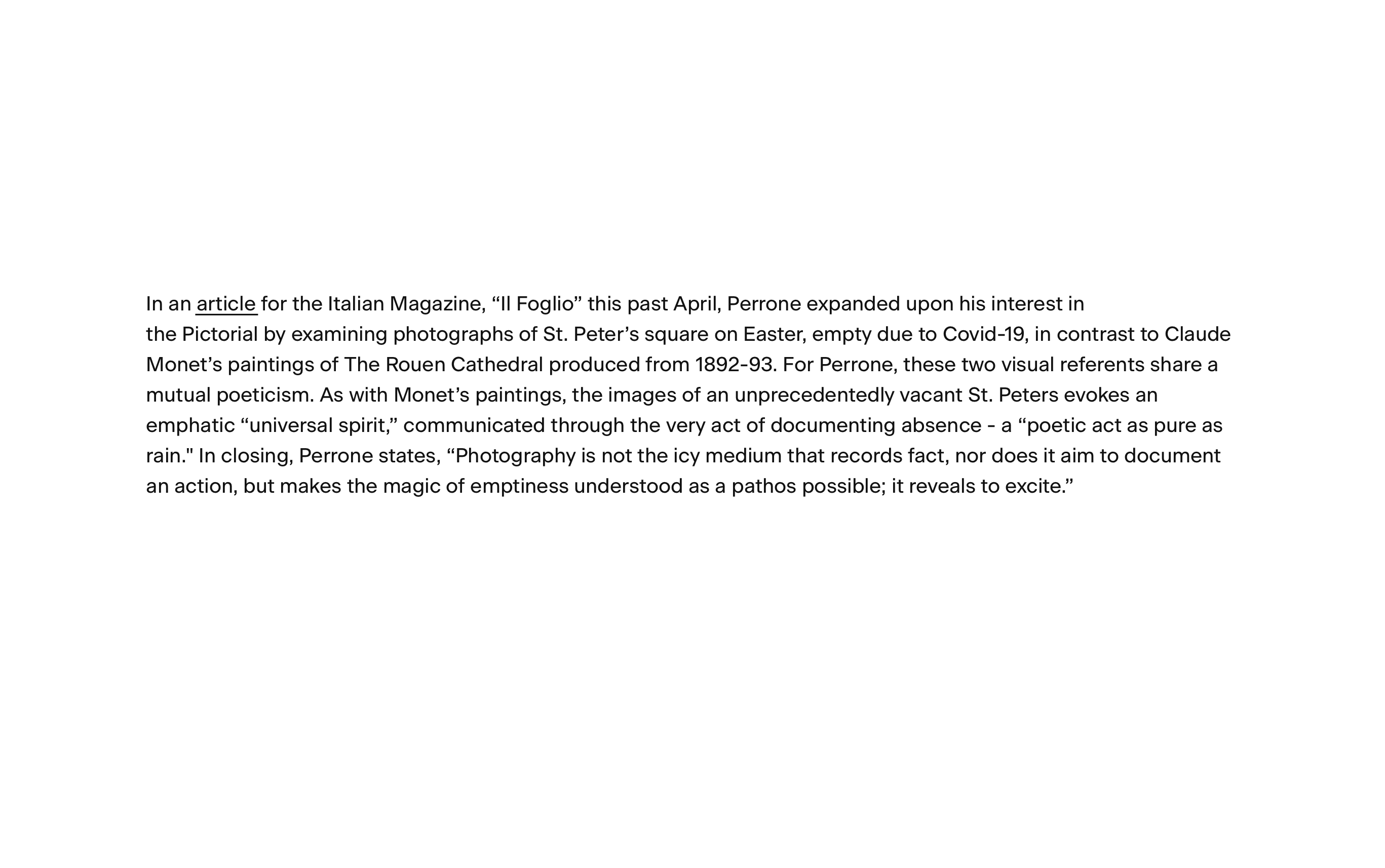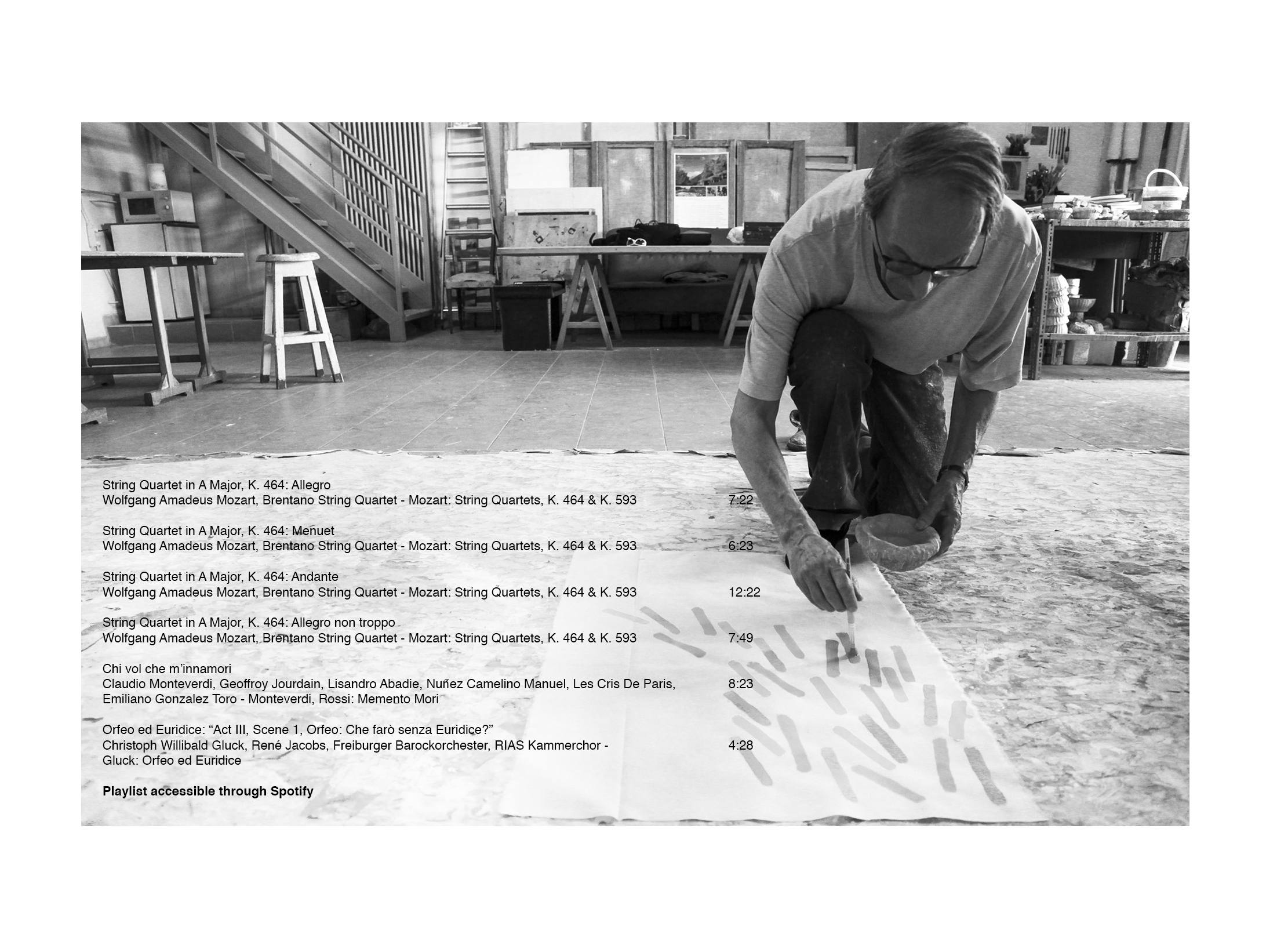For Artist Stories, Brian Jungen (b. 1970, Fort St. John, British Columbia) presents a digitized reproduction of his artist book “Brown Finger.” Originally published in 1997, the zine contains a selection of ink drawings produced while the artist was living and working in Downtown Manhattan in the years following his graduation from ECUAD in 1992. Rendered in an automatic, stream of consciousness style, the drawings explore notions of identity, queerness, Indigenous stereotypes, cultural memory and the violence of colonialist legacy.
For our newest installment of “Artist Stories,” Garth Weiser (b. 1979, Helena, MT) offers an intimate look inside his studio in Hillsdale, New York, as he works towards his eighth solo exhibition at the gallery, opening January 28, 2021. The exhibition will debut a new series of paintings that incorporate representational imagery sourced from the internet. To produce the works, Weiser downloads pictures found online, manipulates them in Adobe Photoshop, digitally prints the modified images directly onto his oil canvases, and continues to paint abstractly over top. Through a selection of reference material, photos of works in progress, and other informal images from the studio, we are able to preview this exciting new body of work and gain insight into the artist’s unique and expanding methodology.
Weiser maintains a non-hierarchical and intuitive approach to the sourcing of imagery - moving fluidly through niche social-media forums such as Reddit and Tumblr, to e-commerce sites peddling Clipart renderings and CAD vectors. Pictures are chosen as much for their formal and textural qualities as for any implied content, ranging from symbolically loaded to utterly banal. Computer game avatars and cartoonish band mascots fuse with stock graphics and textural filler. Employing his own series of distortions - both digitally and through his unique painting processes - Weiser mines the digital waste that pollutes cyberspace, where visual content is exhaustingly generated, distributed, and discarded, in a never-ending stream of user-controlled appropriation.
Once the photographs are transferred onto his canvas, Weiser continues to paint over the printed imagery, skillfully weaving virtual figuration with abstract form. Each painting is marked by surface striations. Weiser applies thin strips of tape over his compositions as he works which create indentations within the thick oil paint from when they are subsequently removed. Additional cavities are made by cutting away exterior layers with a utility knife, in order to reveal pops of color or glimpses of printed imagery underneath. This removal process becomes a painterly gesture in and of itself and transforms the canvases into sculptural objects that are experienced in relation to one’s own body. As he builds each composition, the representational imagery loses legibility; engulfed within the abstract overlay. Elements of the composition go in and out of focus, recalling philosopher Ludwig Wittgenstien's writings on 'aspect perception,' whereby a single image or object can contain multiple distinct and contrasting representations.This flickering of perception, akin to a ventricular photograph, is evident in ”remote group ceremony" (2020). The painting depicts what looks like the spiraled tentacle of a fantasy sea-creature rendered in psychedelic hues, against a bright yellow background. The illusory texture of the computer-generated extremity melds with the tactility of oil paint while streaks of silver-spray paint create a dynamic interference pattern.
Garth Weiser
remote group ceremony, 2020
Oil on panel
20 x 16"/ 50.8 x 40.64cm
Weiser's new paintings also display an acute somatic awareness - through both haptic materiality and representational imagery. Human forms adopt bionic qualities, blurring the boundaries between animal and machine. Some paintings reveal monstrous beings lurking under layers of paint, portraying a grotesquerie reminiscent of late medieval and early Renaissance artworks. Following in the varied traditions of painters such as Hieronymus Bosch, Pieter Bruegel the Elder, and Francisco de Goya, as well as more modern movements such as neo-expressionism and the Chicago Imagists, monstrous representation is used as a metaphor for larger societal ills. With a rough handling of material, Weiser harnesses the symbolic and emotive power of the fantastical that has appeared for centuries throughout the history of art.
Both alien and inexplicably familiar, Weiser’s choice of imagery speaks to a collective subconscious permeated by anxiety, dissociation, sanctimony, escapism, absolutist thinking and social isolation - perhaps best illustrated by the recurring “2020” that appears in balloon font across multiple compositions. By appropriating existing images from the internet, rather than imagining and rendering them himself, the paintings can be read as a mirror of human fear and desire. With a dark humor, Weiser balances such critique with the fundamental concerns of painting - color, surface, line and form - as he continues to challenge the limitations and potentiality of abstraction.
Left: Francisco Goya, Ghostly Vision, 1801, oil on canvas. Museo Camon Aznar, Zaragoza. Right: Max Ernst, The Antipope, 1941-42, oil on canvas. The Solomon R. Guggenheim Foundation, Peggy Guggenheim Collection, Venice, 1976.
Hieronymus Bosch, The Temptation of St. Anthony, 1501 (detail). National Museum of Fine Arts, Lisbon
Garth Weiser, Monster, 2020, Oil on panel. Photo: Karen Pearson.
Garth Weiser Studio, work in progress, 2020
Garth Weiser Studio, work in progress, 2020
Hieronymus Bosch, The Garden of Earthly Delights, 1503-1515 (detail), Museo Nacional de Prado, Madrid.
Garth Weiser Studio, work in progress, 2020
Garth Weiser Studio, work in progress, 2020
Jeff Burton, Untitled (girl with black curtain), 2020. Image courtesy the artist, Peter Saville and Sacho GmbH, Nuremberg
Jeff Burton shares images from a recent collaboration with British art director and graphic designer, Peter Saville. The photographs, commissioned by textile and design company Sacho in anticipation of their 200th anniversary, were shot in a set-like villa in the Palisades of California. Rife with dramaturgy, the photographs reveal glimpses of bodies, furniture and fabrics that meld together in each sensual and tactile composition.
Jeff Burton, Untitled (pink sofa, chess set), 2020. Image courtesy the artist, Peter Saville and Sacho GmbH, Nuremberg
Jeff Burton, Untitled (yellow pillow), 2020. Image courtesy the artist, Peter Saville and Sacho GmbH, Nuremberg
Crafting images that tell us more by showing us less, Burton adopts the architecture and decor of the Villa as vital protagonists within an elegantly reconstructed narrative of desire. Executed with a precise attention to detail and masterful use of light that has defined Burton’s practice, the interior images invoke an atmosphere of isolation and ennui that speaks to our current moment.
Jeff Burton, Untitled (couple with blue chair), 2020. Image courtesy the artist, Peter Saville and Sacho GmbH, Nuremberg.
Jeff Burton, Untitled (Blonde Brocade), 2020. Image courtesy the artist, Peter Saville and Sacho GmbH, Nuremberg
For over three decades, Burton has utilized photography as a way to understand and commune his physical and psychological environment, creating images that prompt the viewer to examine the complex possibilities that may lay dormant within their own inner and outer worlds. His imagery travels fluidly between different stylistic and genre referents; photojournalism, still life, portraiture, fashion and architectural photography. Additionally, Burton's photographs incorporate painterly formal elements, including but not limited to abstraction and minimalism, and a measured handling of light reminiscent of Dutch still life painting. The composition of each image is carefully crafted to seduce the viewer into an illusion of aspirational decadence that has defined American culture, particularly as observed by the artist in Southern California.
Jeff Burton, Untitled #115 (measuring tape), 2000, cibachrome print, 16.5 x 24''
Jeff Burton, Untitled #170 (oranges), 2000, cibachrome print, 26.5 x 40''
Burton's earliest works are informed by his experience working in the adult film industry. Embracing a role as both insider and outsider, Burton’s redirected lens captures poignant and quiet observations on film sets that might otherwise go unnoticed. Neutral in his approach, these fleeting and ambiguous moments are stripped of didactics or moralism. Instead, his unique images oscillate between the explicit and implicit, erotic and neutered - often within a single photograph. Acutely aware of the classist and puritanical judgements projected onto the pornographic environment, Burton ultimately provides a more challenging depiction of a world more complex than its packaging allows.
Burton’s unique methodology eludes traditional categorical distinction, existing in a space between fantasy and reality. His photographs reveal both the potential and dangers of censorship, while scrutinizing the contradictory nature of collective moralism. In Burton's imagery, absence and presence are equally impactful. Through his distinct visual language, Burton empathetically explores the biases and motivations that inform human behavior, utilizing image-making to engage elemental notions such as desire, affluence, beauty, ambition, love, abjection and the performative nature of identity.
Jeff Burton, Bob Mackie's Pool, 2012, coated pigment print, 40 x 60''
Jeff Burton, Untitled (young man on television), 1997
Jeff Burton, Untitled #45 (equipment), 1997, C-print, 30 x 40”
Jeff Burton, Eniko Mihalik, 2012, Hand-coated pigment print, 40 x 30.5"
Falsetto by Sarah Hennies
Composer Sarah Hennies performs the piece Falsetto, a 30-minute movement of cumulatively applied patterns that highlight the nuance of balancing layered structures. In an interview, she mentions “…falsetto is one of the ways in which assigned-male-at-birth people can artificially raise the pitch of their voice, but…speaking in a falsetto voice as someone who is born with a lower voice does not make you sound conventionally female. It’s the same spirit of this piece, that you are doing something that you just can’t do.”
Frederick Sommer
Frederick Sommer was not just a photographer, his hydra-like approach to working breached writing, music, and drawing. He was a teacher of Emmet Gowin, and current inspiration to Mark McKnight, whose work I love. Sommer is the creator of the document, The Poetic Logic of Art and Aesthetics, that on the surface seems quite simple. However, I find myself having read each page 20 times, rearranging my thoughts about possible interpretations constantly.
Minnie Evans
Evans had such a gifted use of symmetry and rich visual vocabulary. This 1993 catalogue by East Carolina University contains a drawing titled My Very First. It’s utterly incredible.
JCA Annual 5
During the beginning of the lockdown, I received this annual made by the Japanese Creators Association that contains hundreds of works by the world’s illustrators from the year 1984. The imagery is often ridiculous, but the analog quality of image creation, or lack of computer-generated imagery, is refreshing. Heavy on the airbrushing, it includes many famous illustrators, such as Ichiro Tsuruta, and lesser knowns from around the world. Here are a few images I loved by Andreas Demetriou (Greece), Ichiro Tsuruta (Japan), Seiichi Hayashi (Japan), Han Kardinata (Indonesia), and Trevor Ruth (Australia).
Dagobert Peche
A young and vibrant member of the Wiener Werkstätte, the co-director starting in 1917, and according to Josef Hoffmann, “the greatest ornamental genius Austria has produced since the Baroque…”. His fanciful style contrasts with Hoffmann and Koloman Moser, who also makes me faint. The Wiener Werkstätte happened to be an enigmatic moment in early 20th century history where the meshing of artist, artisan, and client was at its pinnacle. I’ve tried to absorb all its artists and the ones that came before it in the Vienna Secession. Peche was the most eccentric and died fairly young. He disavowed his work for the Werkstätte in the end, and really just wanted to be a painter. Sadly, we never got a chance to see these works as he was mowed down by tuberculosis complications.
Notes from the Woodshed by Jack Whitten
This book is a pleasure to read. The battle of creation is captured by Whitten in this studio log from the 60’s up to the near present. I read it nonlinearly. He’s always searching, and the suspense of him restating the horizon that he’s reaching for is science.
"I stay at home in my flat and paint small watercolors of Other flowers. But I dream of scale, of an eroticised city. A wildness growing. An Otherness splendid and bold. I fantasize of decorating the city. In bright strong colours I cover the buildings with frescoes. Weird proud bodies, glorious in form, defiantly rising in shared and tender love. A transformation of life."
- David Thorpe, May 16, 2020, Berlin
Thorpe invites us inside his Berlin apartment, sharing an image of the space in which he drafted and executed a set of intricate watercolors while the city was in lockdown earlier this year. Two large reproductions of recent Frescos are seen here, along with books, sketches and reference images, all of which provide insight into the preliminary stages of the artist’s process.
Over months of solitude, Thorpe continued his meticulous watercolor practice, illustrating plants as emblems of alienation and otherness. Although utilizing pre-modern methods and techniques dating back to antiquity, particularly the laborious process of Fresco painting, Thorpe’s imagery is both contemporary and artificial. Nature appears realistic upon first glance, however, closer examination reveals fantastical forms culled from the imagination, as Thorpe quietly breathes new flora into being.
Isolated from genome or context, the fictional plants share a seclusion that perfectly coincides with life in quarantine, while their blossoming fecundity speaks to the processes of reopening and renewal.
Studio shot of David Thorpe's Dignified Body (Design for Monumental Living), 2020 in progress. Image courtesy the artist.
Thorpe's watercolors and Frescos incorporate the visual language of historical botanical illustrations, which were the only way of recording the world’s many plant life species prior to the invention of photography in 1826. The practice can be traced back to sometime between 50 and 70 CE, when an illustrated book titled “De Materia Medica” was created by Greek botanist Pedanius Dioscorides to help readers identify plant species for medicinal purposes. Appropriating aspects from this rich history and visual language, Thorpe morphs traditional techniques and scientific imagery to create representations of regenerated, imagined plant-life as splendid symbols of otherness.
Pages from, “De Materia Medica”, created by Greek botanist Pedanius Dioscorides between 50 and 70 CE.
David Thorpe, A Splendid Beast, 2018, Watercolor on paper, 41 x 26.5" / 104.14 x 67.31cm (framed)
David Thorpe, A Splendid Beast, 2018 (Detail)
David Thorpe, A Joyous Wild Body, 2018, Watercolor on paper, 40 x 26.5"/ 101.6 x 67.31cm (framed)
David Thorpe, A Joyous Wild Body, 2018 (Detail)
David Thorpe, Greater Life in Hiding, 2016, Oak, split hazel branches, sand, earth, clay, horsehair, dung, slake lime, pigment, 28.3 x 25 x 2.75" / 72 x 63.5 x 7cm
David Thorpe, Greater Life in Hiding, 2016 (Detail)
Image courtesy the artist.
Diego Perrone (b. 1970, Asti, Italy) shares an unusual, yet lyrical photograph framed within a Thai pagoda. In the distant horizon line of the photograph, a chicken appears to dive head first towards the ground within the pagoda interior. The candid moment was captured by the artist during his travels in Southeast Asia many years ago and was selected by Perrone now for its humor and satirical poignancy. Playful yet sad, the image reflects Perrone’s ongoing interest in photography and the ephemeral spontaneity of the "decisive moment.”
“This is a chicken jumping off a pagoda.
I consider it a note. It could be my way to try to remember things and places.
I acknowledge a poetic gesture in it.”
- Diego Perrone, May 2020
Diego Perrone
I Pensatori di Buchi, 2002
Lambda print
49.5 x 57.25” / 126 x 145.47cm
Edition 4 of 5
DP2002-012.4
Photography is crucial in Perrone’s practice, providing a visual record of personal experience and an opportunity to create new narratives. Perrone first received critical attention for his photographic project As if fascinated by what remains still in the background (1999). The series was staged and photographed in the artist’s hometown of Asti, Italy, just north of Milan where the influential Arte Povera movement first originated in the late 60s. The images depict residents of Asti holding large animal horns and antlers, fusing personal narrative with provincial history.
Diego Perrone
I Pensatori di Buchi, 2005
Lambda print
49.25 x 49.25” / 125 x 125cm
Edition 3 of 5
DP2005-002.3
Perrone’s following series “I Pensator Di Buchi (The Thinker of Holes),” debuted at Casey Kaplan in 2002, marking his first solo-exhibition in New York. For this project, the artist and his father spent months digging large holes on their property in Asti. Perrone then photographed the excavations, both alone and with subjects shown engaging with the laborious interventions to the landscape. The images recall the photographic documentation of performance and land art prevalent in the late 60s and 70s, while also maintaining a painterly quality. Profoundly ritualistic, the series reflects Perrone's ongoing exploration of the elusive multiplicity of the photograph.
Diego Perrone
I Pensatori di Buchi, 2002
Lambda print
31.5 x 31.5” / 80 x 80cm
Edition 1 of 5
DP2002-003.1
“We are always scared when there’s no mystery, when everything is said. I really get scared when art is clear and everything is out there. You don’t fall in love with art if everything has already been said.”
- Diego Perrone, 2010
St. Peter's Square, Vatican City, Rome, March 2020; Claude Monet, The Rouen Cathedral, Oil on canvas, 1892-93
Claude Monet, The Rouen Cathedral, Oil on canvas, 1892-93; St. Peter's Square, Vatican City, Rome, March 2020
Rainer Maria Rilke, “The Panther”, 1902
His vision, from the constantly passing bars, has grown so weary that it cannot hold anything else. It seems to him there are a thousand bars; and behind the bars, no world.
As he paces in cramped circles, over and over, the movement of his powerful soft strides, is like a ritual dance around a center, in which a mighty will stands paralyzed.
Only at times, the curtain of the pupils, lifts, quietly--. An image enters in, rushes down through the tensed, arrested muscles, plunges into the heart and is gone.
- English translation by Stephen Mitchell
Mateo López shares a view into his multifaceted practice that spans diverse fields of study, from architecture and design to educational theory, through a new film and a series of works on paper, created while quarantining in his hometown of Bogotá.
The included drawings are part of an ongoing installation-based series titled “Old Ideas Stuck in Corners” (begun in 2015), a modular reconstruction of a wall comprised of numerous panels made of pine and lined with works on paper that are continually changing, rearranged or replaced over time. While the wood partition is currently located in the artist's vacant Brooklyn studio, López's works on paper exist as an ever-evolving creative action representative of his studio practice, wherever that may be.
Mateo López
Wall drawing, 2020
Graphite, watercolor, map pins on paper
9.125 x 11.75" / 23.18 x 29.7cm
ML2020-012
"I keep a whole range of files in which I put the pages I happen to write (following the ideas which come into my head), or mere notes for things I would like to write some day. In one file I put the odd individuals I bump into, in another the heroes of myth; I have a file for the trades I would like to have followed instead of being a writer, and another for the books I would like to have written had they not already been written by somebody else; in one file I collect pages on the towns and landscapes of my own life, and in another imaginary cities, outside of space and time. When one of these files begins to fill up, I start to think of the book that I can work it into.”
- "Italo Calvino on Invisible Cities,” Columbia: A Journal of Literature and Art, No. 8 (Spring/Summer 1983), pp. 37-42
From left: Mateo López, “Puddle,” “Origami,” “Structure that wants to be another structure” and “Martini” (all 2020)
Igshaan Adams’ (b. 1982 Cape Town, South Africa) multi-disciplinary practice is an ongoing examination of hybrid identity, exploring notions of race, religion, and generational trauma. Adams combines weaving, performance, and installation in an intersection of personal history and his native Cape Town roots. Raised in Bonteheuwel, a former Cape Coloured township in Cape Town created during apartheid, the race-based legislation of the 1950s, Adams reshapes materials representative of his lineage - sourcing rope, cotton, beads, prayer rugs, garden fencing, wire, and remnants of linoleum flooring found in homes of the working class, mixed-race and black communities.
At the heart of Adams’ practice is the unresolved question of place. Heavily adorned, hanging tapestries mirror decorative floor patterns and simultaneously map the human markings made by daily domestic foot traffic.
“The silent records of our lives [...] my friend gave me that [prayer mat] he had used for many years, possibly some thirty years. Look, there’s where the threads are worn through – the marks of his knees, where he was praying over and over. You can see where his feet and hands pressed in prayer. There’s where his forehead used to rest, you can make it out, it is worn down. It’s the imprint of his body acting on the prayer mat like marking on a canvas. A recording of the imprint of his body over all those years, acting on its surface, leaving its mark. This imprint might even outlast the person. This fascinates me.” - Igshaan Adams
Installation view: Igshaan Adams, “Getuie", SCAD Museum of Art, Savannah, Georgia, February 4 - August 2, 2020. Image courtesy of SCAD
Adams is the subject of a solo exhibition entitled, “Getuie,” currently on view at the SCAD Museum of Art, Pamela Elaine Poetter Gallery, Savannah, GA, organized by Storm Janse van Rensburg, senior curator at Zeitz MOCAA, Cape Town, South Africa.
“Getuie,” the title of the exhibition, translates from Adams’ native Afrikaans directly to “witness.” Its meaning doubles as a common expression by a religious figure, habitually heard within a sermon, or as a sworn oath to a close ally.
The word “getuie” further refers to Adams’ exploration of domestic sites of meaning and, specifically, the intersection of race, religion, and class. The exhibition houses the remnants of linoleum floors and prayer rugs extracted from the homes of Cape Town’s fringe communities. The material -- torn, bruised, and absent -- sheds the markings of domestic use and bears witness to the daily machinations of an interior setting.
Installation view: Igshaan Adams, “Getuie", SCAD Museum of Art, Savannah, Georgia, currently on view. Image courtesy of SCAD
Installation view: Igshaan Adams, “Getuie", SCAD Museum of Art, Savannah, Georgia, currently on view. Image courtesy of SCAD
“It’s very difficult for a person of color to exist in Cape Town. It’s not an easy space, so there was also a mental thing that I needed to overcome. I chose this garden fencing because growing up we had this beautiful garden and I thought, as much as we border off our little physical spaces, maybe there’s a mental space that gets bordered off in some ways too? So at least this is what I project onto that material with the garden fencing. We wrapped it up in cotton threads and reduced its colour to give its ghost-like presence; anywhere you move in the space there’s always one peeking out or being present. They sit between the abstract and the figurative, like a sleeping figure.” - Igshaan Adams
Lockdown Lamps
Over a 6-week period during the Coronavirus lockdown in Copenhagen, a time of relative isolation for a normally peripatetic artist, Simon Starling has produced 10 new home-made lamps inspired by Italian designer Achille Castiglioni's iconic 1962 Toio lamp. The Home-made Castiglioni Lamp series continues Starling's ongoing interest in the origins of familiar design objects.
Simon Starling
"Home-made Castiglioni Lamp (Buffalo)", 2020
Oil can, concrete, Polyurethane foam, fishing rod, steel,
linen thread, car headlamp, transformer, luggage strap, cable
85 x 8.26 x 4.9” / 216 x 21 x 12.5 cm
Simon Starling
"Home-made Castiglioni Lamp (Motaquip)", 2020
Oil can, concrete, Polyurethane foam, fishing rod, steel,
linen thread, car headlamp, transformer, luggage strap, cable
75.19 x 7.87 x 4.52” / 191 x 20 x 11.5 cm
Starling’s new series of sculptures re-prototype Castiglioni’s Toio lamp and return a presently mass-manufactured design back to its roots in a number of readily available found objects, in line with certain past works that track particular materials or ideas back to their origin. “HOME-MADE EAMES (FORMERS, JIGS & MOLDS)”, a 2002 photographic work by Starling, playfully reimagined the Eames-designed, first industrially manufactured plastic chair into handmade copies. In 2001, Starling began a series titled "Home-made Henningsen, PH5”, for which the artist replicated aluminum modernist hanging lamps designed by the architect Poul Henningsen (1894–1967). Using discarded and recycled materials, in opposition to the factory-made, high-concept yet affordably-priced originals, Starling aims to return objects “to a kind of innocent state, taking an existing object and rethinking it again, as if for the first time.” (Quoted in Simon Starling: Cuttings, p.C5, 2006).
LEFT: Simon Starling
"HOME-MADE EAMES (FORMERS, JIGS & MOLDS)", 2002 (detail)
RIGHT: Simon Starling
“Home-made Henningsen PH Lamps”, 2005 (detail)
Throughout the process of making each lamp, a number of large format photographs were developed in the artist's studio darkroom, made to document the process. The darkroom was built to record and consider the work unfolding in the studio through documentation. Like painters observing the evolution of their canvases through a mirror’s reflection, this process offered a certain critical distance.
Starling’s studio, Copenhagen
Starling's studio, Copenhagen
Materials in Starling’s studio, Copenhagen
Starling's studio, Copenhagen
Typical of Castiglioni’s approach to evolving designs from a collage of repurposed objects – in this case a fishing rod and a car headlamp – the re-prototyped lamps begin to evoke their possible origin stories.
Simon Starling
"Home-made Castiglioni Lamp (Super Visco-Static)", 2020
Oil can, concrete, Polyurethane foam, fishing rod, steel,
linen thread, car headlamp, transformer, luggage strap, cable
77.1 x 7.8 x 4.5” / 196 x 20 x 11.5 cm
Simon Starling
"Home-made Castiglioni Lamp (Texaco)", 2020
Oil can, concrete, Polyurethane foam, fishing rod, steel,
linen thread, car headlamp, transformer, luggage strap, cable
75.5 x 8.6 x 4.7"/ 192 x 22 x 12cm
Perhaps, they conjure images of the Milan-based designer making an escapist fishing trip by car through the Italian countryside.
While self-isolating at home in Brooklyn, I created a temporary sculpture and music studio portal adjacent to my kitchen. What ensued was a punk rock puppet show set with wildflower creatures and a remote collaboration to make a blaster music song featuring vicious yodeling Ooo vocals by Megan Boone (recorded in her secret Upstate lair), drums recorded live in Ed Caligula Klinger’s Howard Beach, Queens purlieu, with some hella-mega-earthquake-set-shaking help from family and friends.
The collages are intersexual botanical beings, curious proliferations, spiky prideful panorama, petals, stamen and ovule tentatively intertwining and coupling in a self-stimulating dance.
Nathan Carter
"Sweet Viola Violence Viperous Violet", 2020
Archival acid-free and metallic painted paper
35 x 42"/ 88.9 x 106.68cm
She’s going to wear her Fascinator tilted high up to the side with a drop and a dip when she steps all cool & Oooooooo to the bounce pageant.
Nathan Carter
"Fascinator for Electric Elle", 2017
Aluminum, latex enamel paint
58.63 x 91.5 x 2 / 148.9 x 232.41 x 5.08cm
In these difficult times of isolation,
I invite you onto the threshold of a different world.
A world Joyce called the hidden world.
Open yourself to the mystery
through silence, memories, rhythm, signs, musics, colors, readings,
freely following some of the footsteps of my work.
- Giorgio Griffa, April 2020
Within his daily studio practice, Griffa paints to the classical soundtrack of Mozart, Prokofiev, Handel, Chopin, Schubert, Tchaikovsky and others.
“Fundamentally, music, poetry, and painting have all worked with the element of human knowledge, which is rhythm. The rhythm of sowing and harvesting, the rhythm of the sun, of day and night. I do what painters have always done, give an image to the world that accords with the knowledge and culture of their time. Painters are like antennae that pick up whatever’s in the air.”
- Thomas Marks, 'Painting has its own identity' - an interview with Giorgio Griffa, Apollo Magazine, January 28, 2018
“I don't represent anything. I paint."
- Giorgio Griffa, Catalogo Galleria Godel, 1972
"I am a nomad, as it were, in my mind and in painting."
- Thomas Marks, 'Painting has its own identity' - an interview with Giorgio Griffa, Apollo Magazine, January 28, 2018
“Everyman's an angel."
- Allen Ginsberg, Footnote to "Howl", 1955-56
“Ginsberg’s elegy for his mother, ‘Kaddish’, is for Griffa ‘one of the most beautiful things that has ever been written’. He vividly remembers Ginsberg’s visit to Turin in 1967, when he read at the bookshop, at that time called Hellas, which was owned by the radical activist Angelo Pezzana: ‘He read Howl, in this small bookshop, […] we were all in the basement – today it wouldn’t be possible because of health and safety laws – we were packed in there, and he read with this wonderful voice’. He shows me a City Lights Books edition of Howl, signed by Ginsberg, with petals or fronds scrawled by the poet springing from the ‘O’ on the title page."
- Thomas Marks, 'Painting has its own identity' - an interview with Giorgio Griffa, Apollo Magazine, January 28, 2018
"Scritti e Pensieri Sull'Arte" is one of Giorgio Griffa’s favorite books in his collection, one that remains a source of constant inspiration both on Matisse’s writings and thinking about art.
Giorgio Griffa completed five paintings dedicated to Matisse in his series, “Alter Ego,” which are pictured in the publication “Alter Ego 1979-2008” from 2011.
One of the five works, "Matisseria n.2" (1984), is pictured here.
Giorgio Griffa, "Matisseria n.2", 1984, acrylic on canvas, 45.6 x 153.5" / 116 x 390 cm - work cycle: Segno e campo, Alter ego
Jonathan Monk (b. 1969, Leicester, UK) invites you into his studio for a "virtual tour" via iPhone snapshots.
Since the late 80s, Monk has engaged notions of authorship and identity, often recasting iconic works of art with a consistent and humorous criticality. His wide-ranging practice spans photography, sculpture, video, drawing, painting and installation, all employed in an irreverent scrutinization of the concept of originality. Through these varying methodologies, Monk considers the pervasiveness of certain art historical influences, many of whom Monk grew up absorbing through reproductions in books. This contrast between digital and physical, original and copy, is fundamental to the artist’s oeuvre, in which multiple references from art history are continually consumed, manipulated, and re-contextualized in an ongoing provocation of authorship, ownership and value.
Judith Eisler (b. 1962, Newark, NJ) shares a suite of three new drawings.
"Pictured leaning upright on my desk at home in Vienna, the graphite works on paper were initially inspired by an invitation from the Aldrich Museum in Ridgefield, CT for inclusion in 'Twenty Twenty,' an upcoming group exhibition slated to open this September. While my subjects have predominantly been sourced from 1960s and 70s cinema, in recent months I found myself increasingly drawn to contemporary imagery borrowed from politics, sports and entertainment. I began a search for unique moments that reflect immediate experiences of despair, hope and overload. Although the subject matter is centered around iconic women, these images are vehicles for the representation of sorrow, anger and delirium."
- Judith Eisler, April 9, 2020
Judith Eisler, Nancy, 2020
Graphite on paper
For millions watching at home, the moment was so brief, you might miss it. Captured by a New York Times photographer documenting the 2019 State of the Union, President Trump appears to turn back to face House Speaker Nancy Pelosi as she claps with outstretched arms, wordlessly calling out the President's call to end the "politics of revenge." In "Nancy," Eisler crops the image to depict only Pelosi's sarcastic "walrus clap" (#pelosiclap), amplifying the intensity of the Speaker's stare and defiant gesture. Using graphite to explore contrasting values, Eisler frames Pelosi against a boldly striped backdrop of a hanging American flag.
Judith Eisler, Serena, 2020
Graphite on paper
"Serena," the composition of a recent painting of the same subject, portrays tennis champion Serena Williams court-side, crying, forced to retire due to back spasms during the 2019 tournament finals of the Rogers Cup. Eisler has cropped the video footage, featuring Williams sobbing in public, concealing her face with her hand. Williams' solitary figure is seen in opposition to the tennis stadium behind her, rendered abstractly in horizontal grey bands, devoid of the audience.
Judith Eisler, Billie, 2020, Graphite on paper
After watching musician Billie Eilish perform in the comic segment "Carpool Karaoke," on The Late Late Show with James Corden, Eisler became interested in trying to portray her spontaneous, unpretentious spirit. In "Billie," Eilish is seen from below, foreshortened, holding the microphone with one eye trained on her audience with the other looking off to the side. The singer's trademark chartreuse is reduced to black and white and her name, although emblazoned on her oversized shirt, disappears into the folds. The upshot view is reminiscent of Alexander Rodchenko's famous 1930 silver gelatin print, "Pioneer with Trumpet."
Alexander Rodchenko, Pioneer with Trumpet, 1930
silver gelatin print
Reference image courtesy the artist; Centre Pompidou, Paris; Estate of Alexander Rodchenko; RAO, Moscow; and VAGA, New York.
Jason Dodge
Poems written for now
I have asked poets to send to me what they are writing right now. The healing vibrations in the act of writing a poem is for everyone, to know that poems are being written now can give us some of those vibrations.
Love,
Jason
Jason Dodge (b. 1969, Newton, PA) has engaged in a sculptural practice over the course of the last two decades that offers space for presence and reflection. His works exist as primary materials through which to consider the mechanics of perception and aesthetics of everyday substance. Poetry has maintained a specific importance in Dodge’s oeuvre, informing his own studio practice and culminating in numerous collaborative projects, including fivehundredplaces - a small, independent poetry press founded by Dodge in 2012.
"I wanted to know some of the poets whose work has been important to me, and by starting this press I found a way to contact them in order to ask to make something together... Every time I am in awe of the poems, and poets I work with, working with the poems themselves evokes great feelings of care, handling something that was made with great intensity, and exactitude.”
In March of this year, Dodge began reaching out to a wide network of poets, asking them to share a poem written during the novel coronavirus (COVID-19) pandemic. Dodge compiled the poems and distributed them daily via email to a growing list of recipients, in an act of international kinship and creative inspiration. The project reflects the artist’s belief that poetry can help to cultivate and promote collective empathy.
"Right now feels like a time where poems can be used to blow our minds in this wildly misaligned world."
“The Island," a new work on paper by Jonathan Gardner (b. 1982, Lexington, KY).
Jonathan Gardner, The Island, 2020
Graphite on paper
Gardner's paintings and drawings conjure invented universes. The artist's compositions recall figures and objects familiar yet obscure, anchored by modern art history as well as fabrications of the artist’s mind. The subjects are nameless characters participating in a larger narrative that feels simultaneously familiar and strange. Frozen in time, elongated and exaggerated women of leisure occupy imagined interior spaces and exterior landscapes, as if participants in ambiguous scenes of fantasy and mystery. As Roberta Smith writes in her 2019 New York Times review of the artist's solo exhibition, Desert Wind at Casey Kaplan, "With figures who recline, make love or smoke a hookah in luxurious interiors or hidden gardens, Mr. Gardner’s subject may be reverie or maybe indolence, solitary or not, clothed or nude, at home, but mostly, it seems, abroad. Perhaps he intends these quiet carefree scenes to distract us from how carefully he engineers every composition. If so, he succeeds: It takes a while to understand their formal complexity.”
With various stylistic influences, Gardner’s work merges geometric structure with surrealism, more recently incorporating peculiar framing devices and collage techniques to further complicate the picture plane. The illusionary worlds of Jim Nutt, Balthus, Léger, Picasso and Matisse are present and timeless, only to be manipulated by techniques reminiscent of tromp l’oeil.
"I don’t normally share my narrative interpretations publicly, but while isolating in my Greenpoint apartment, I can’t help but imagine that this figure is hermetically living on a solitary island off the Mediterranean coast. Self-contained and self-sufficient. Absorbed in reading, her form is represented in a state of comfortable isolation. Her stark, nude figure is paradisiacally imbued within the natural world."
- Jonathan Gardner, April 4, 2020
